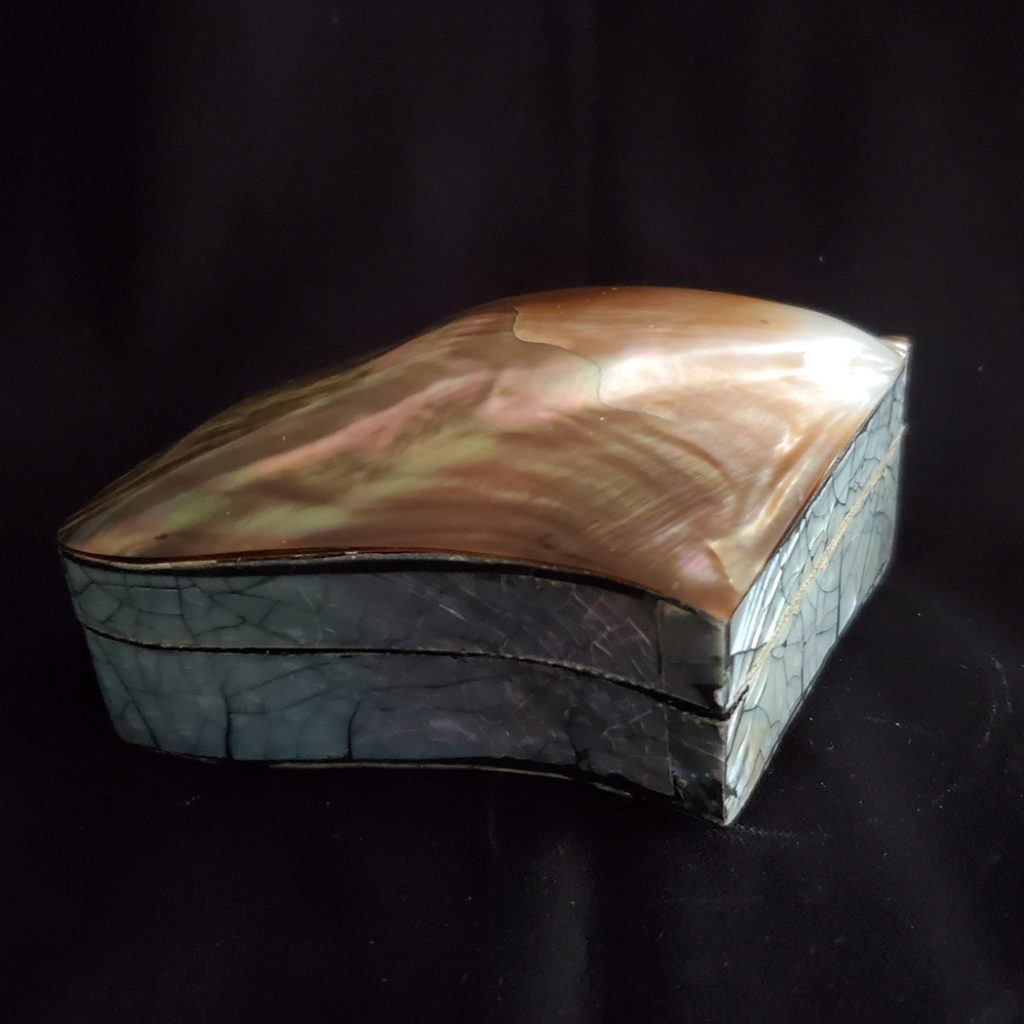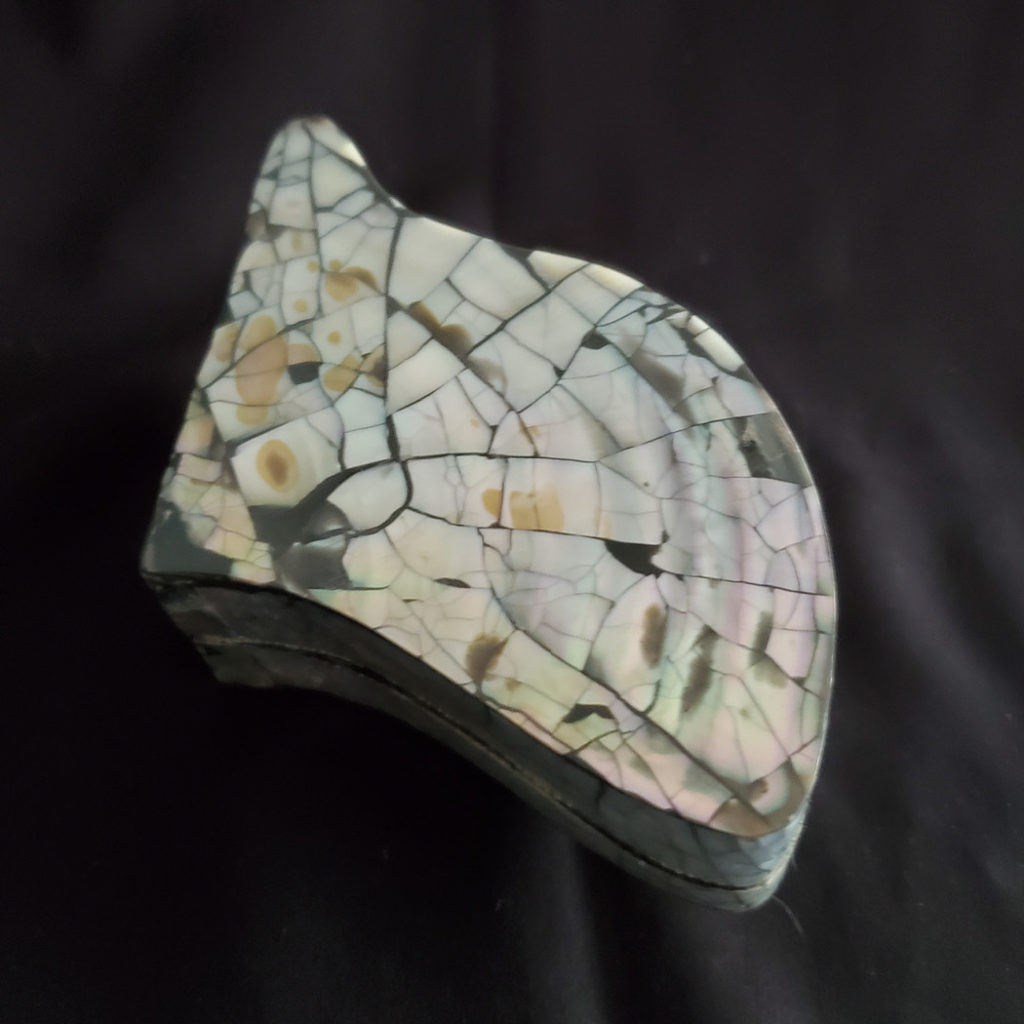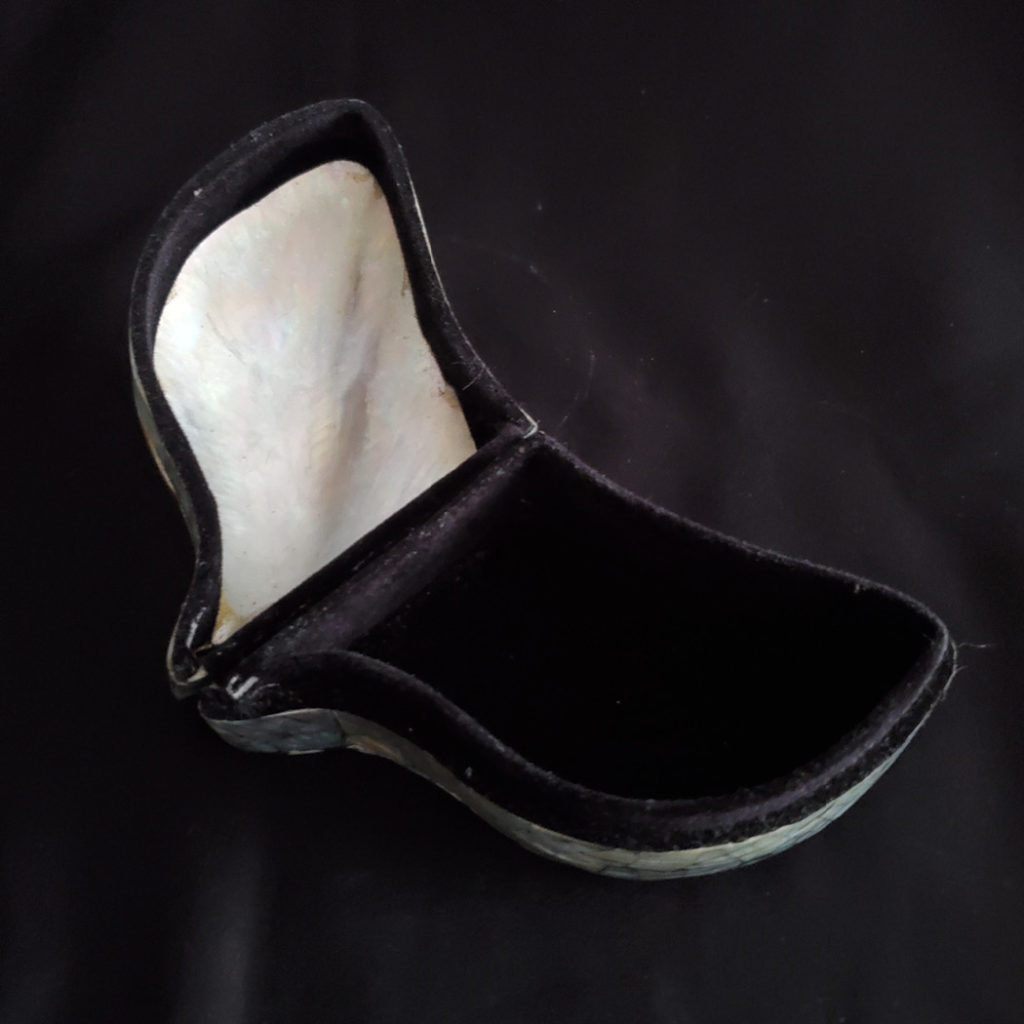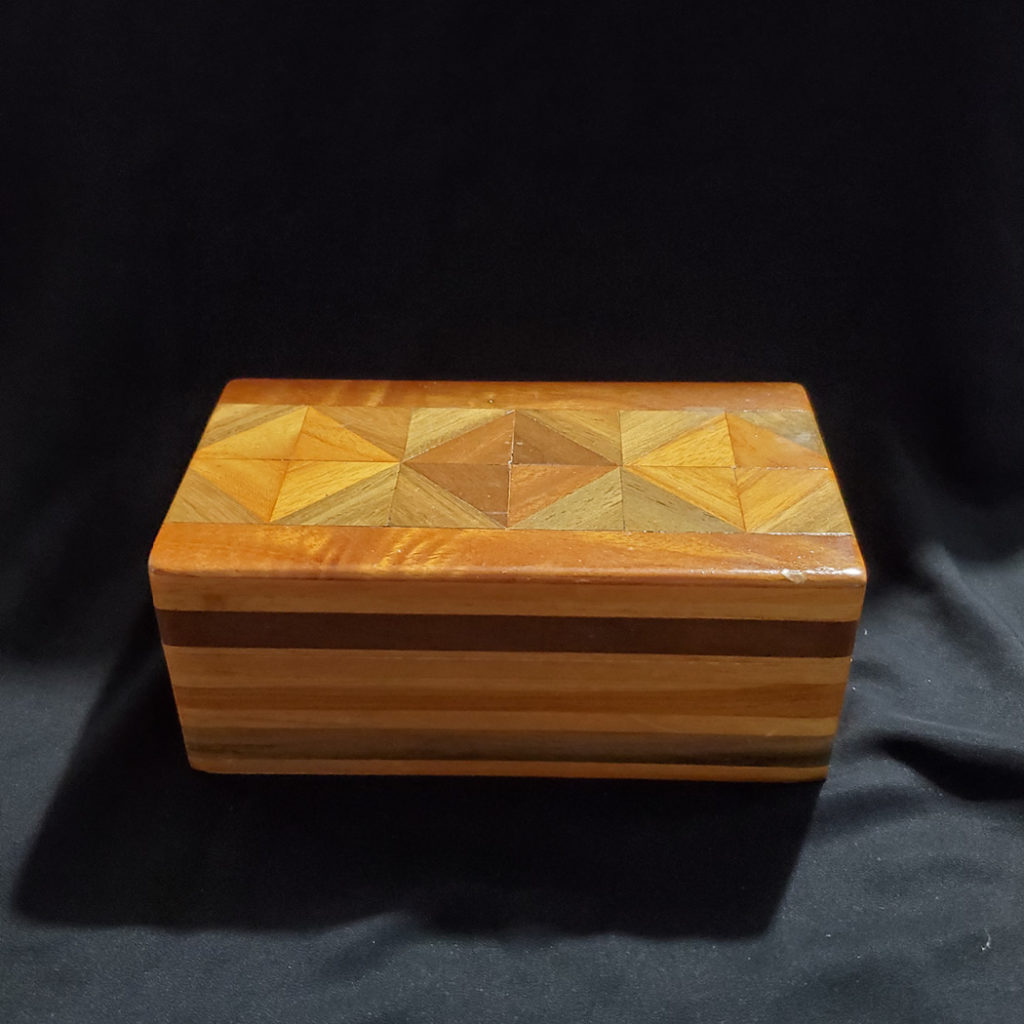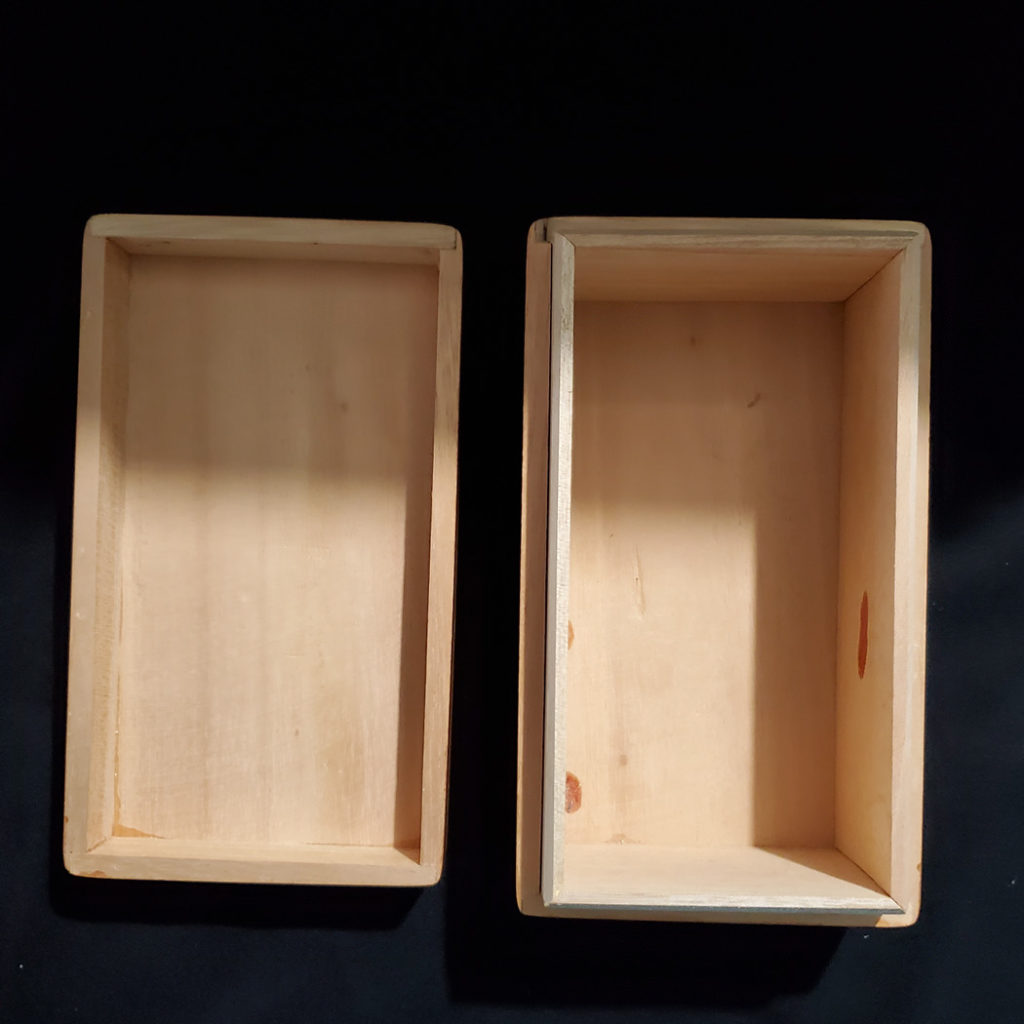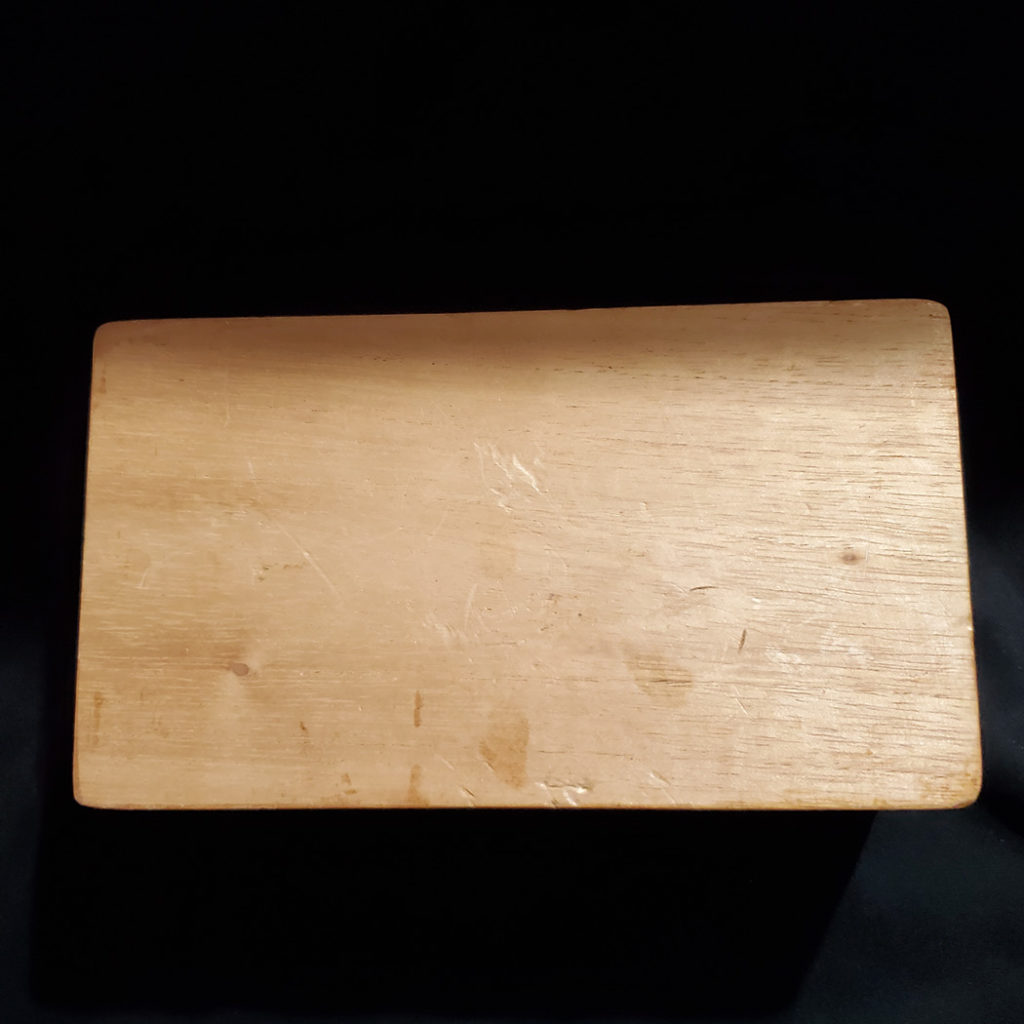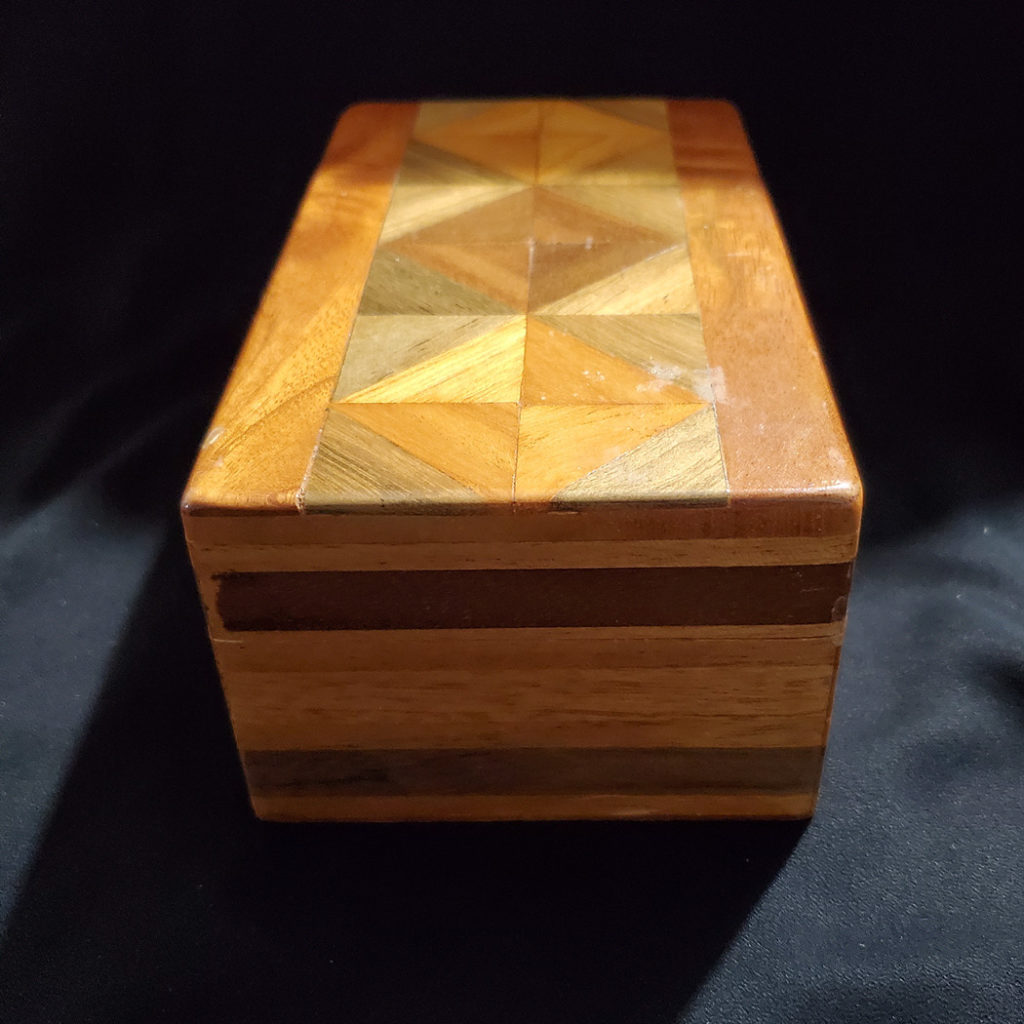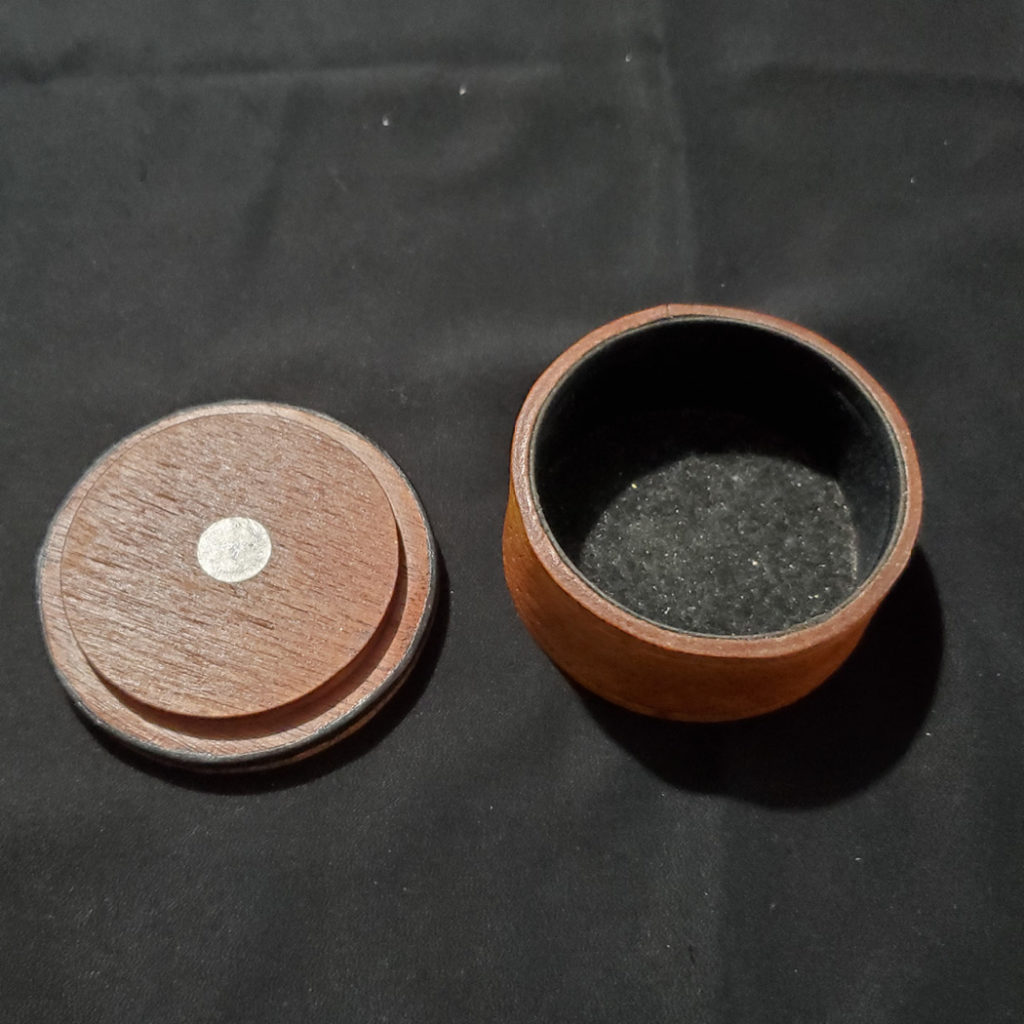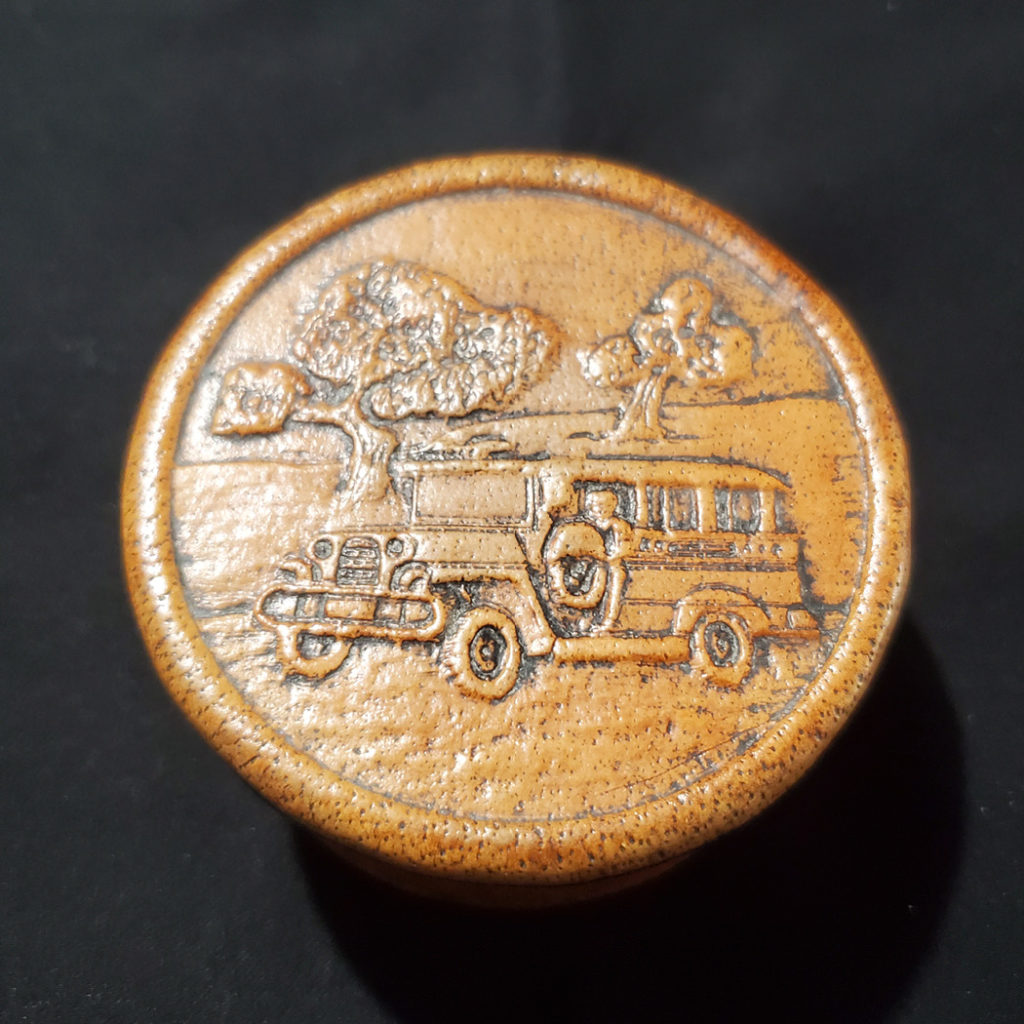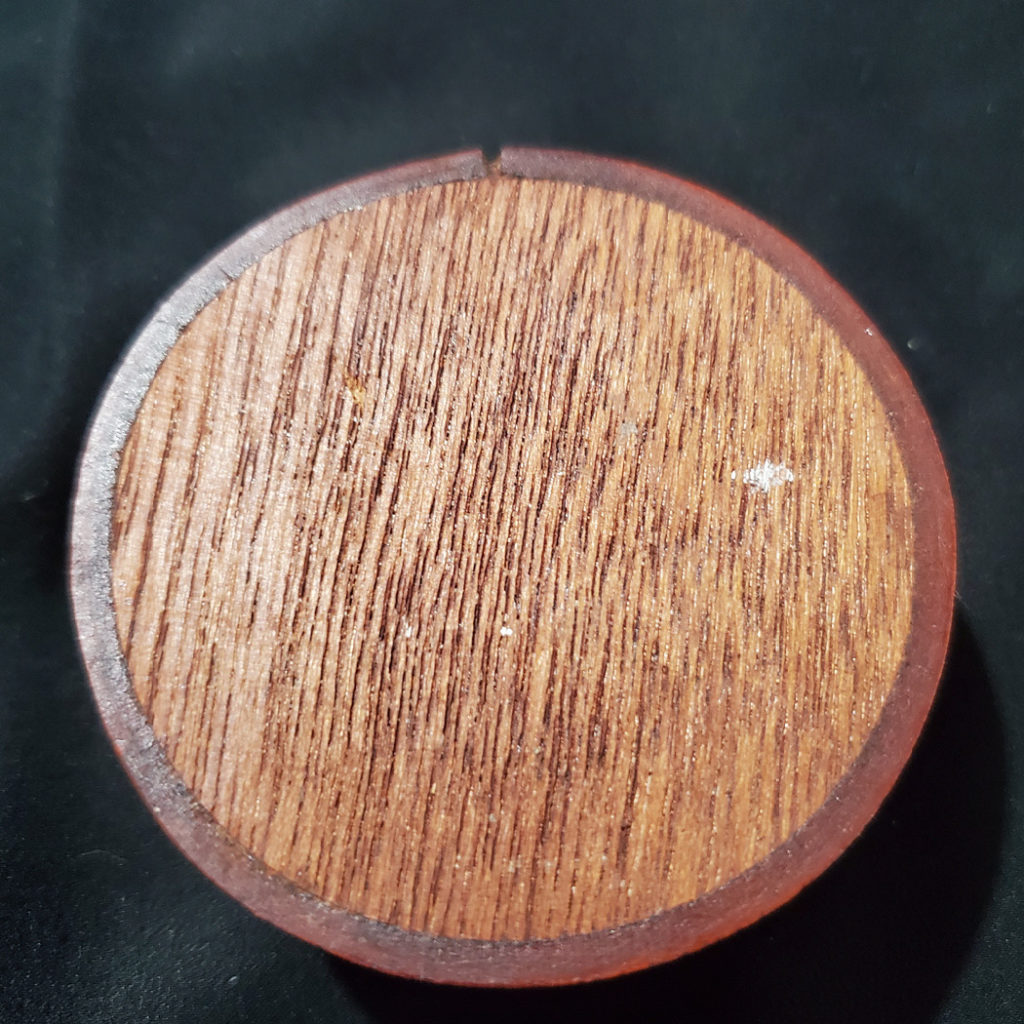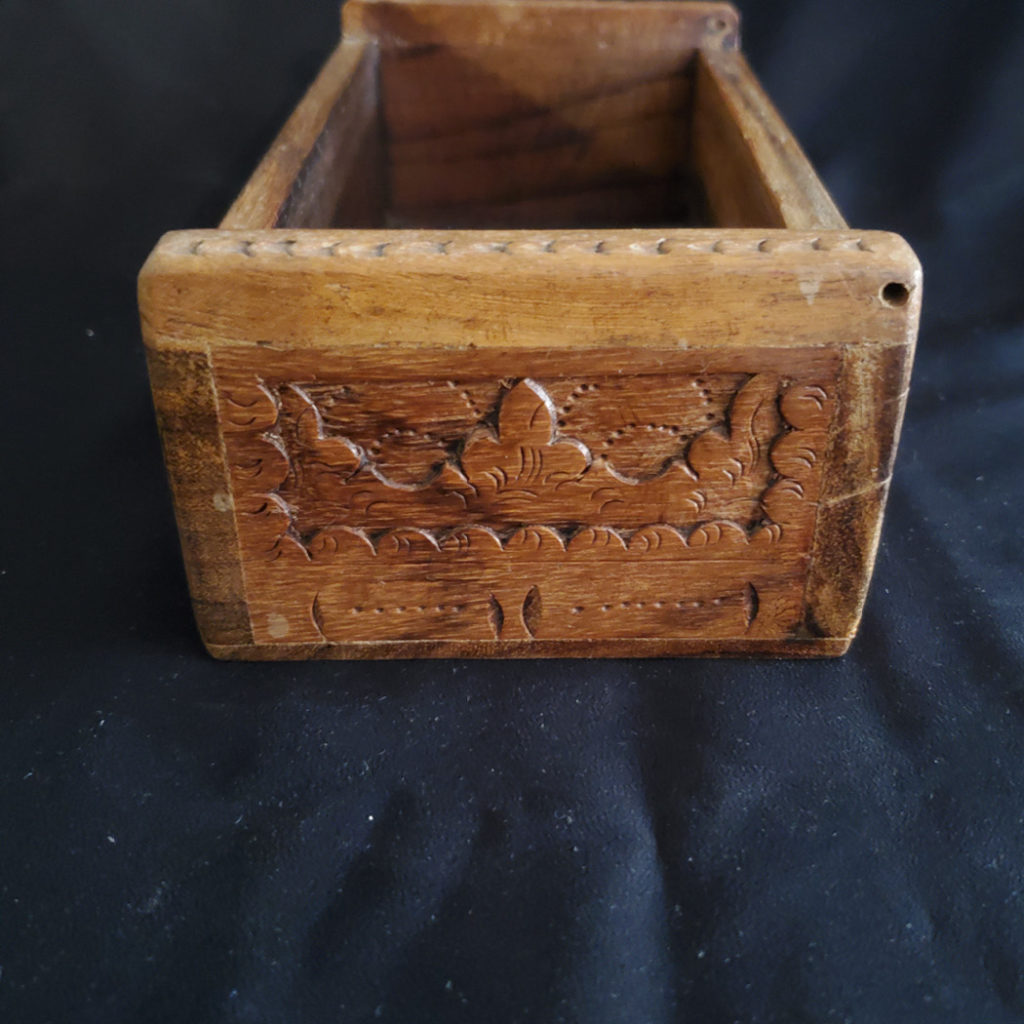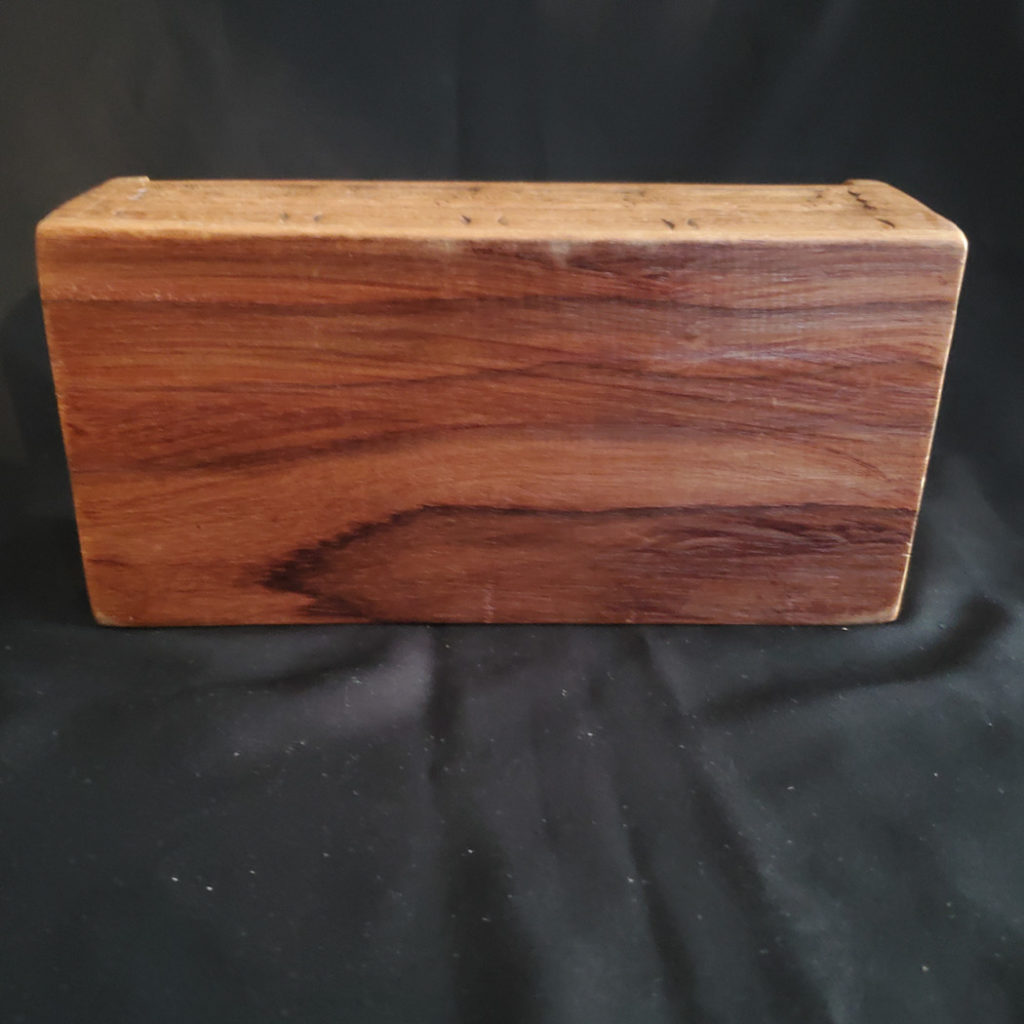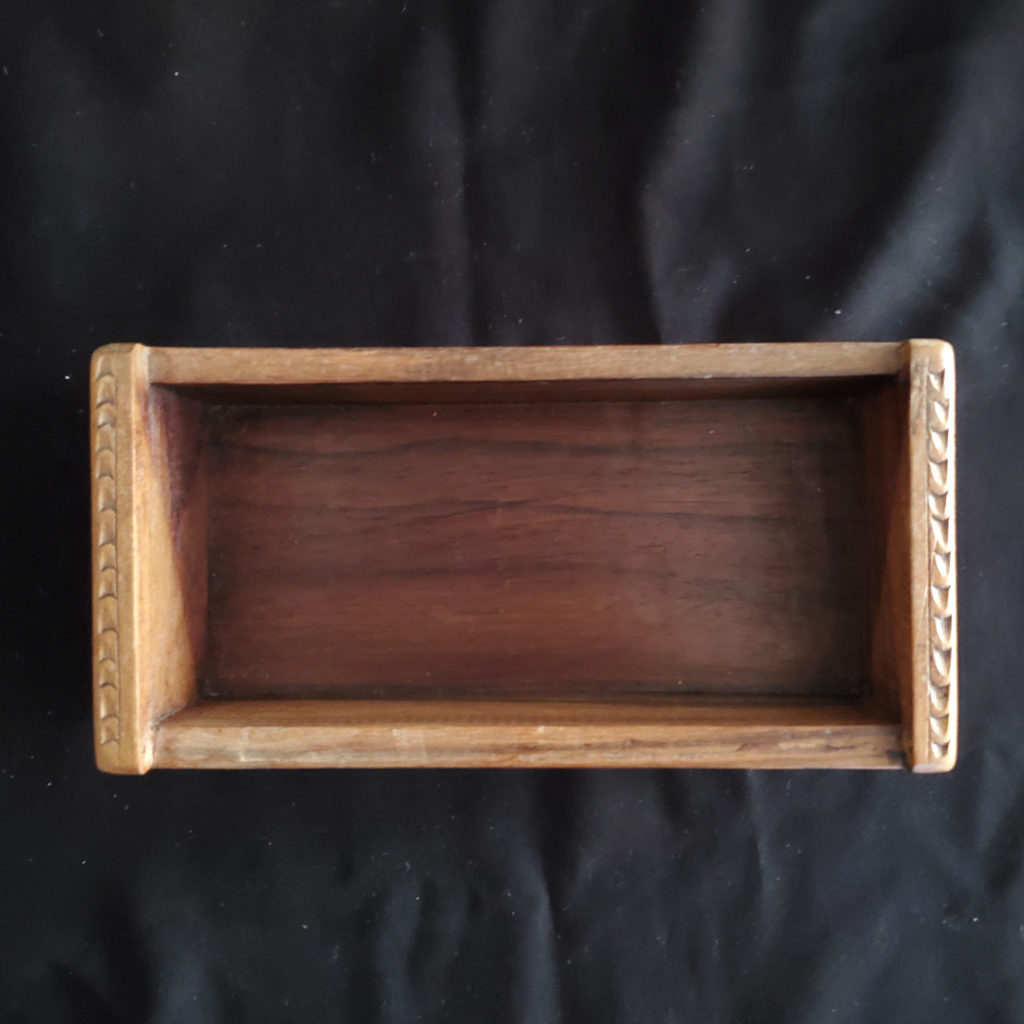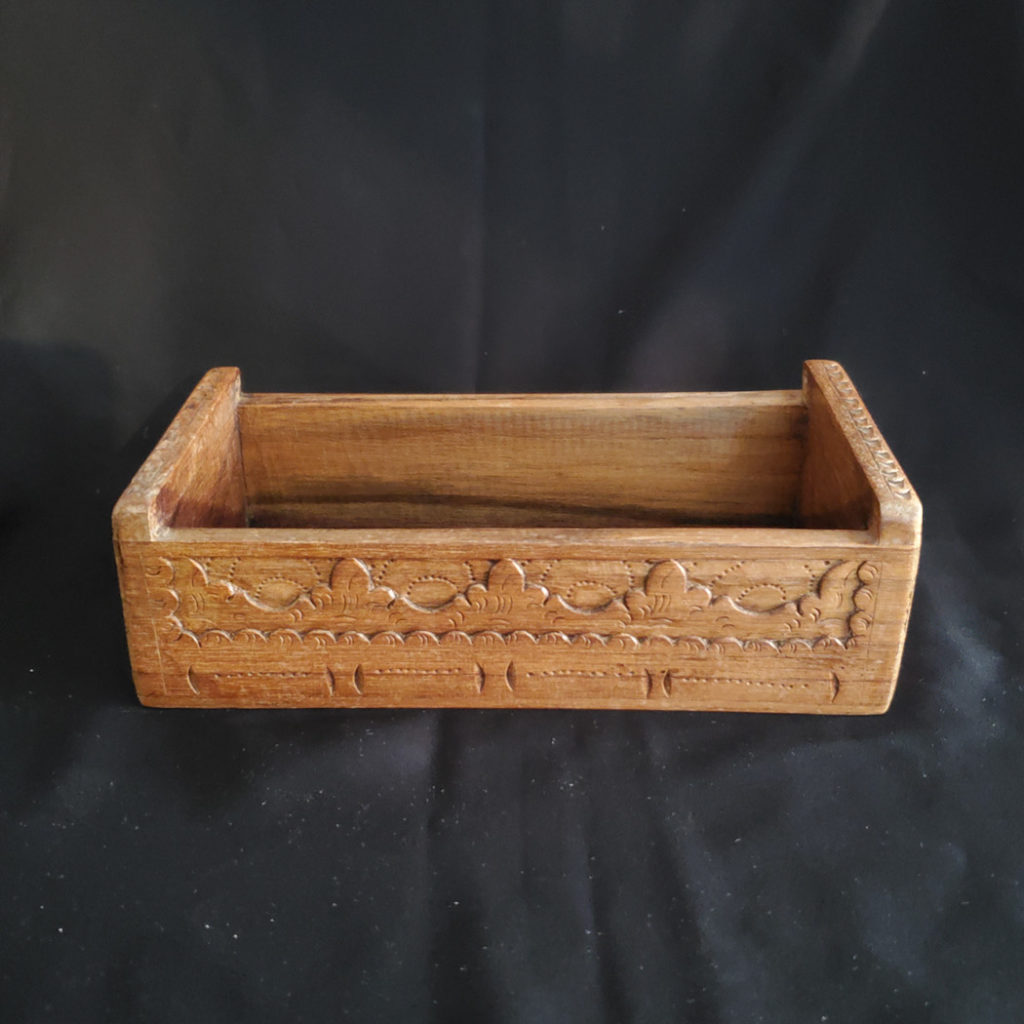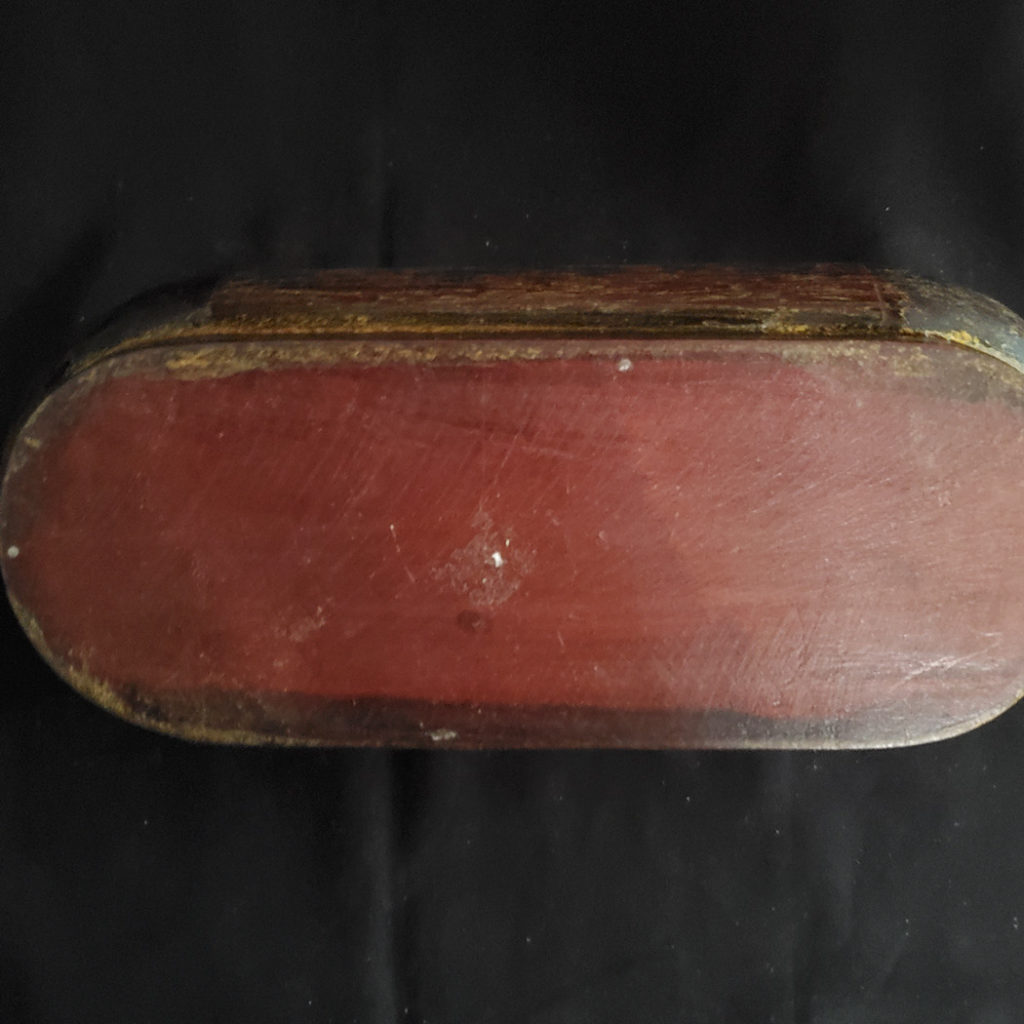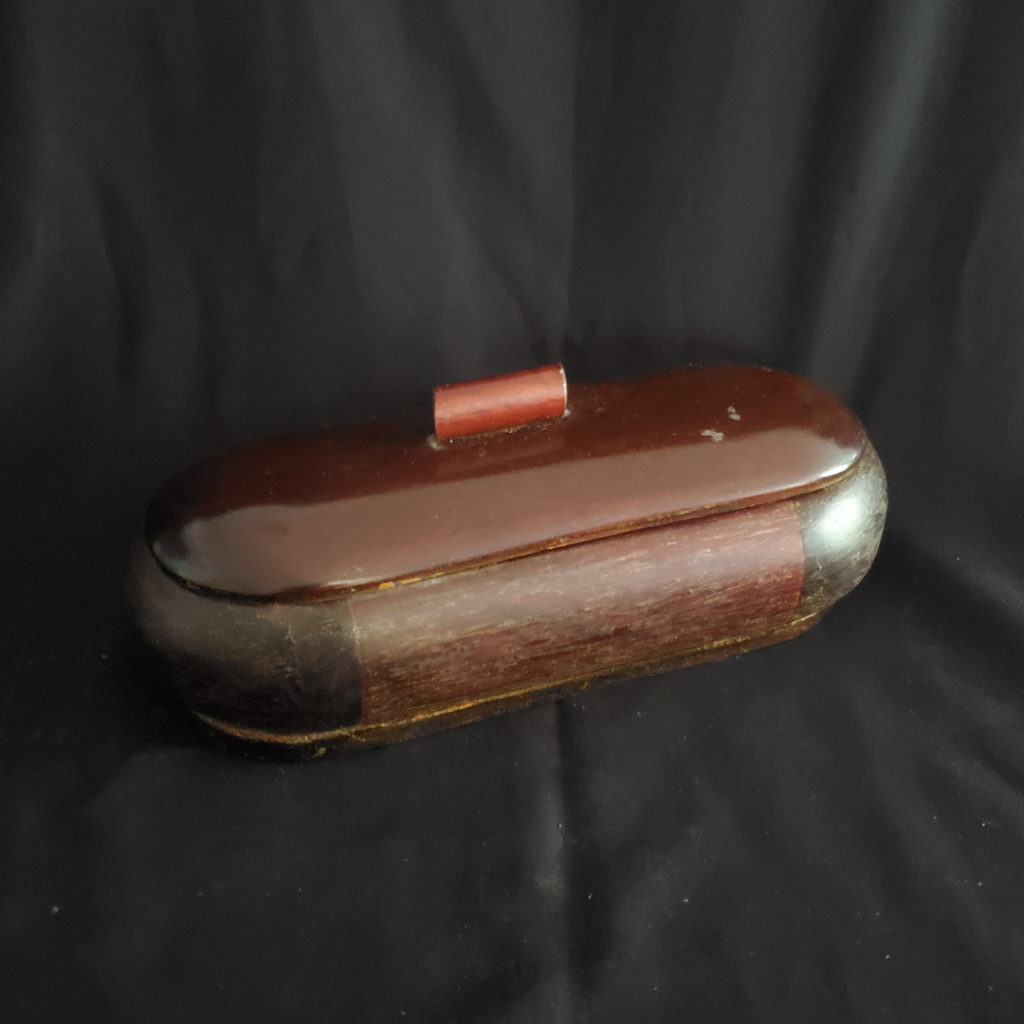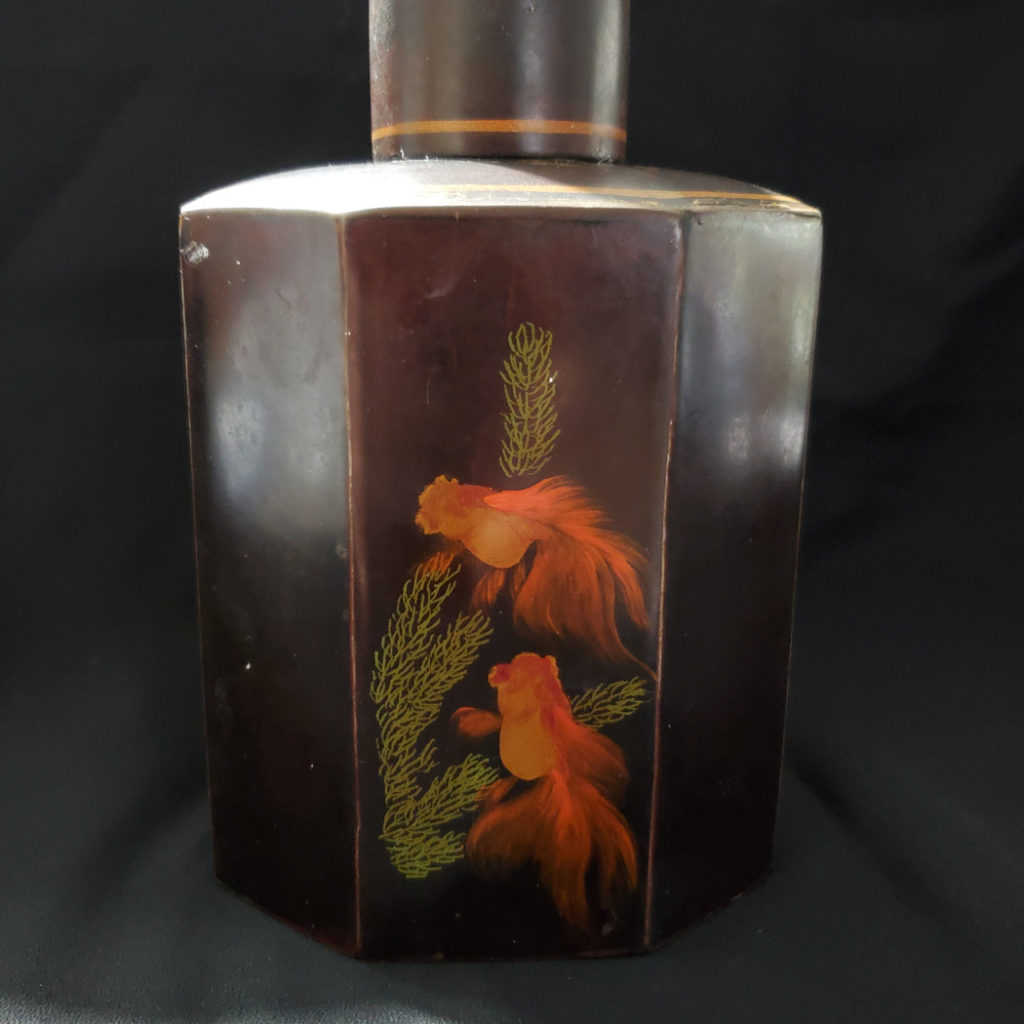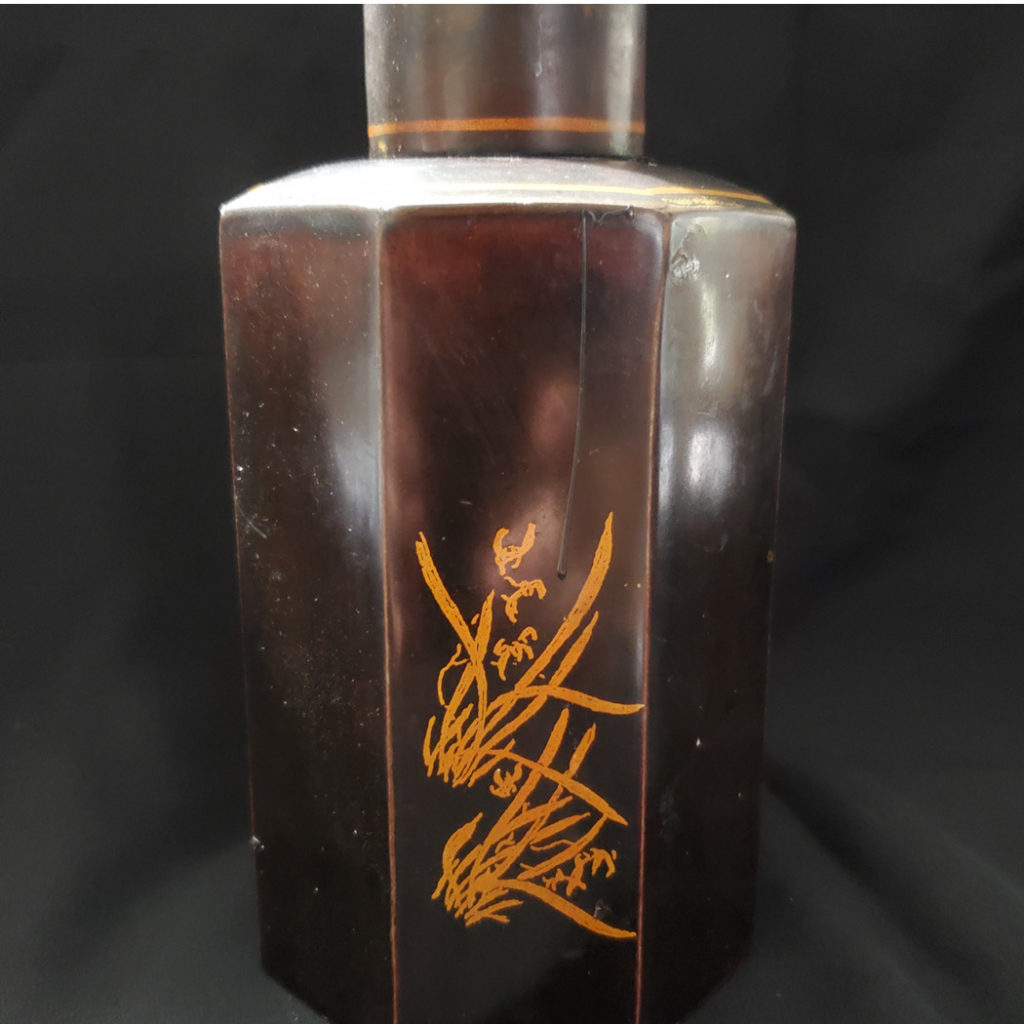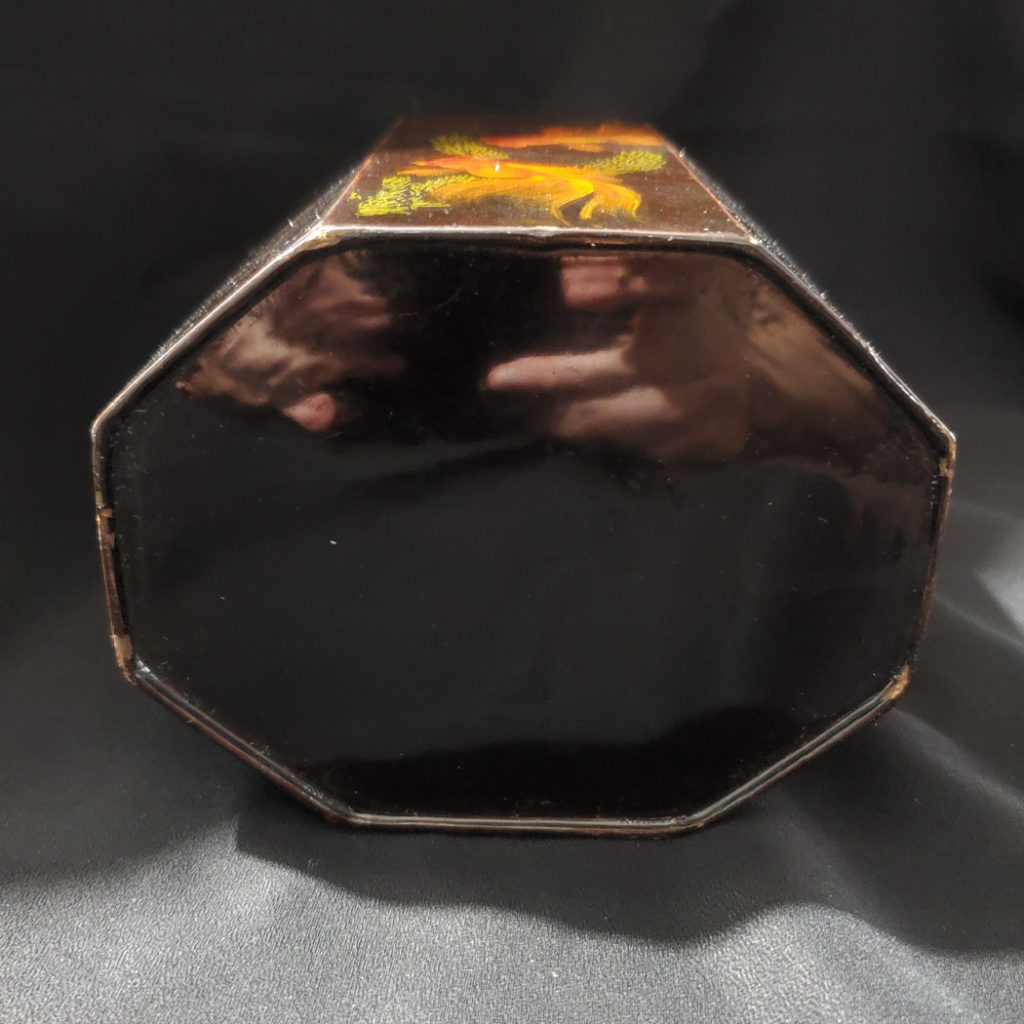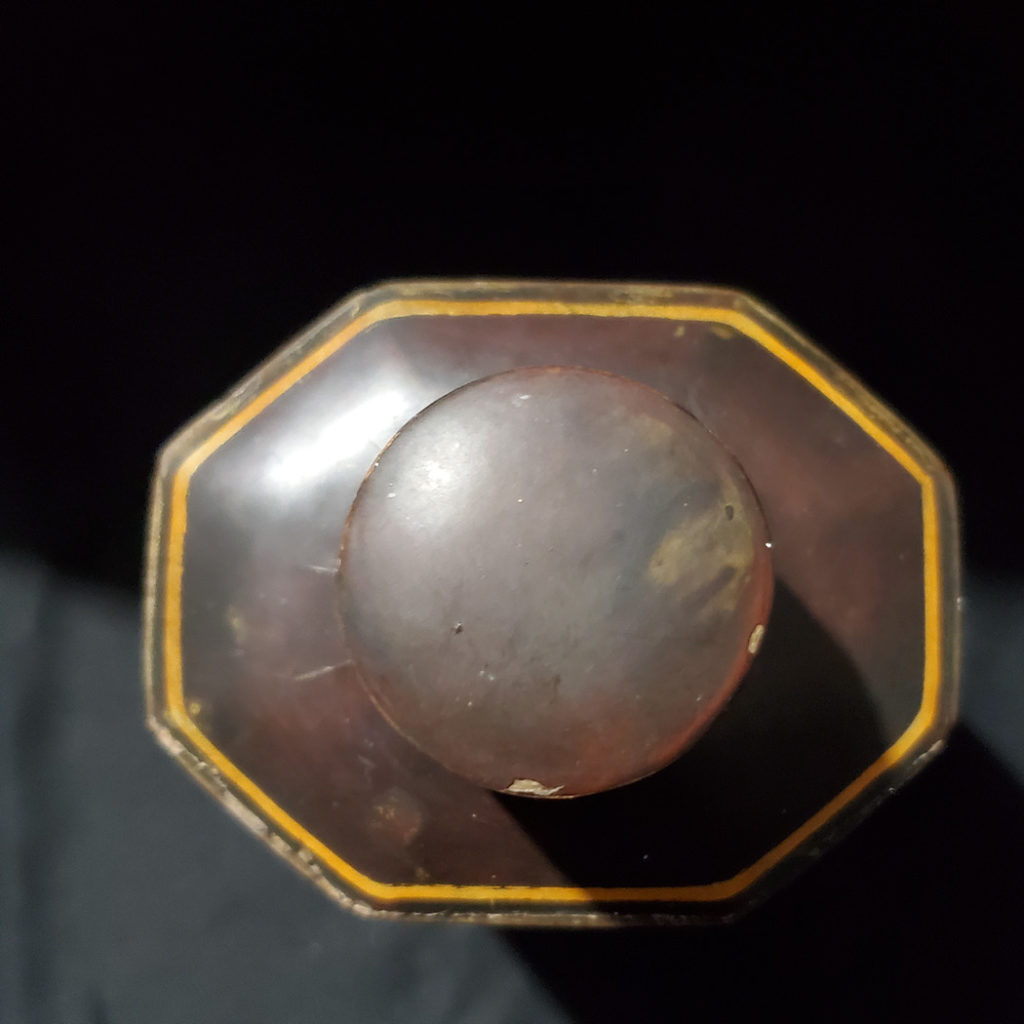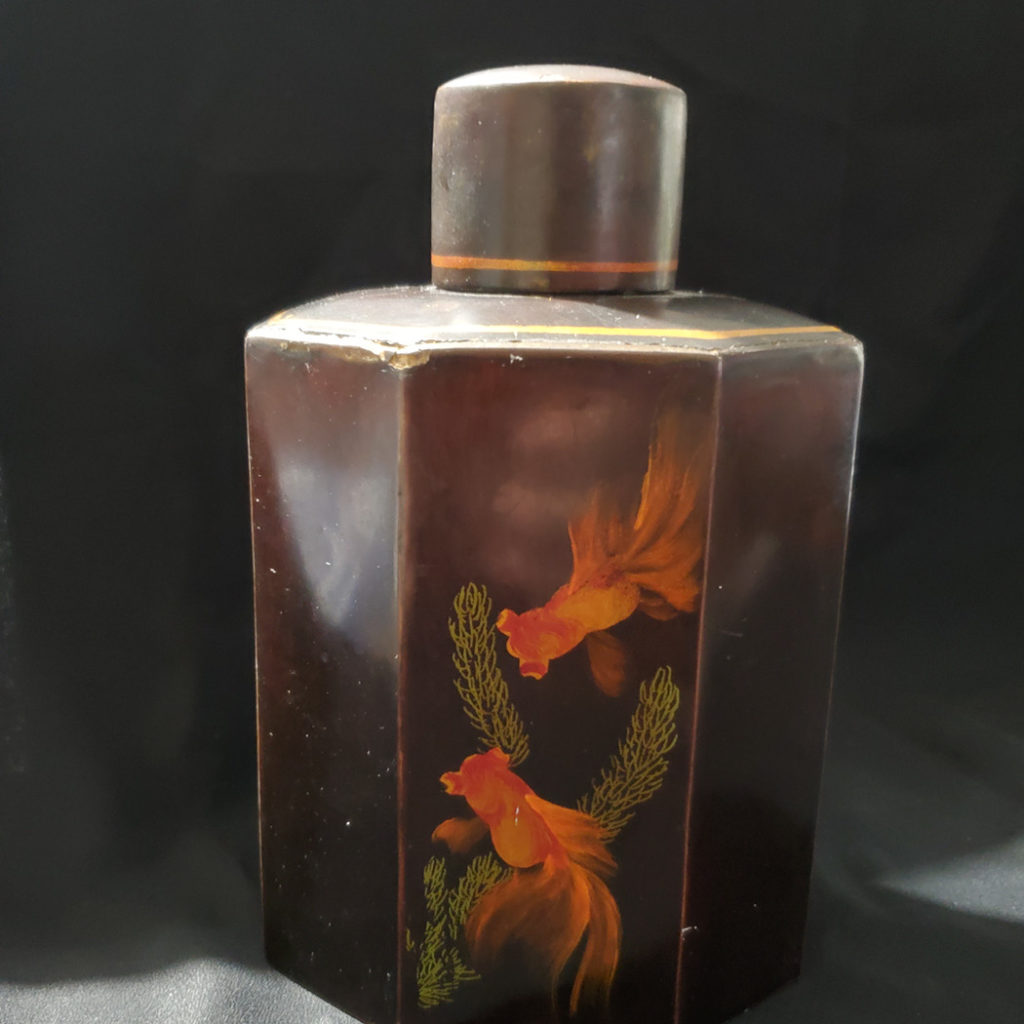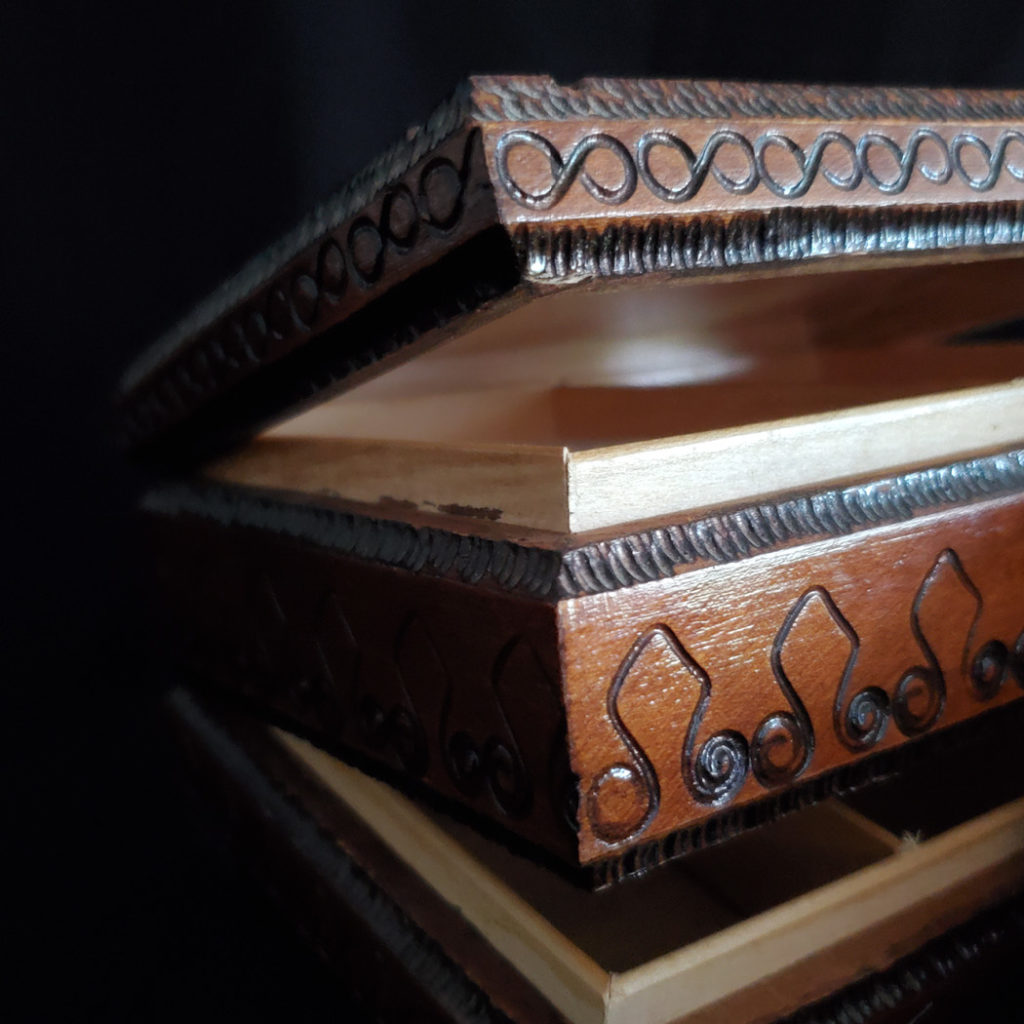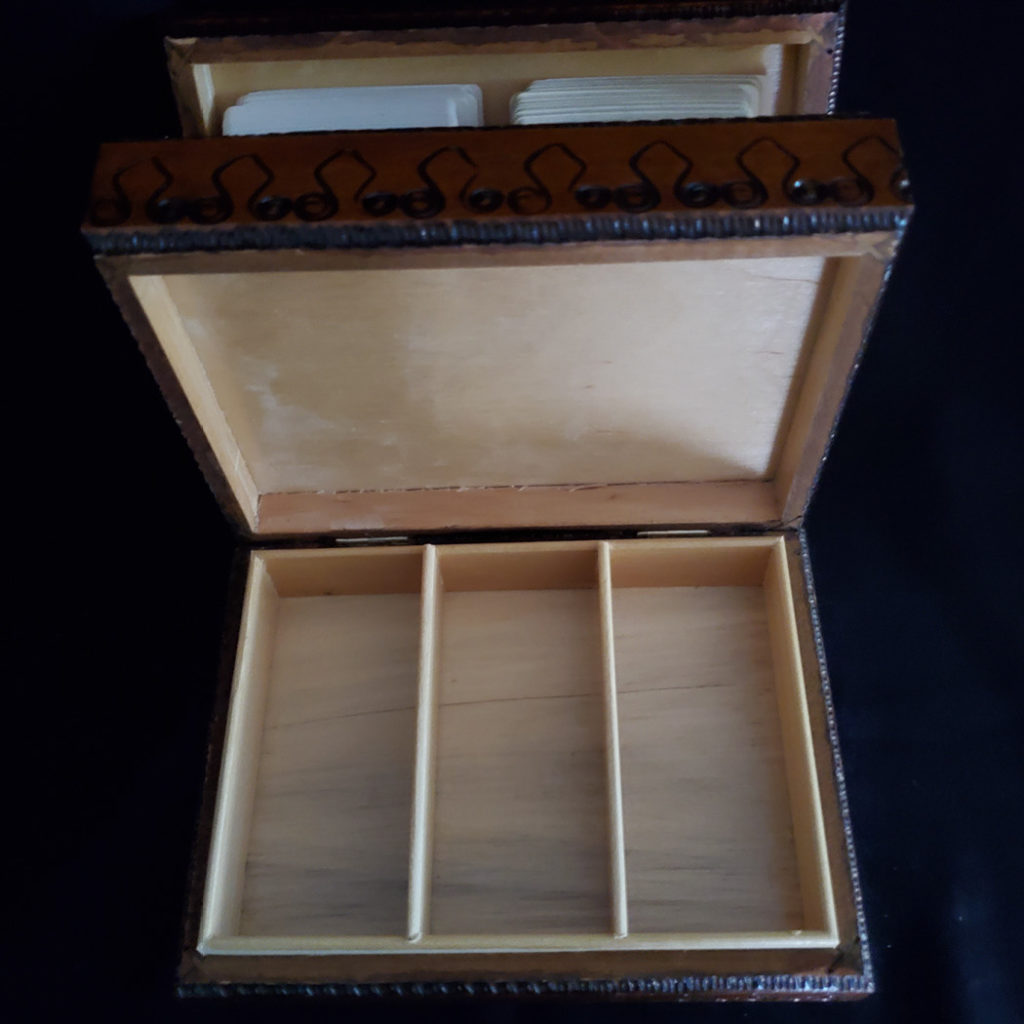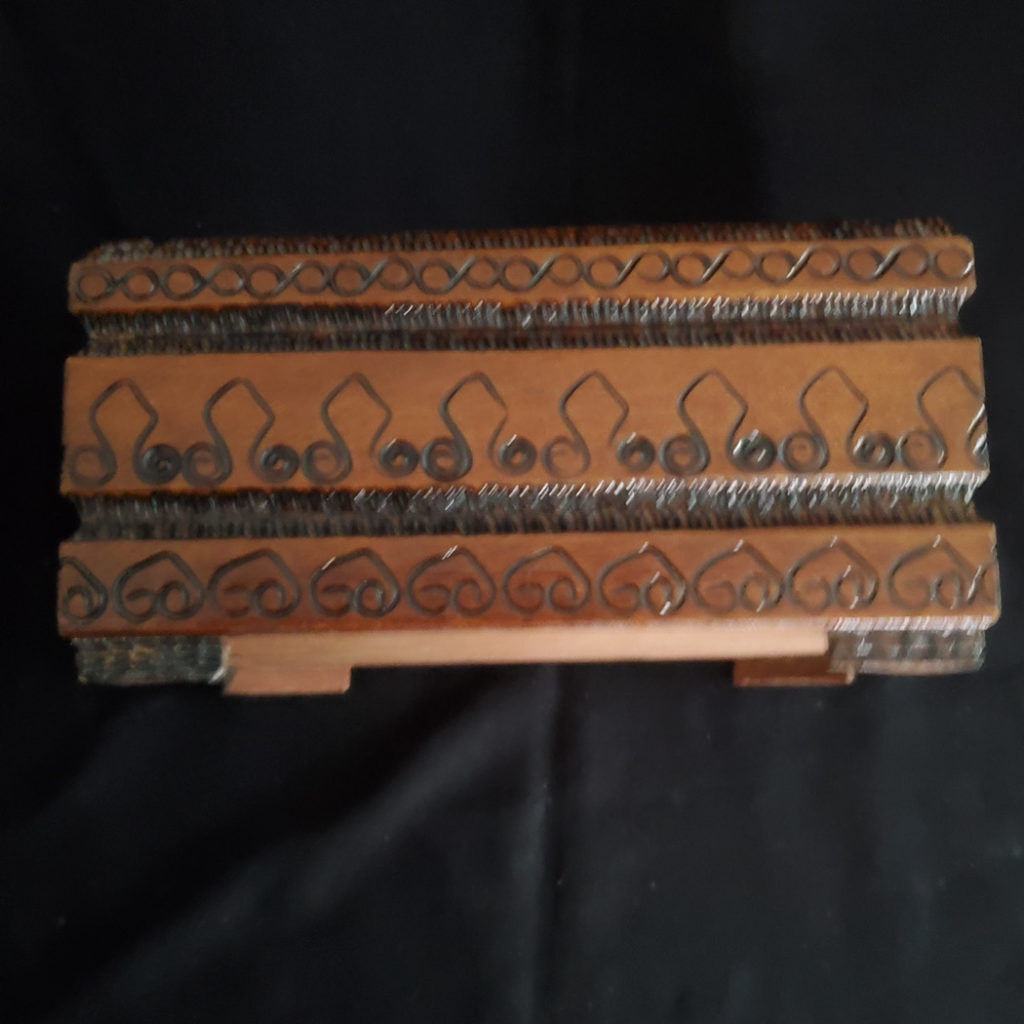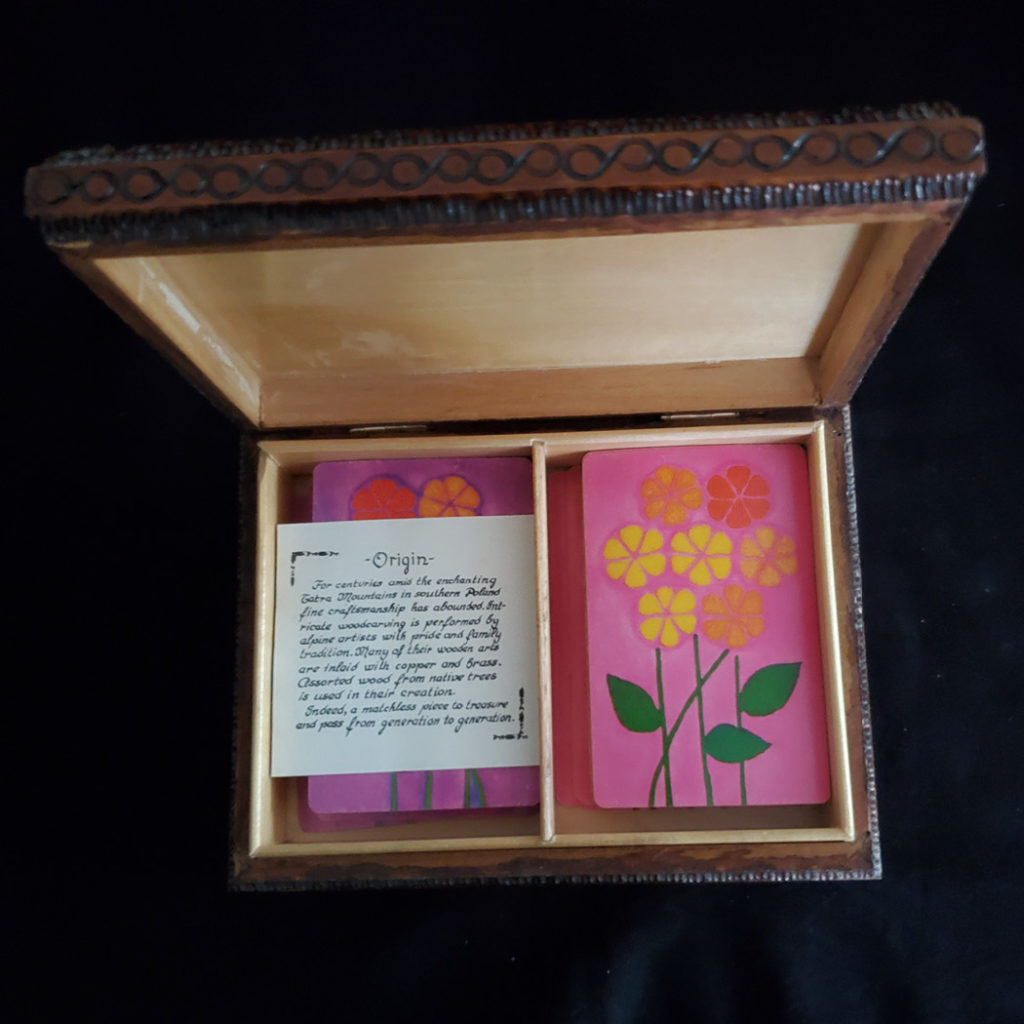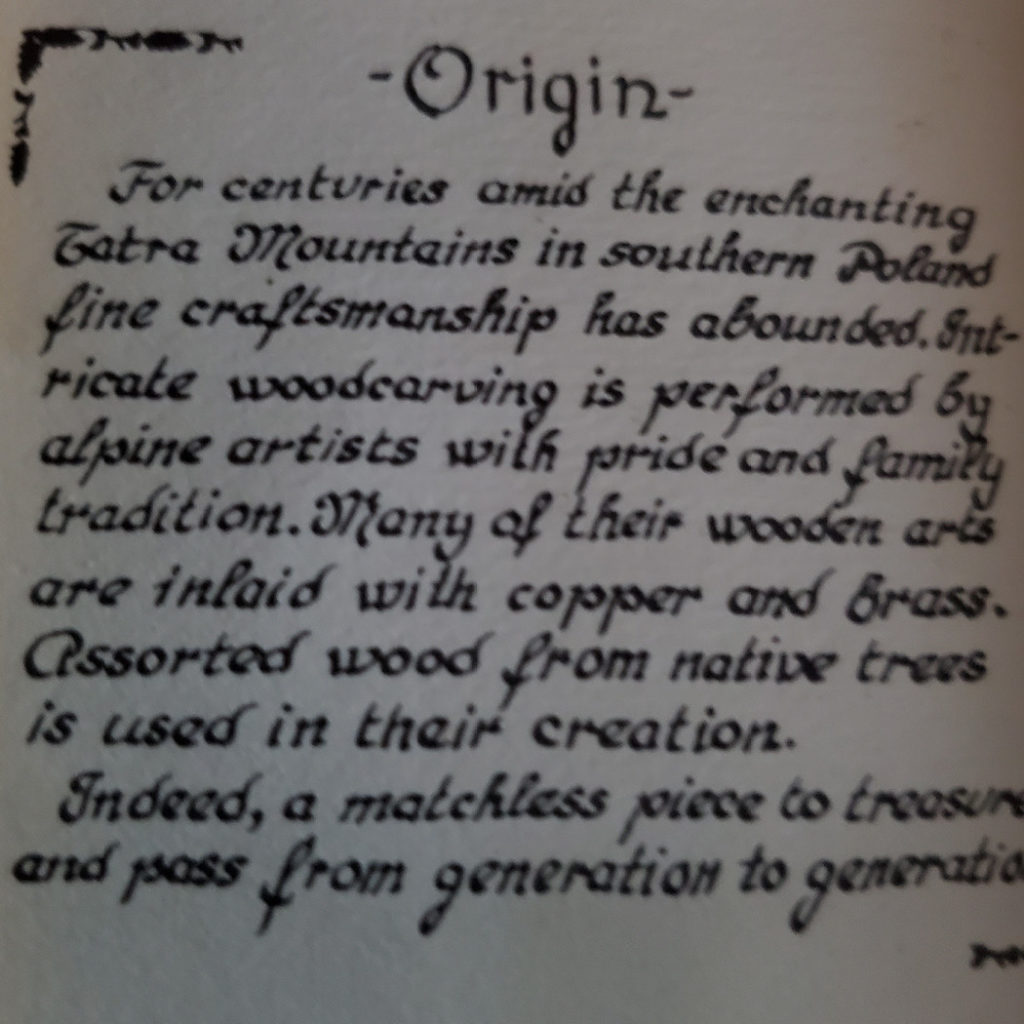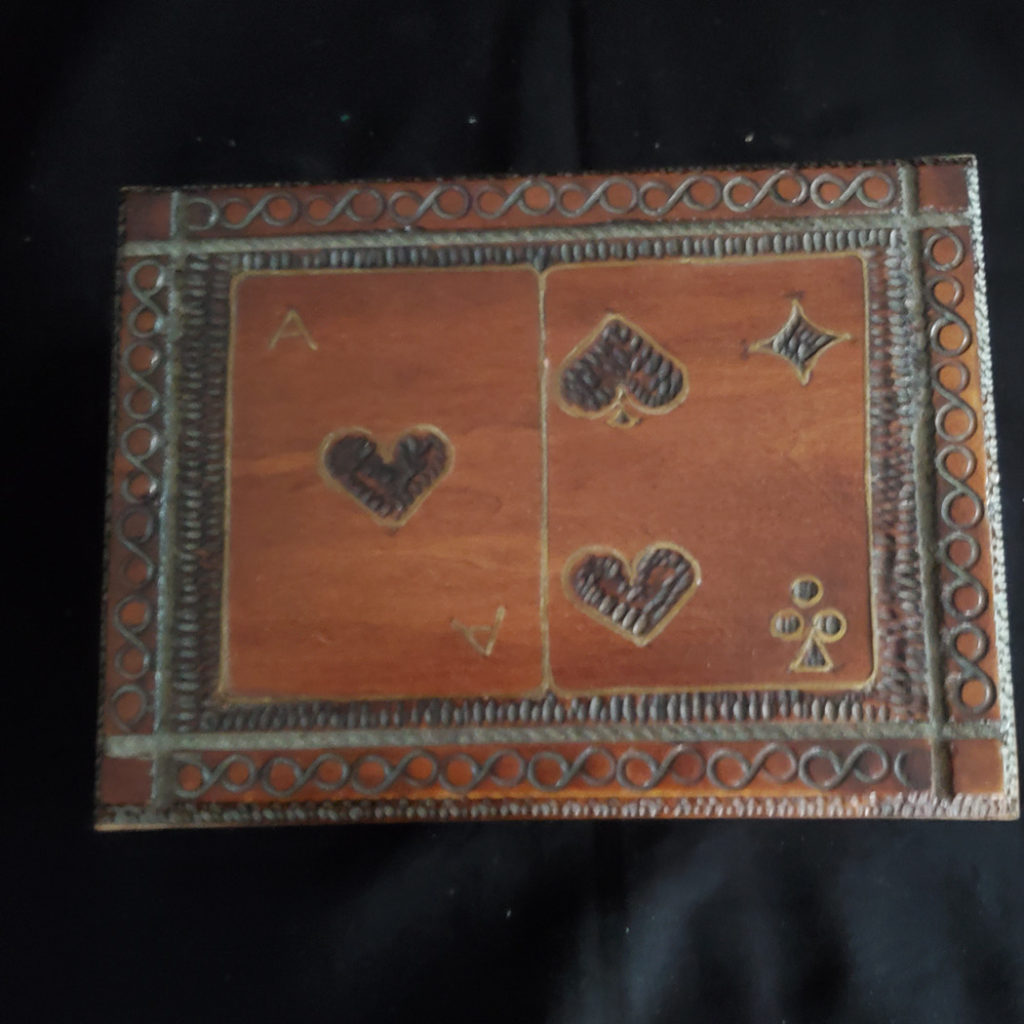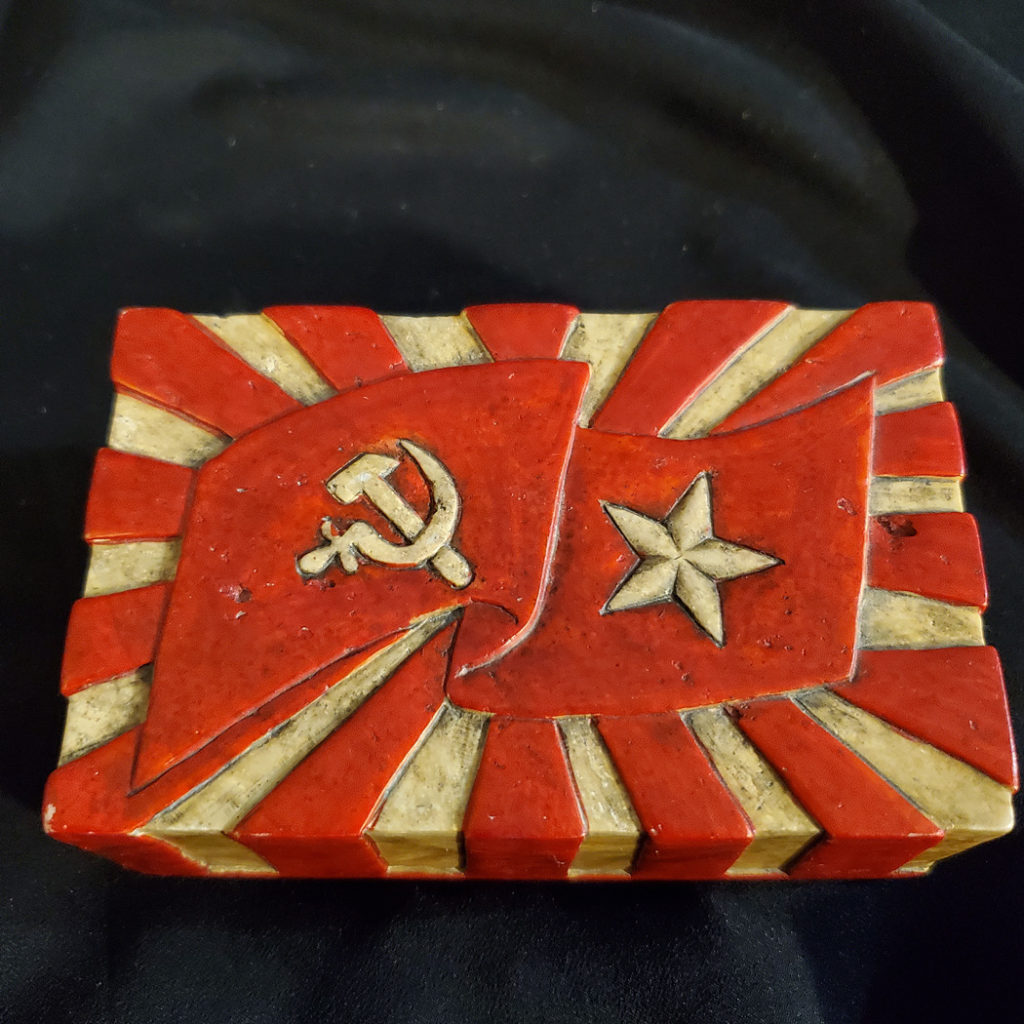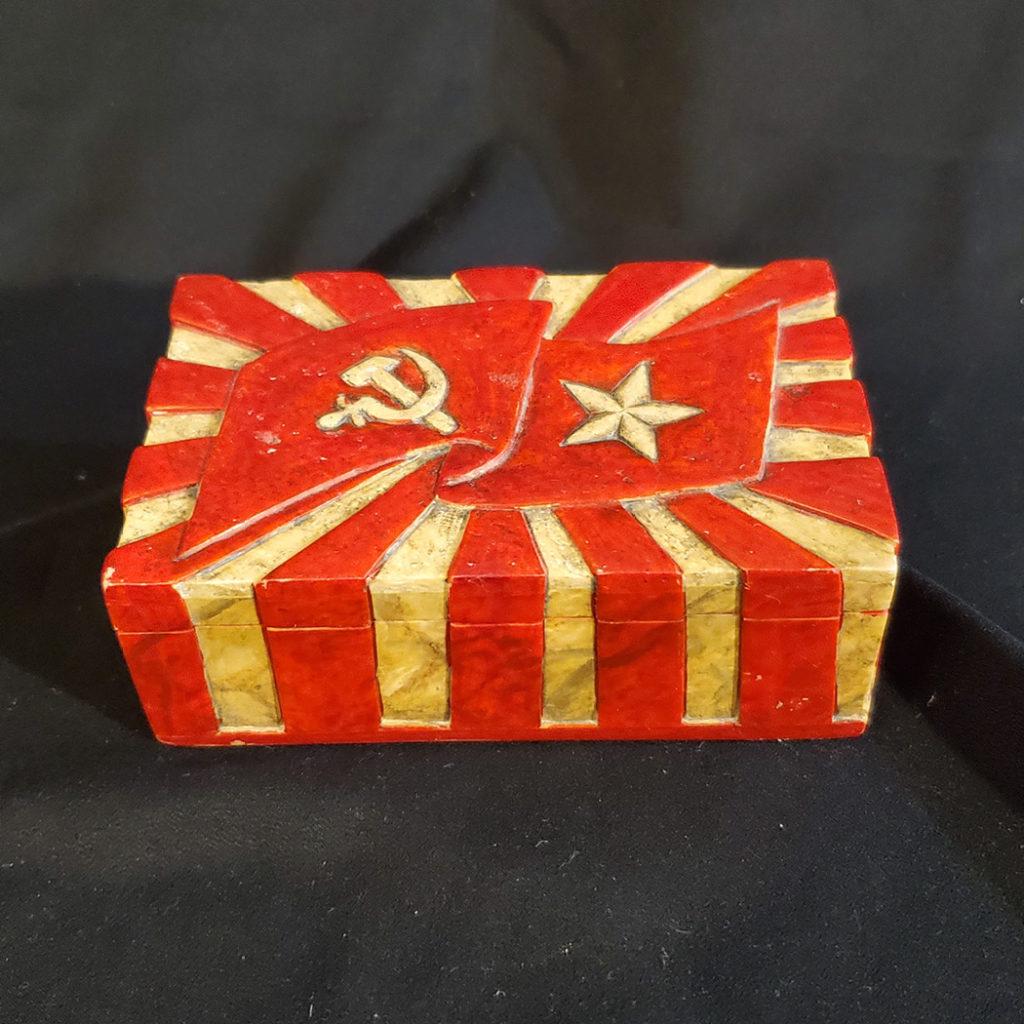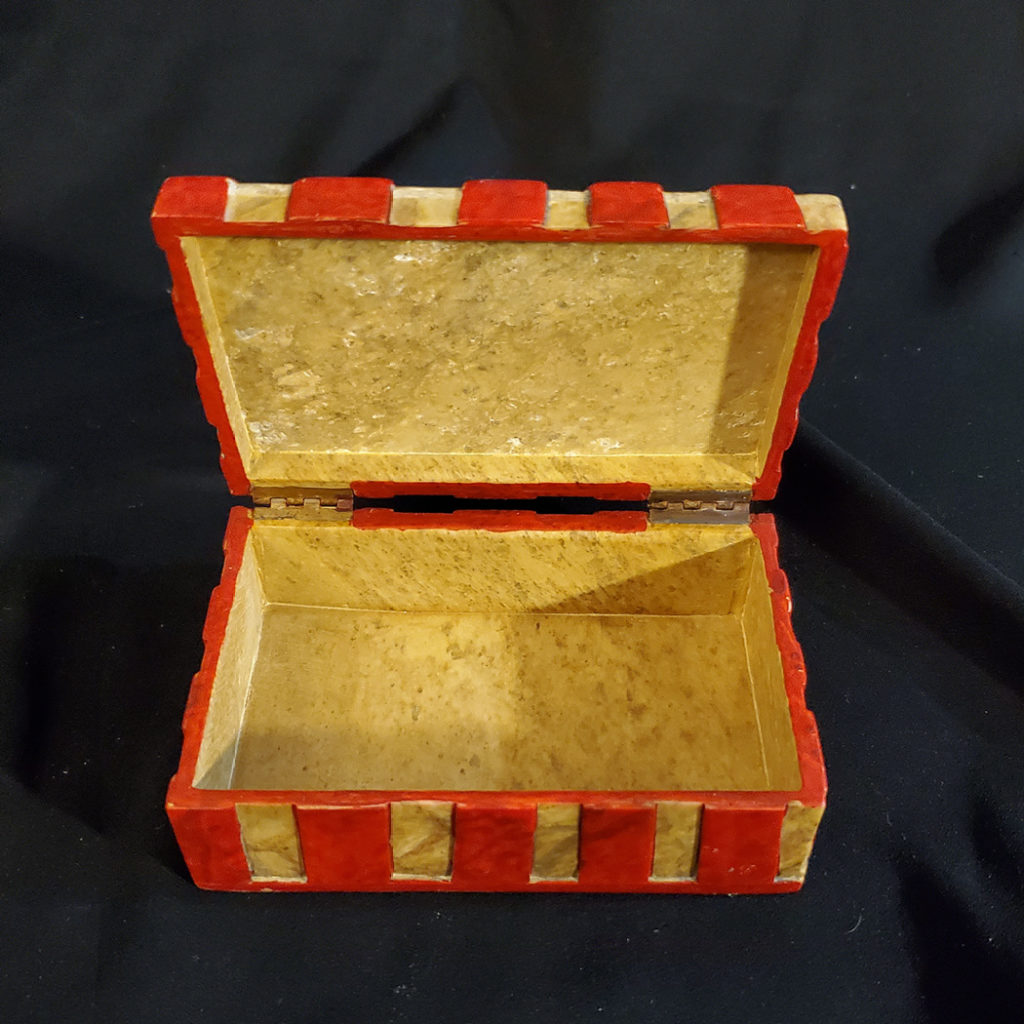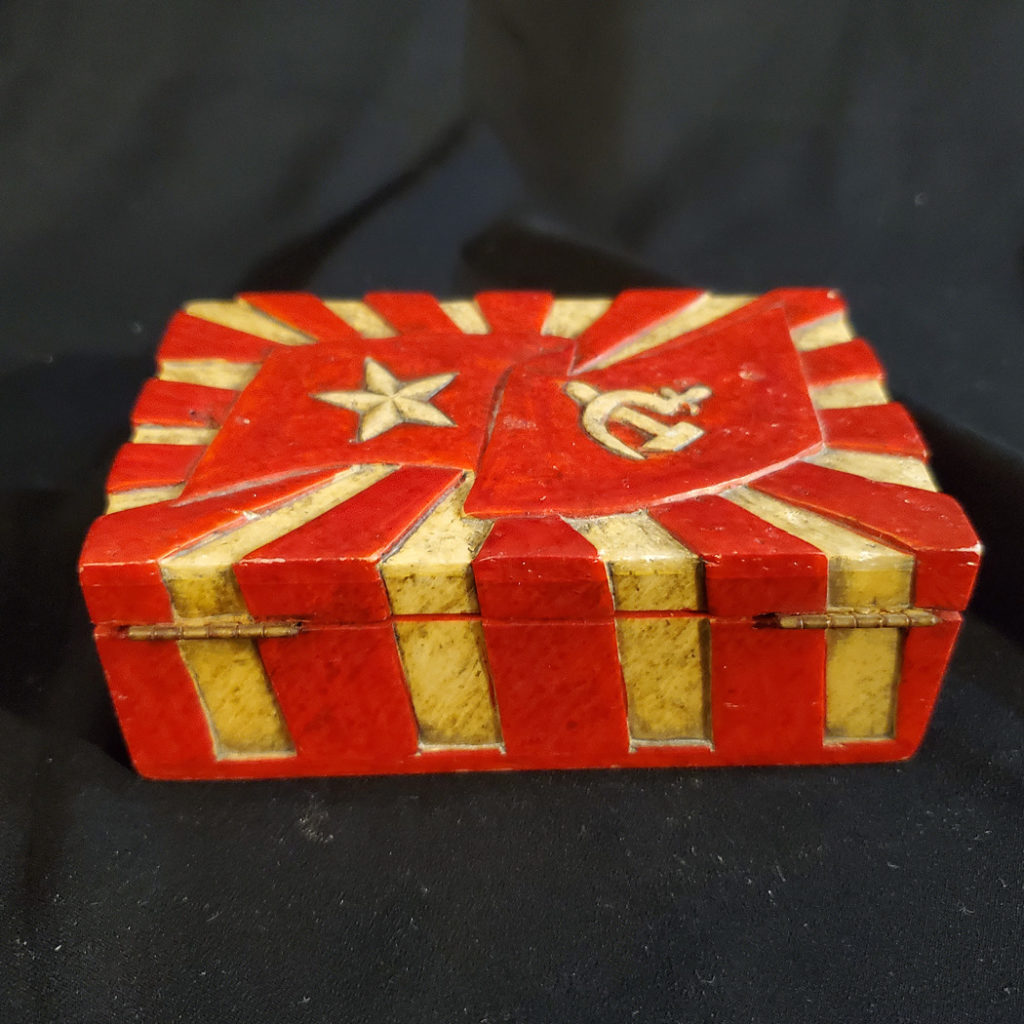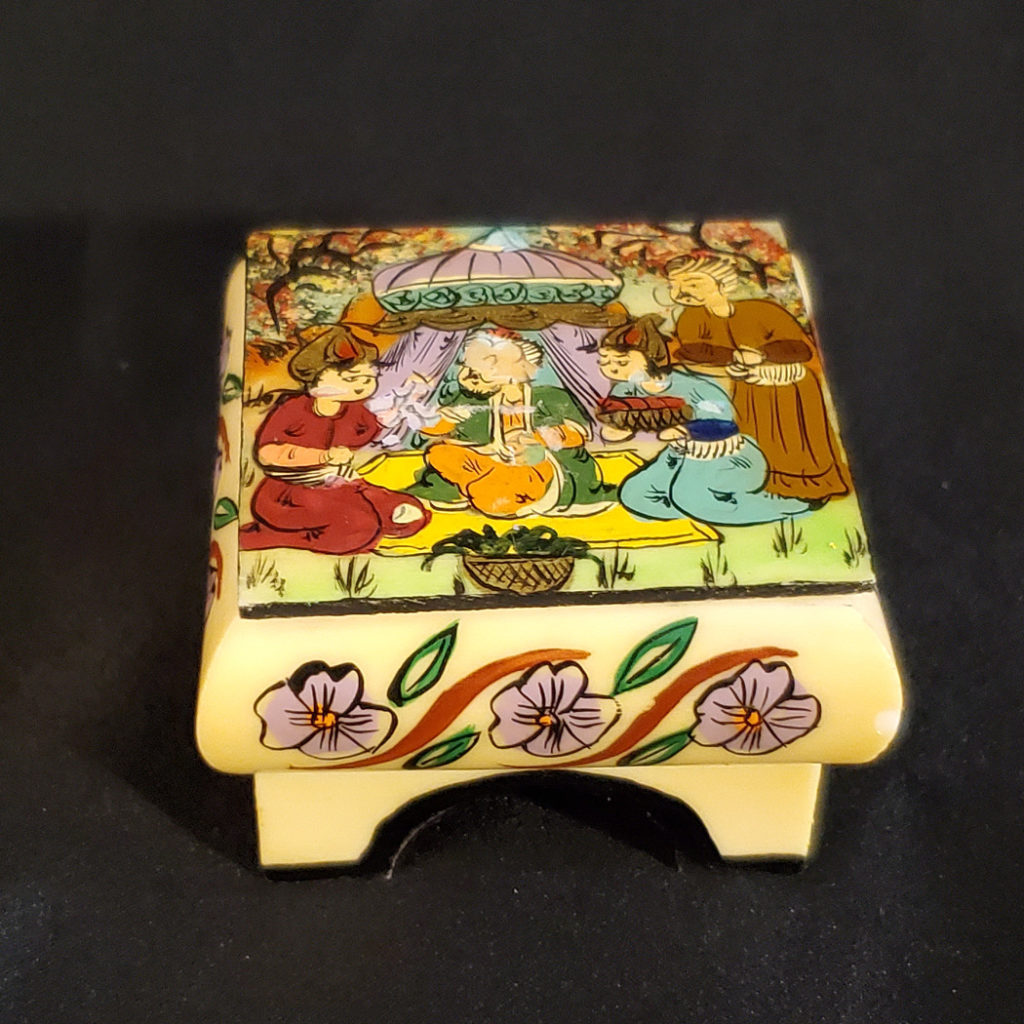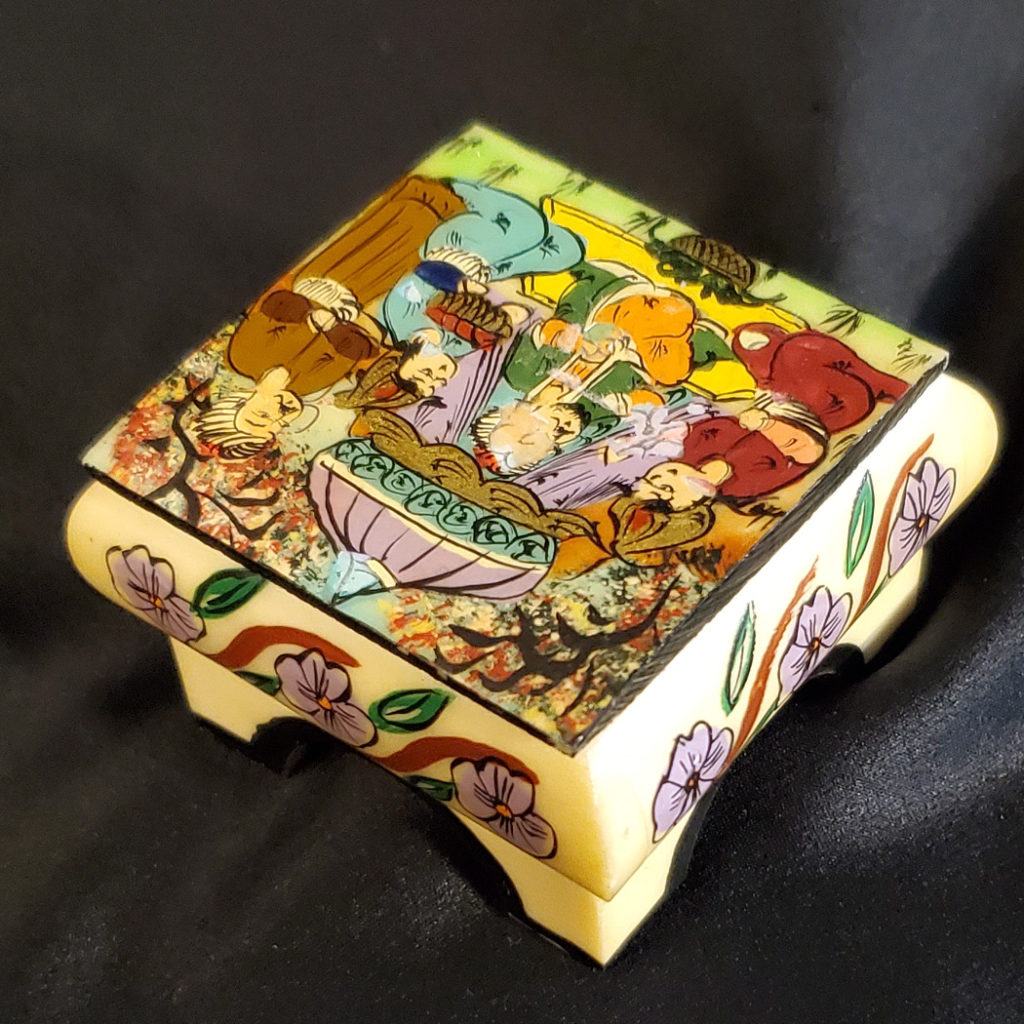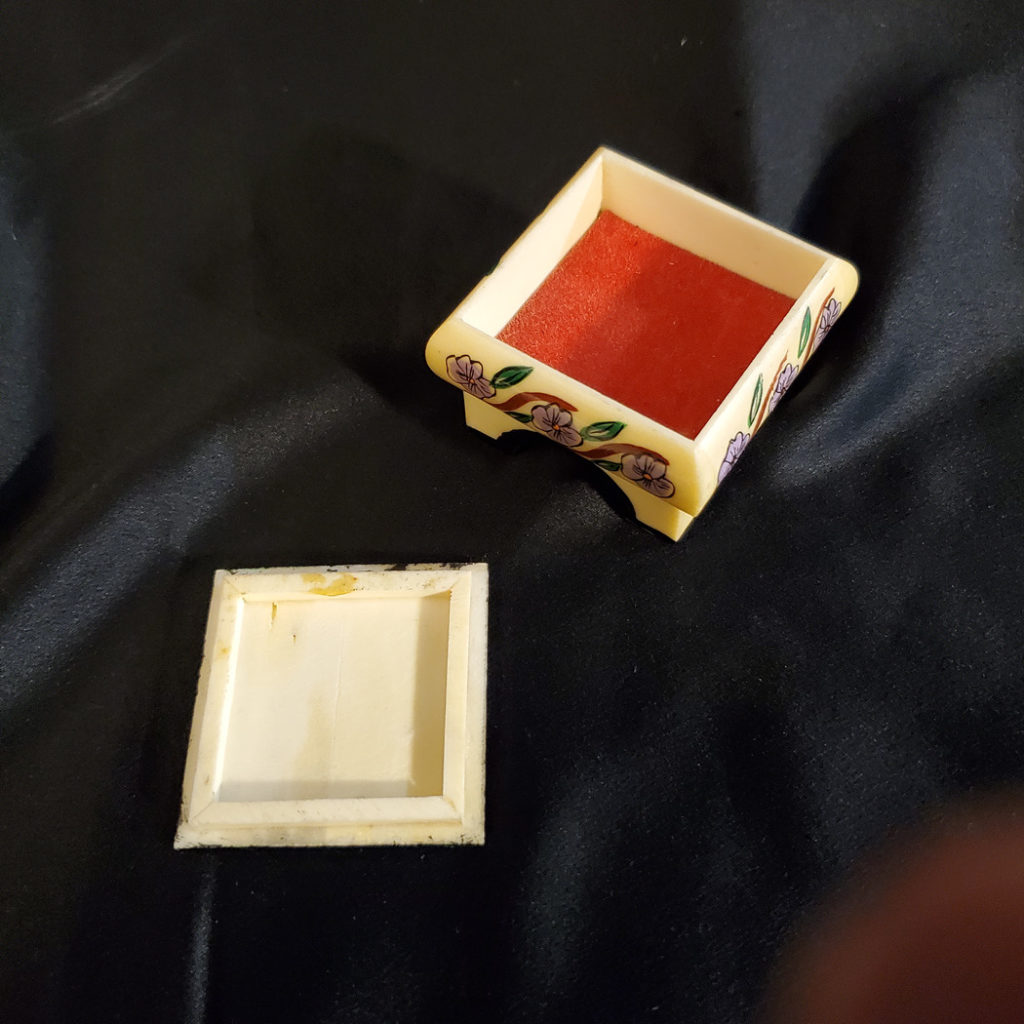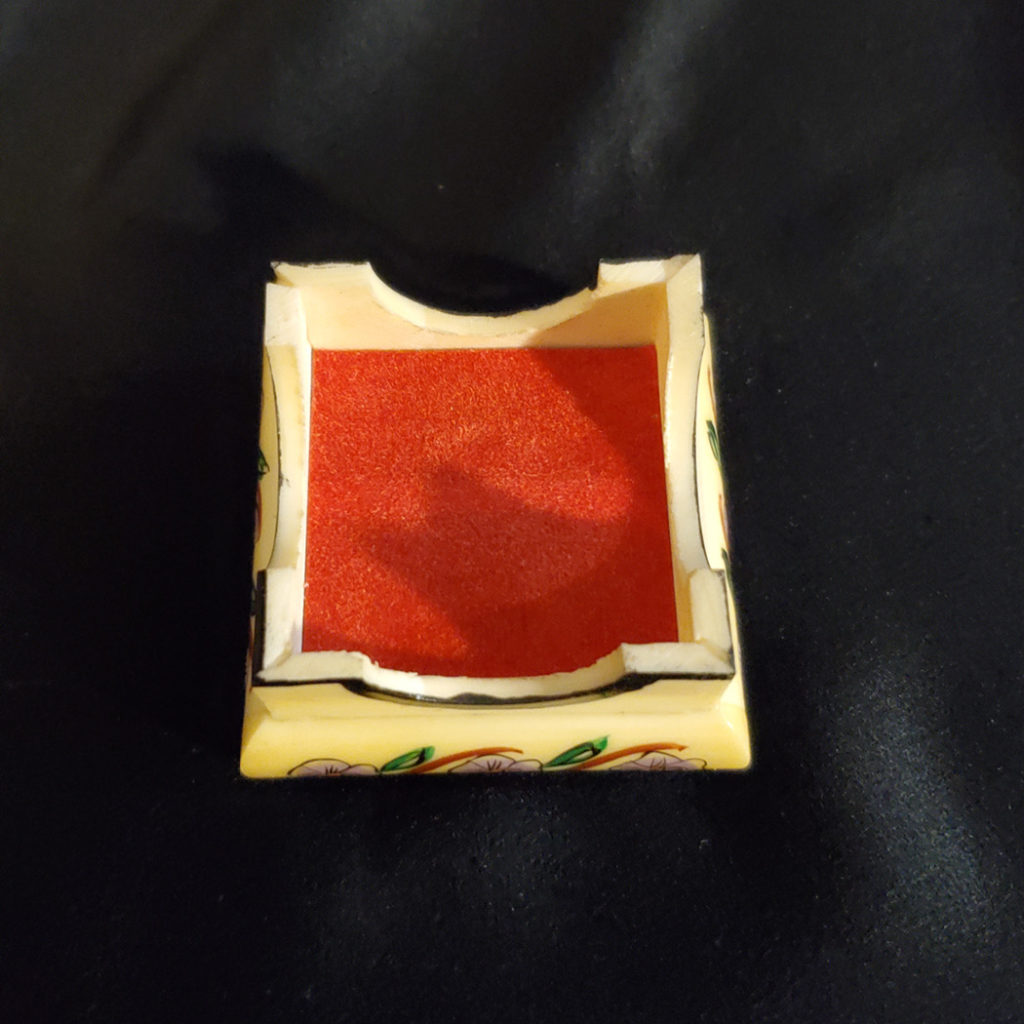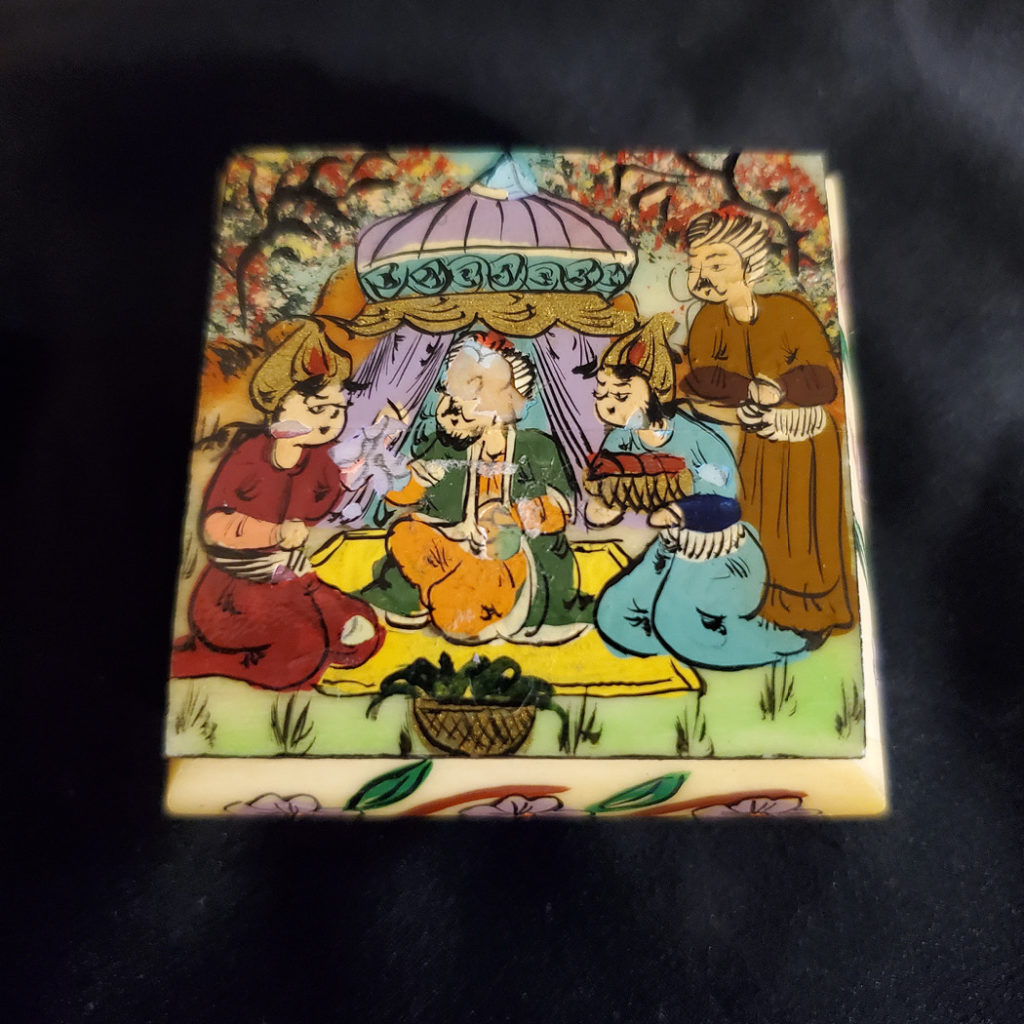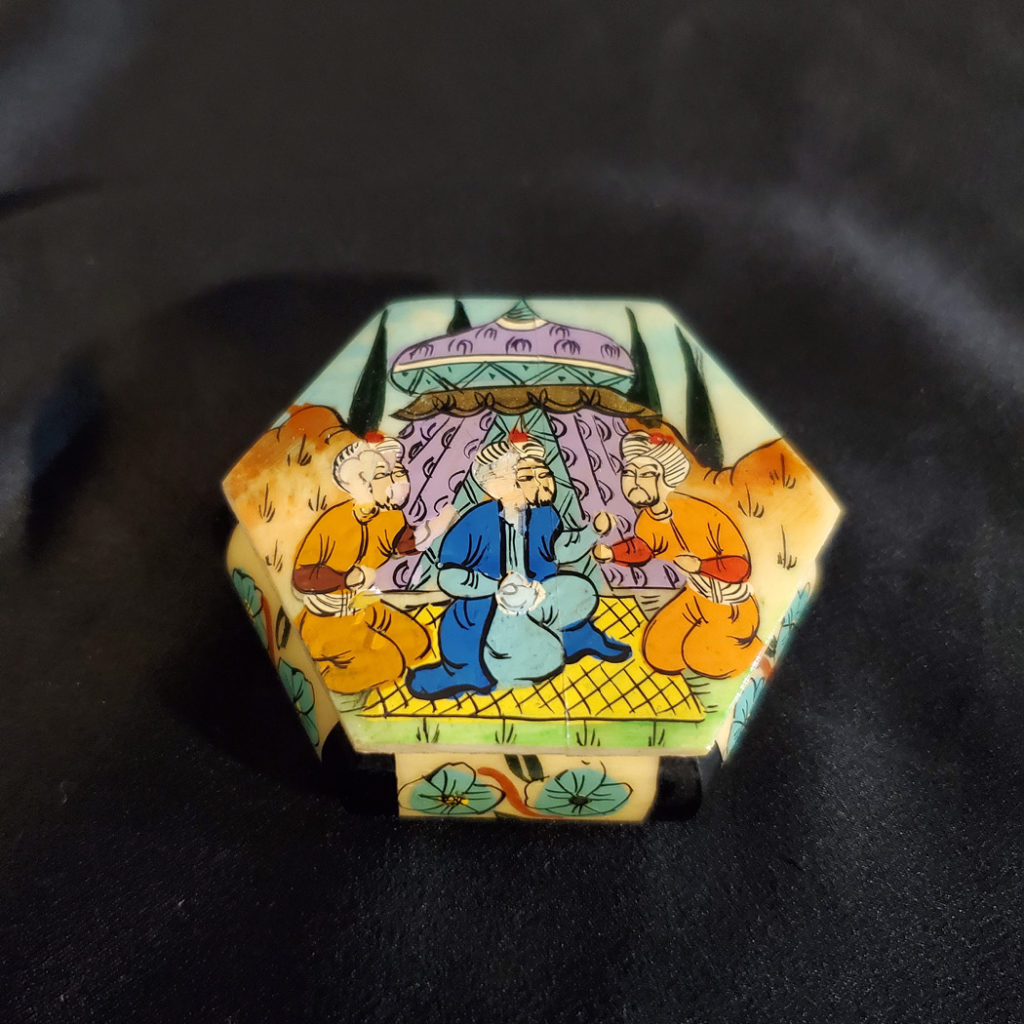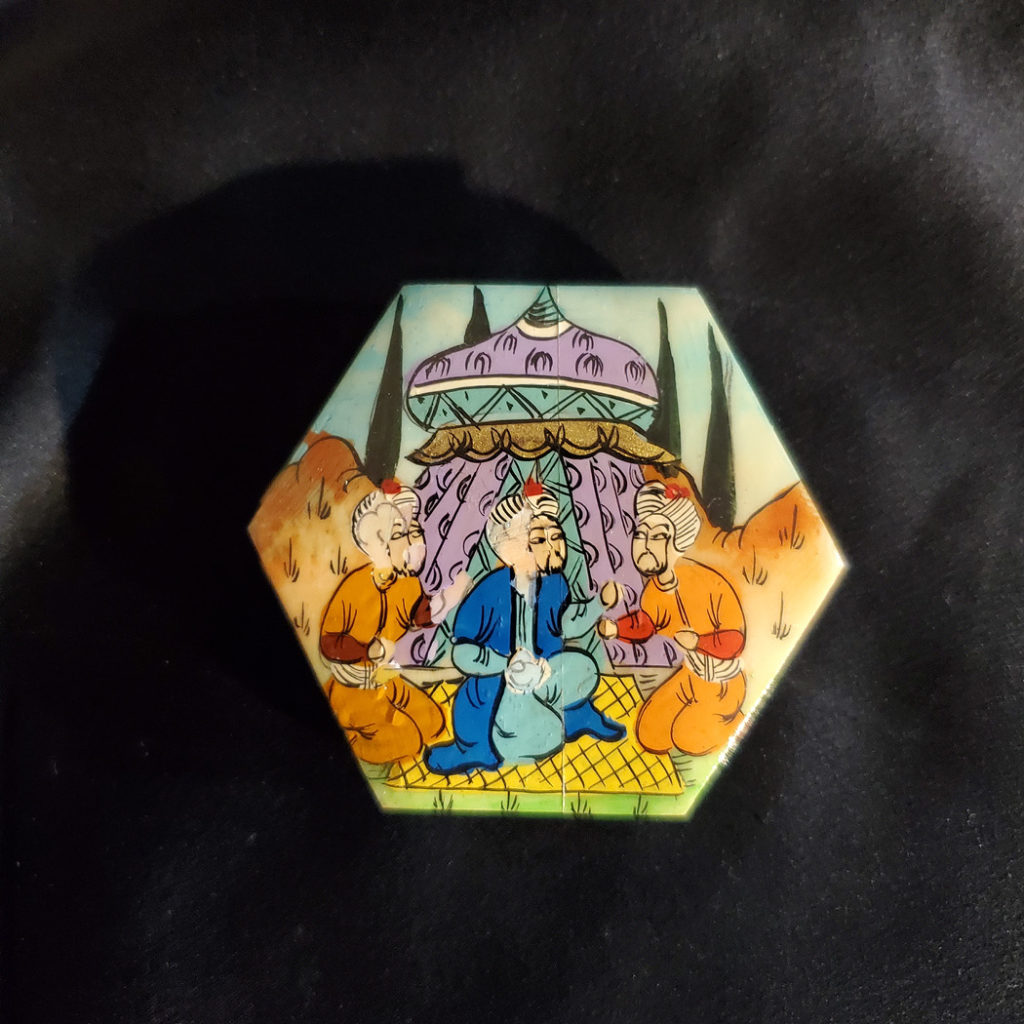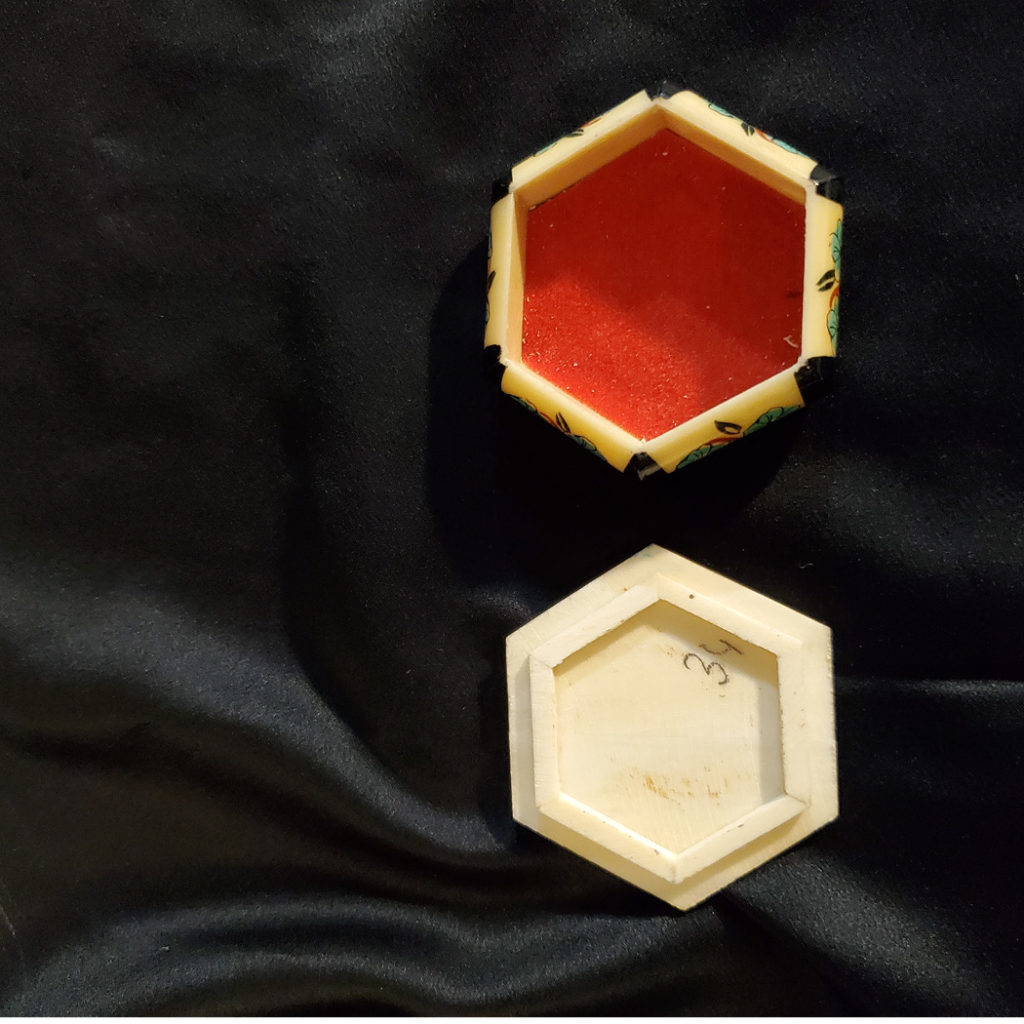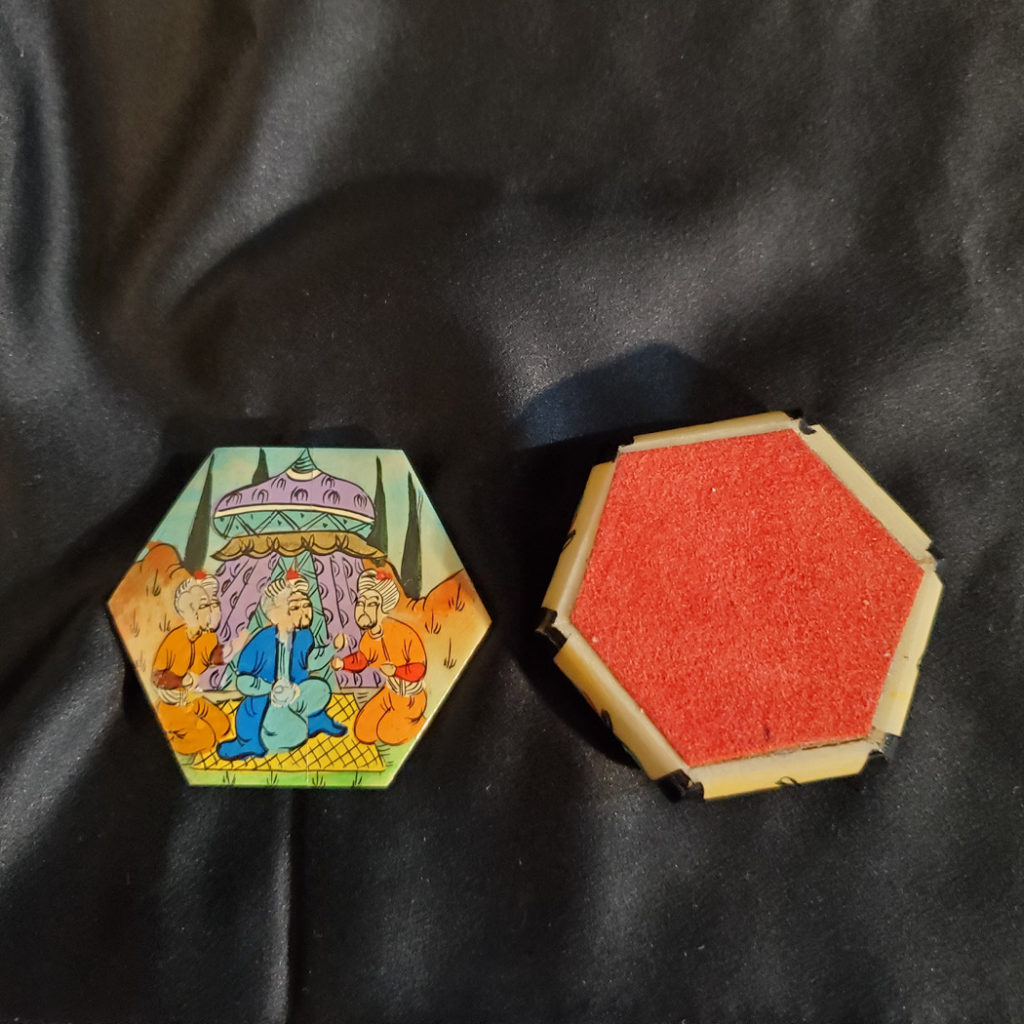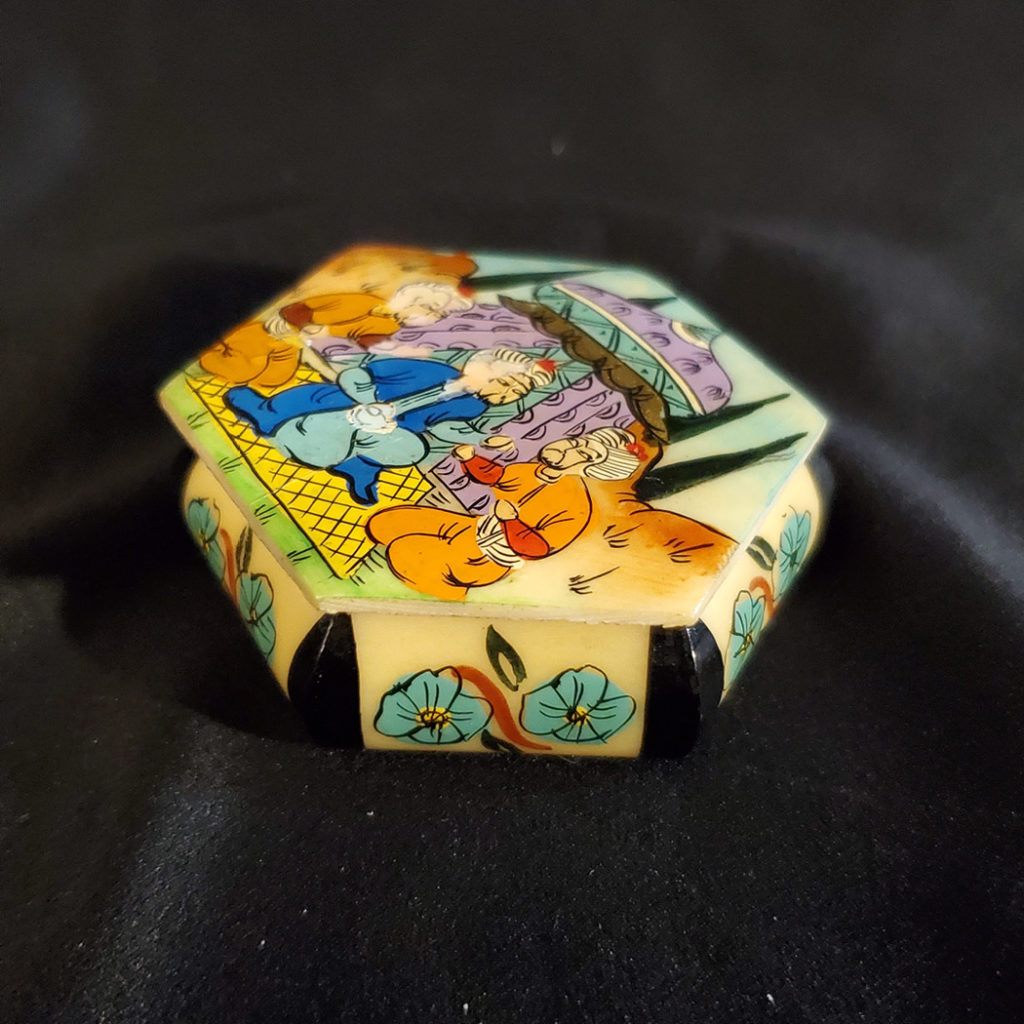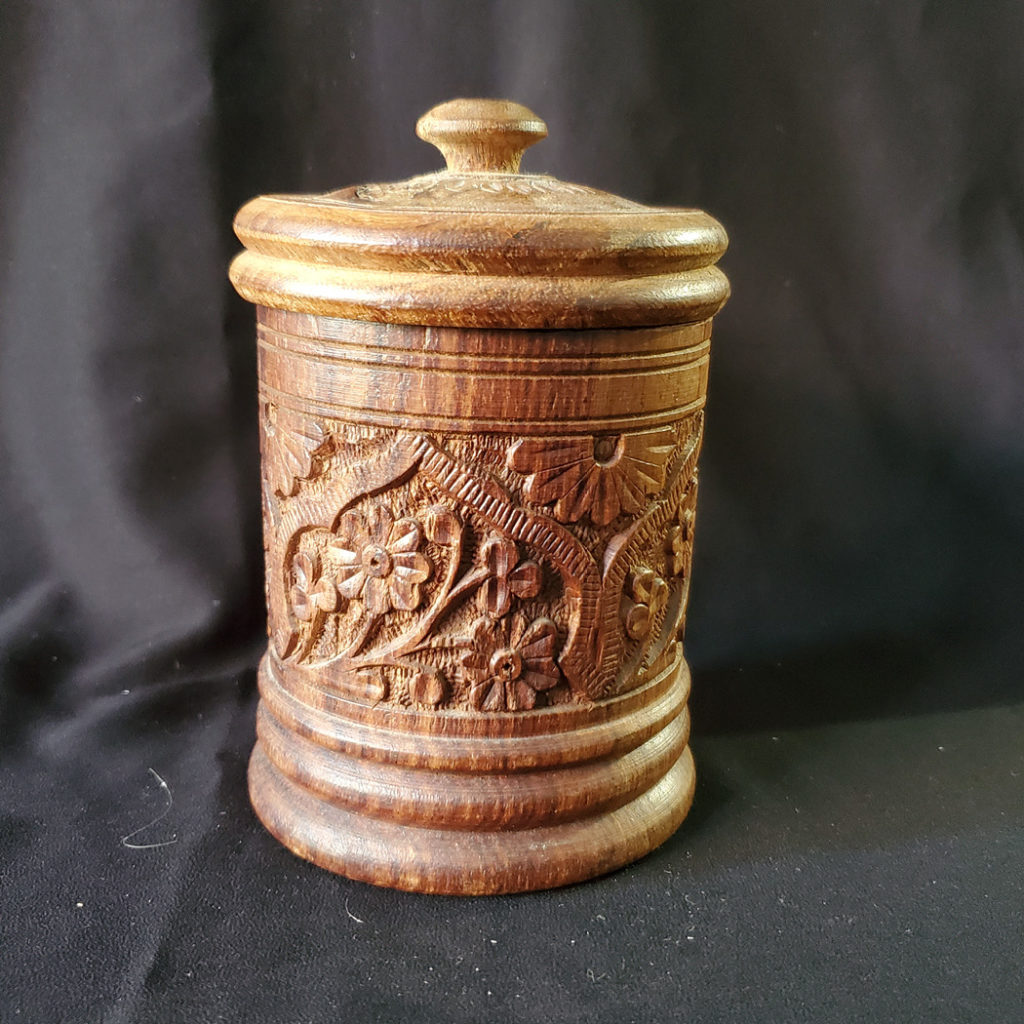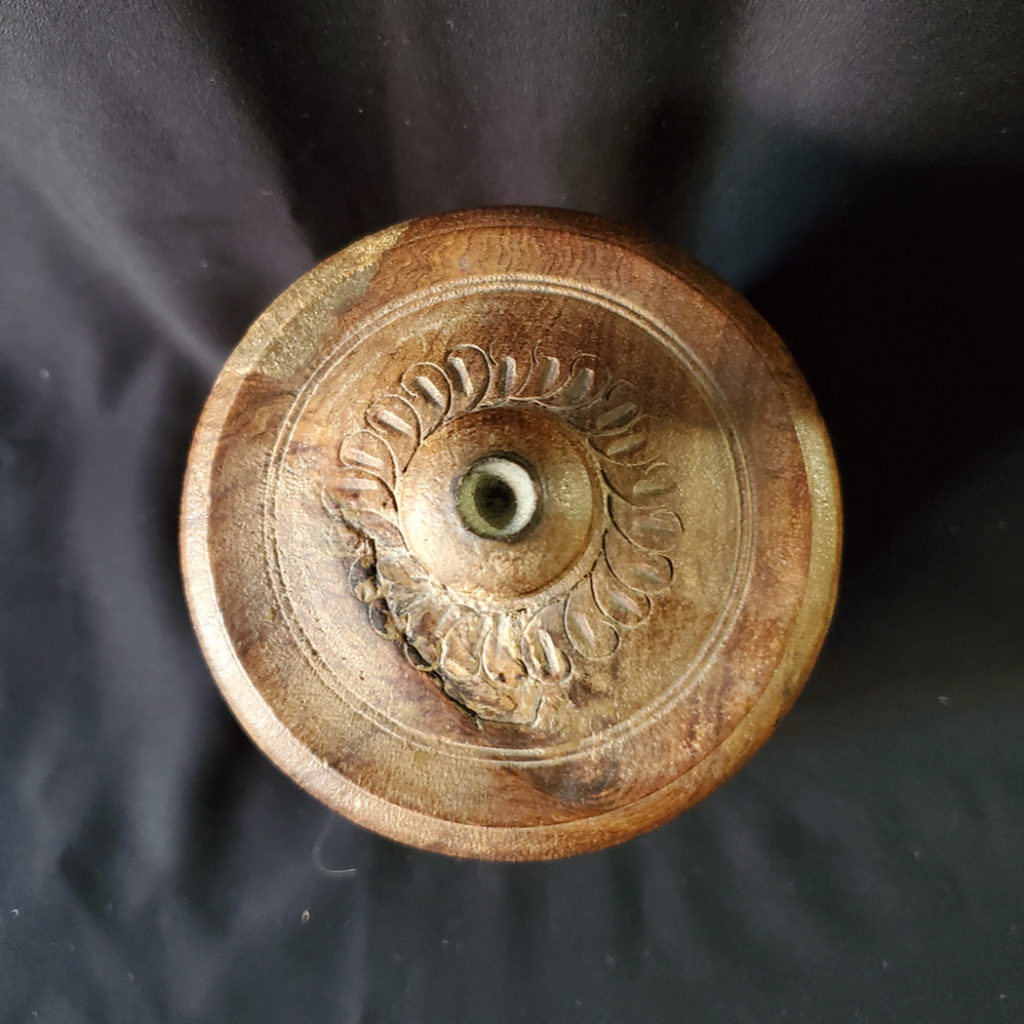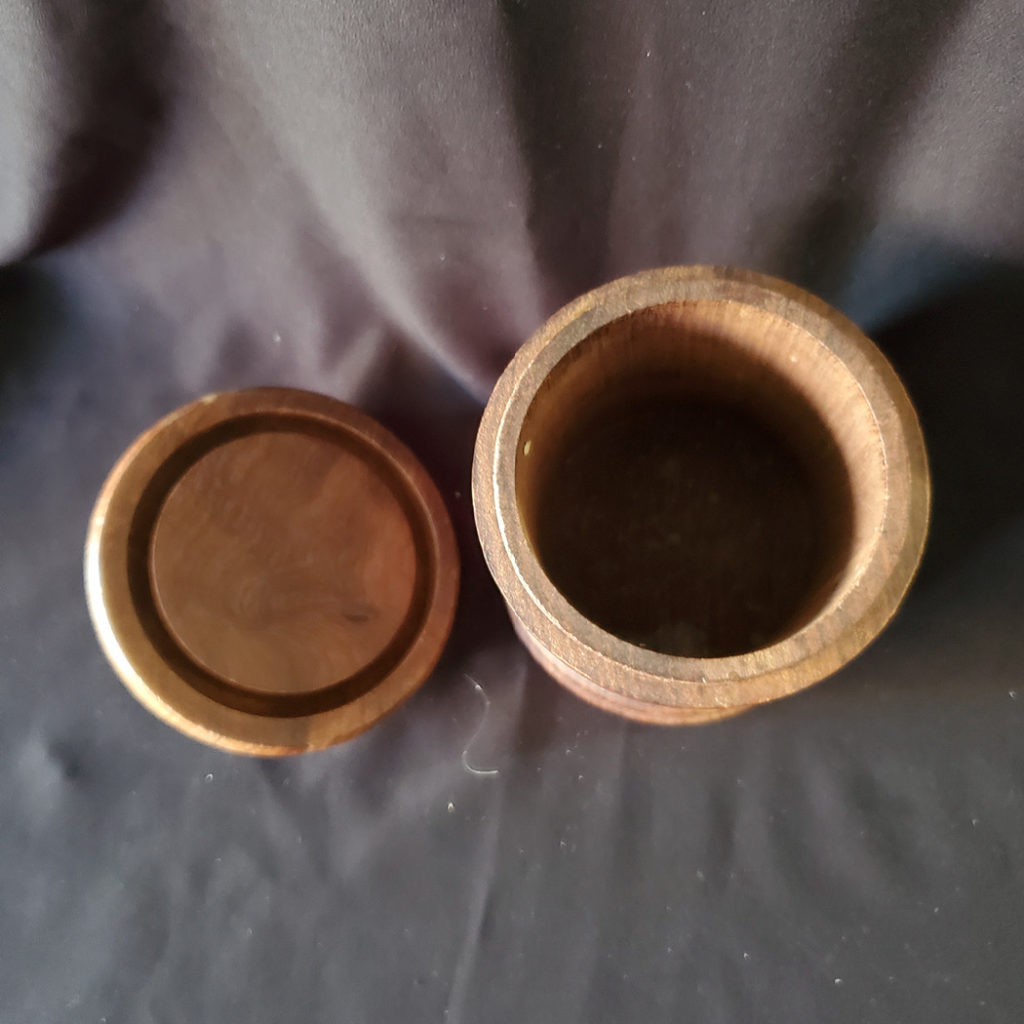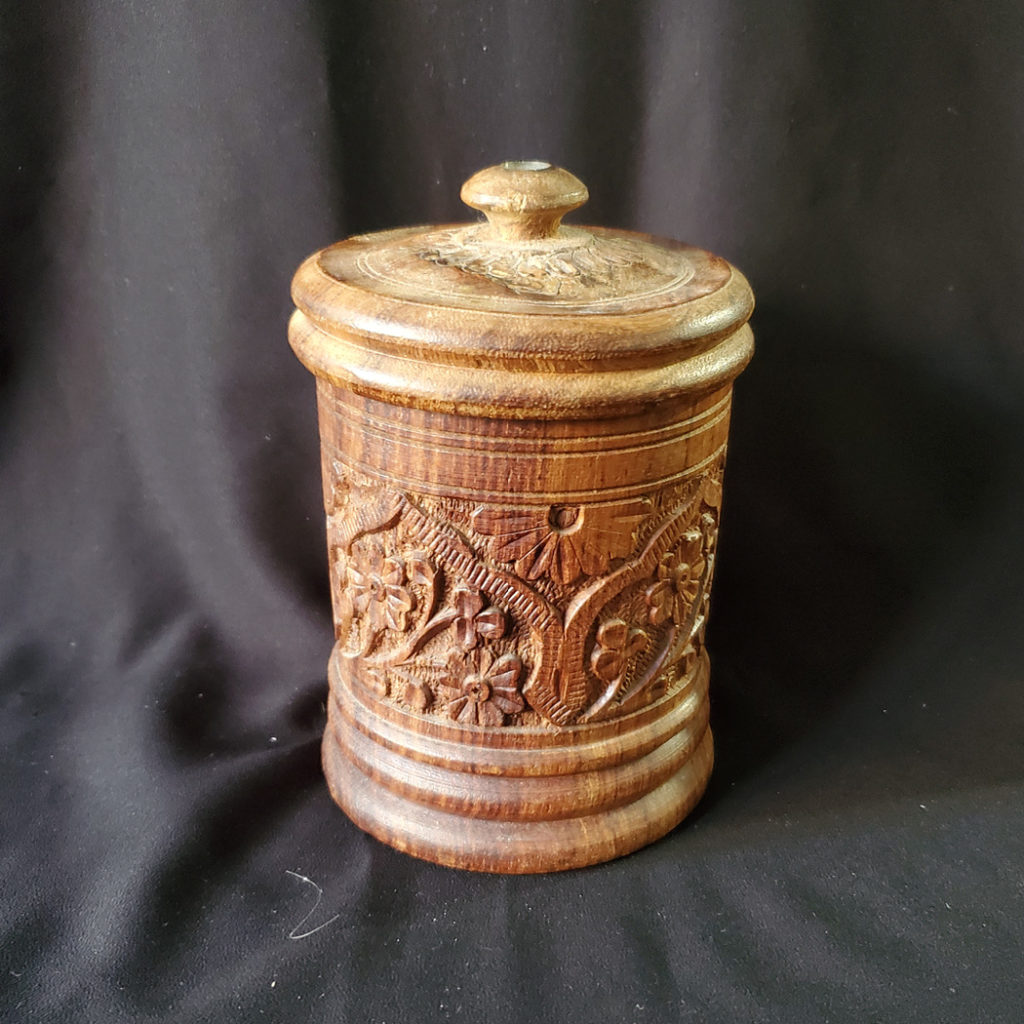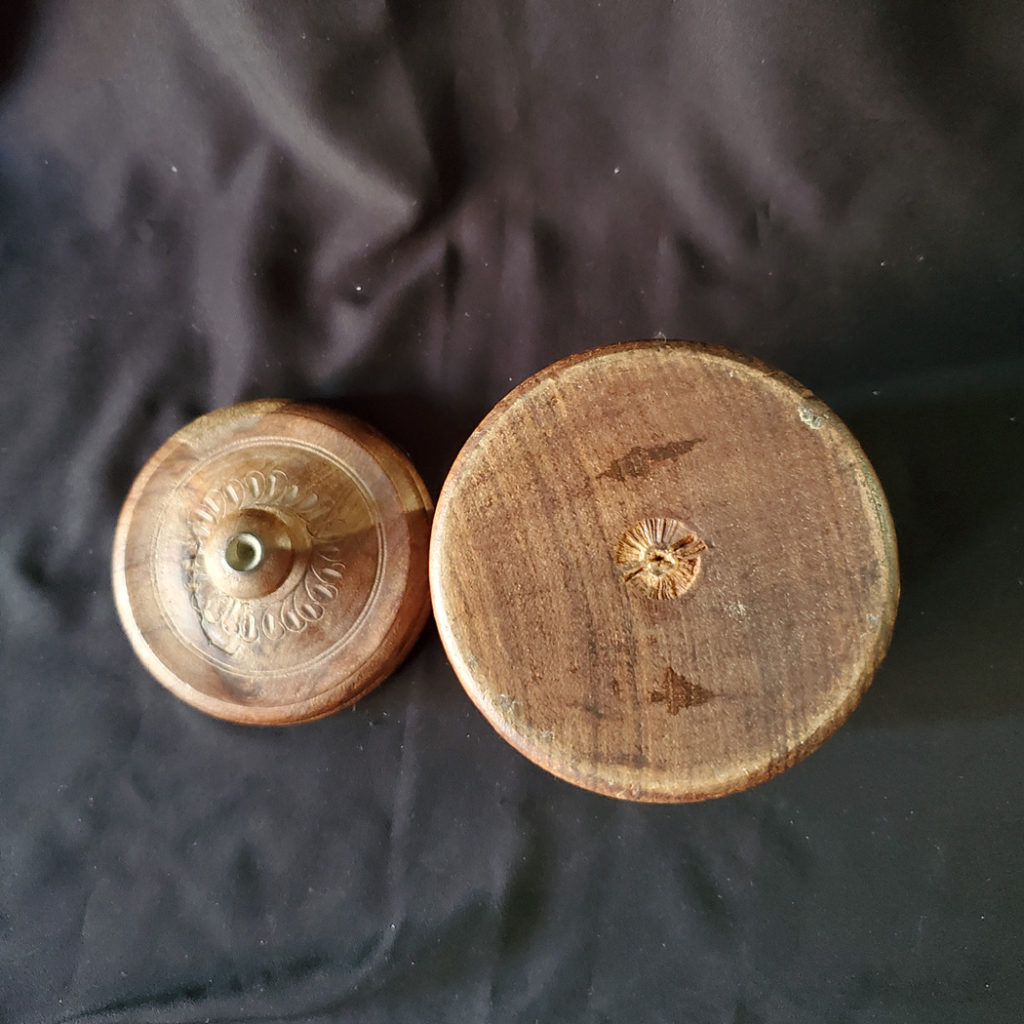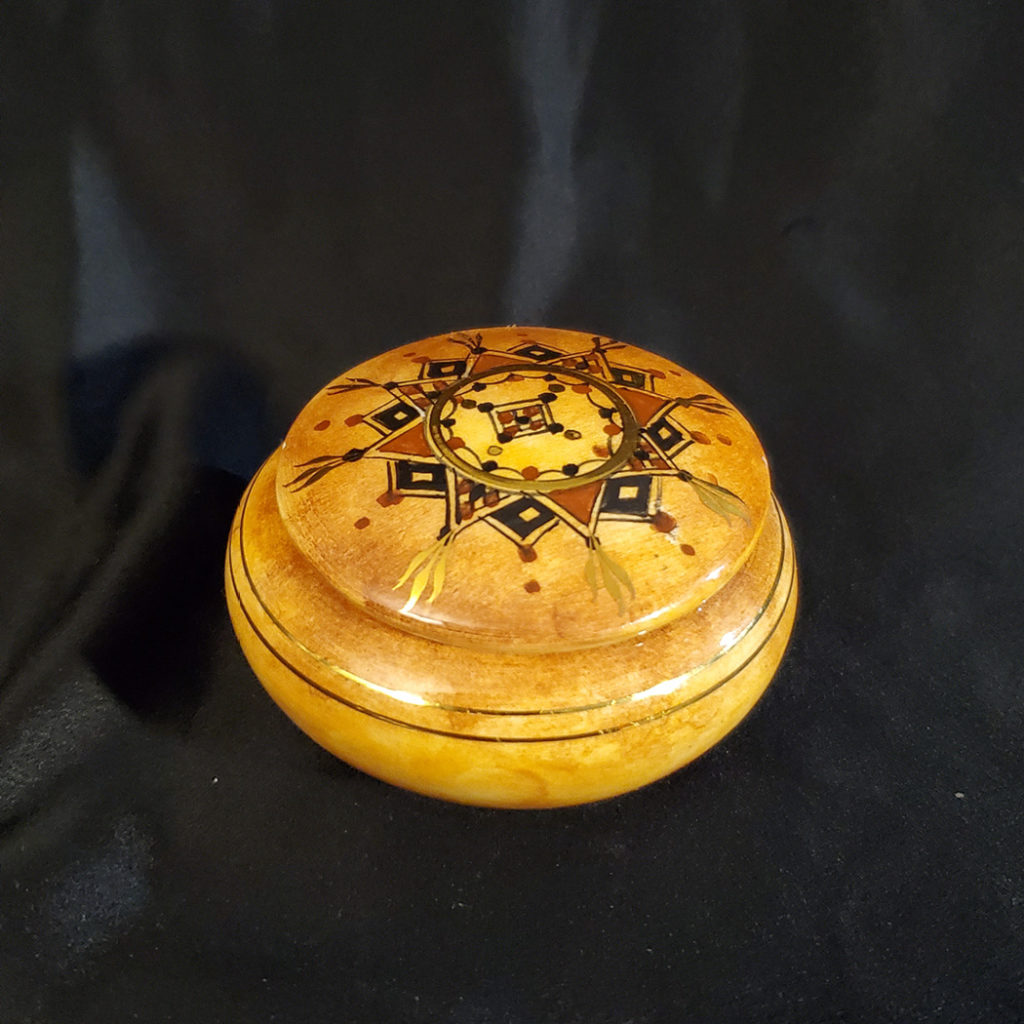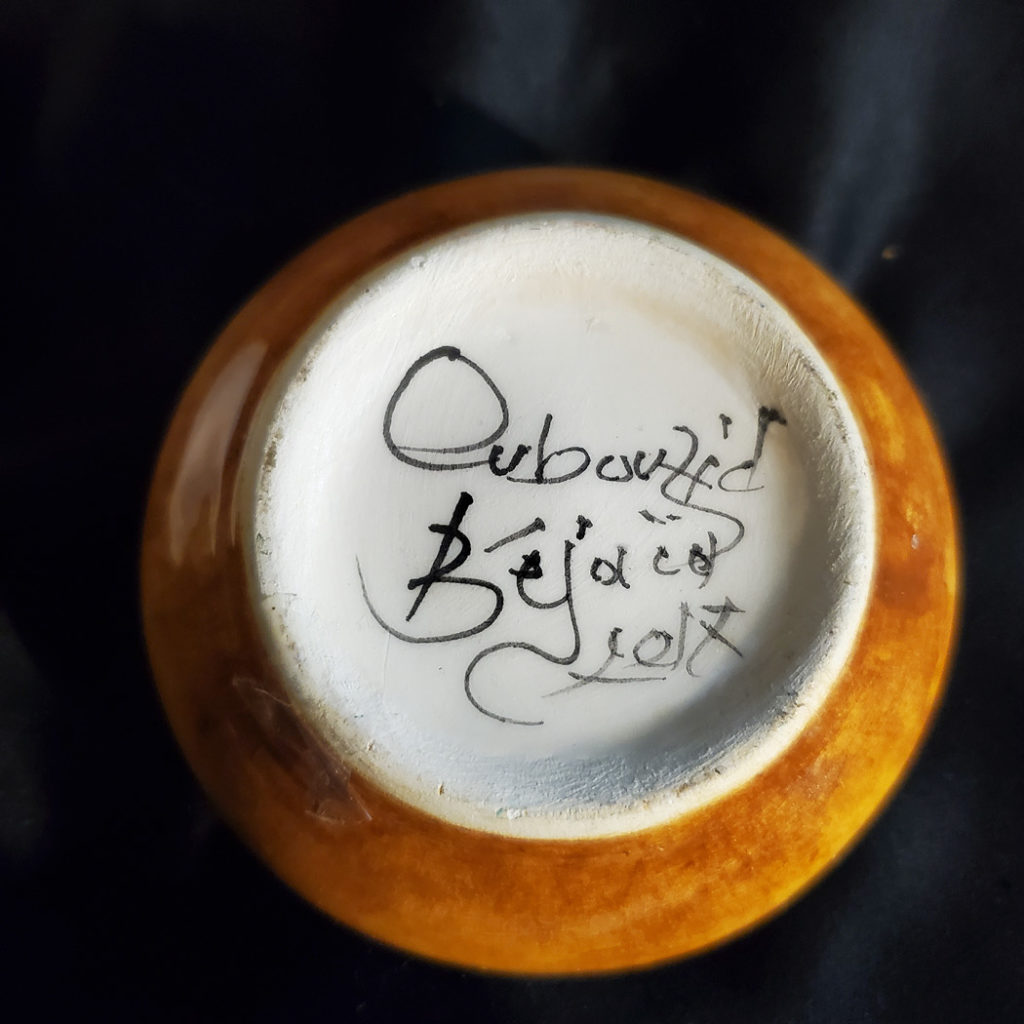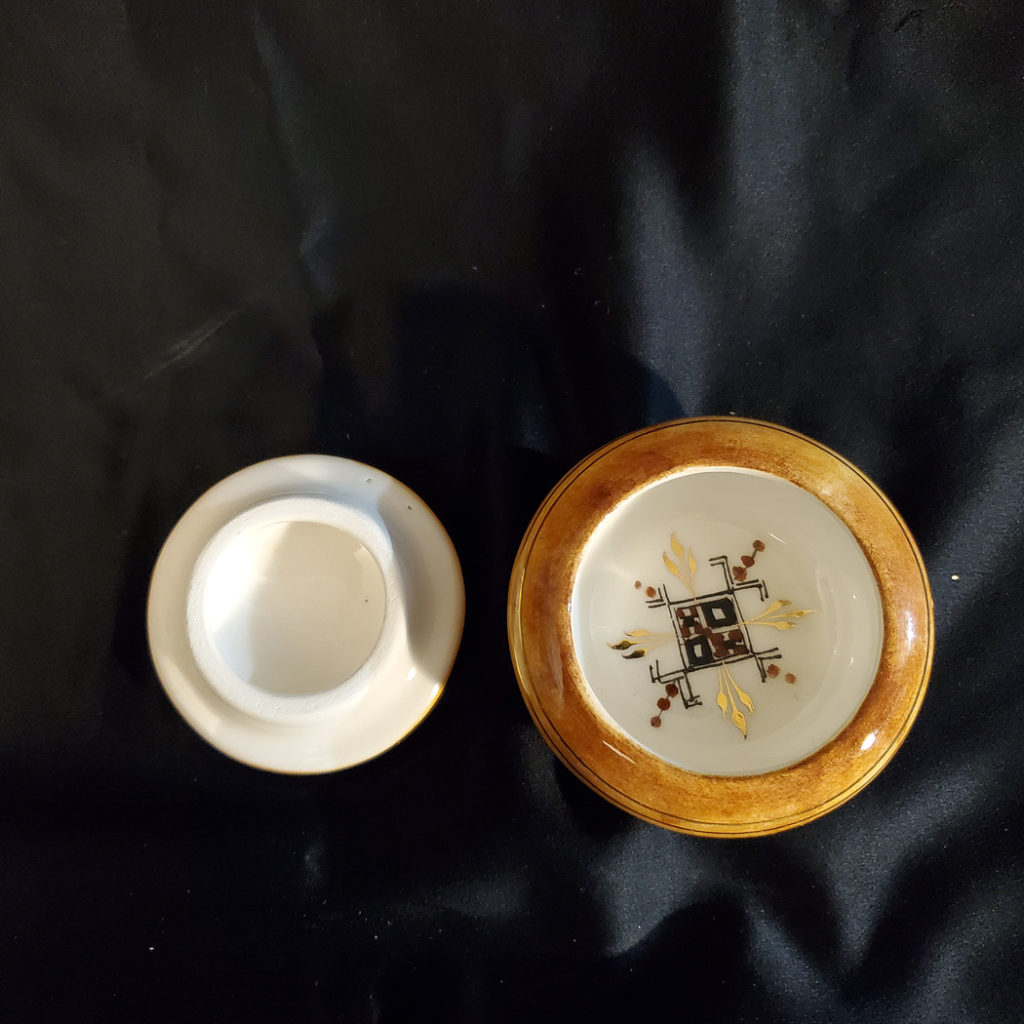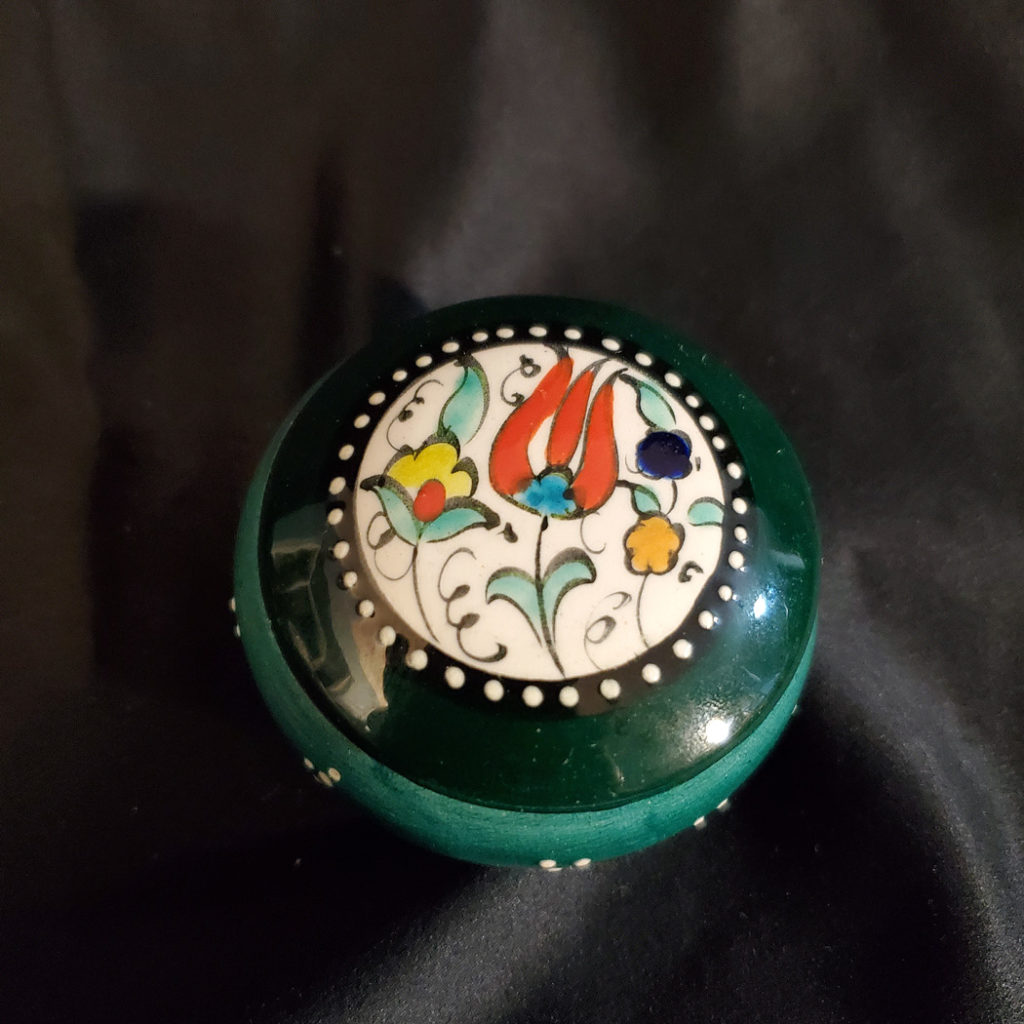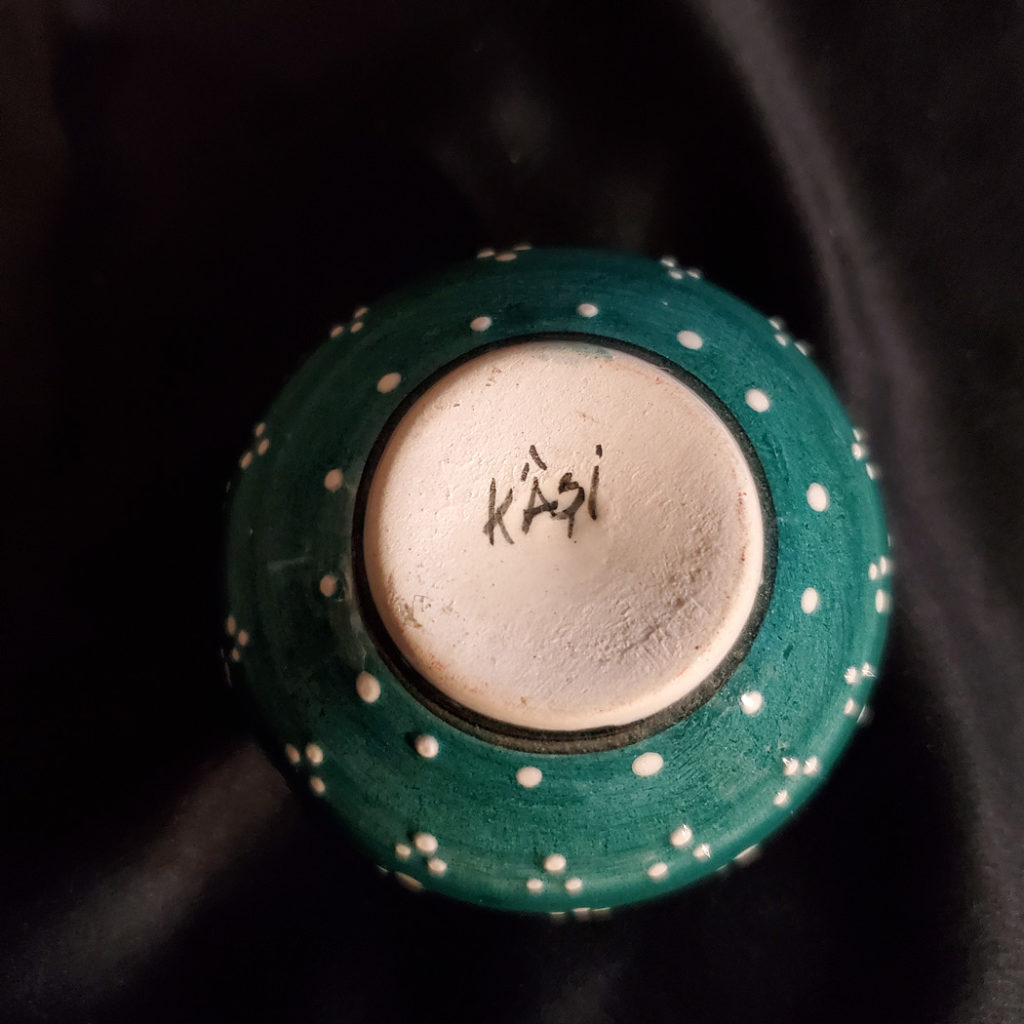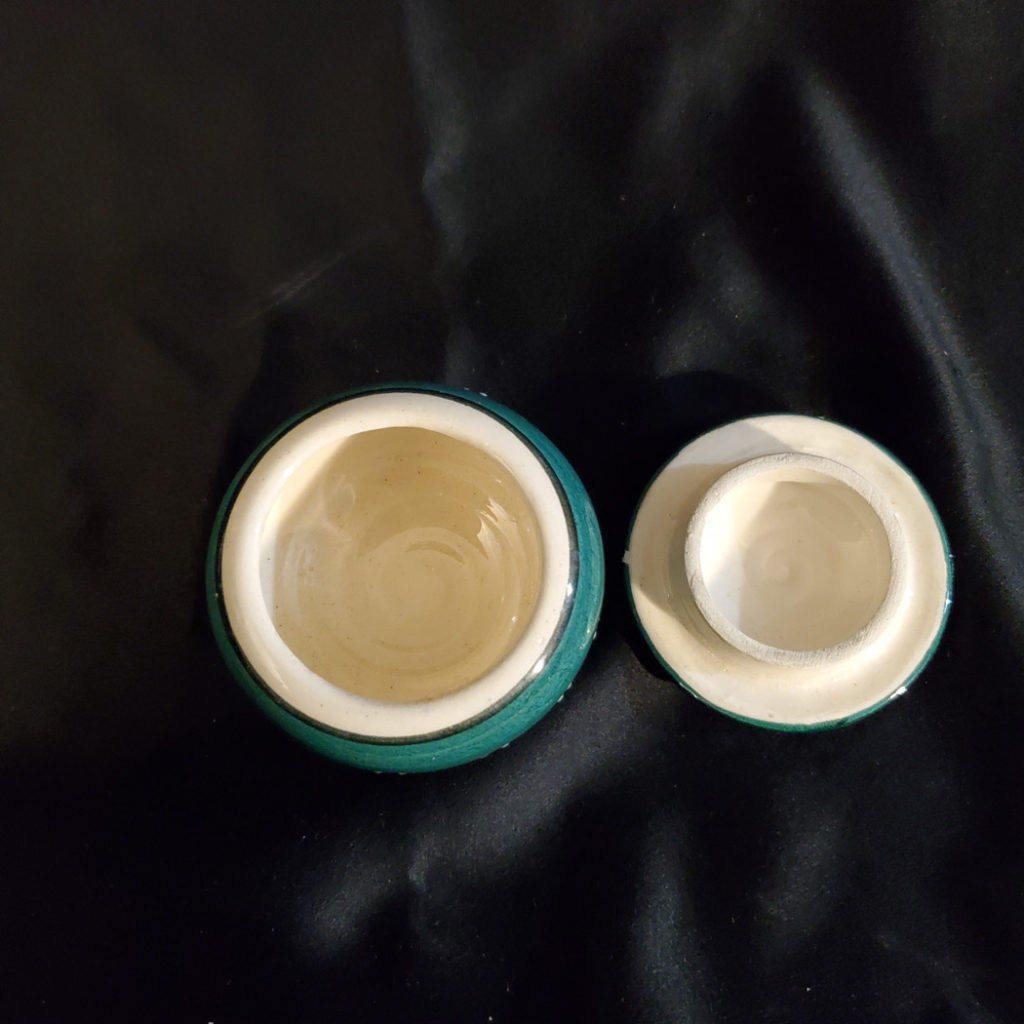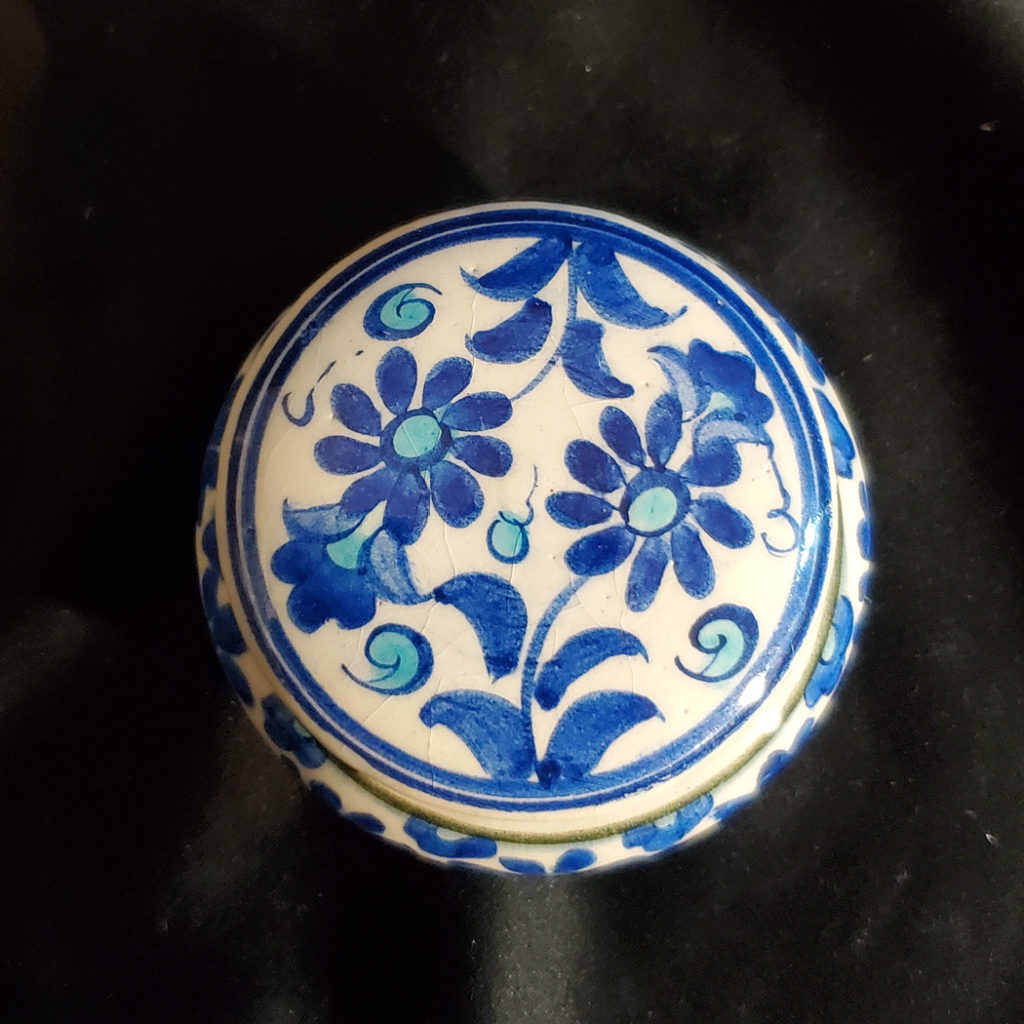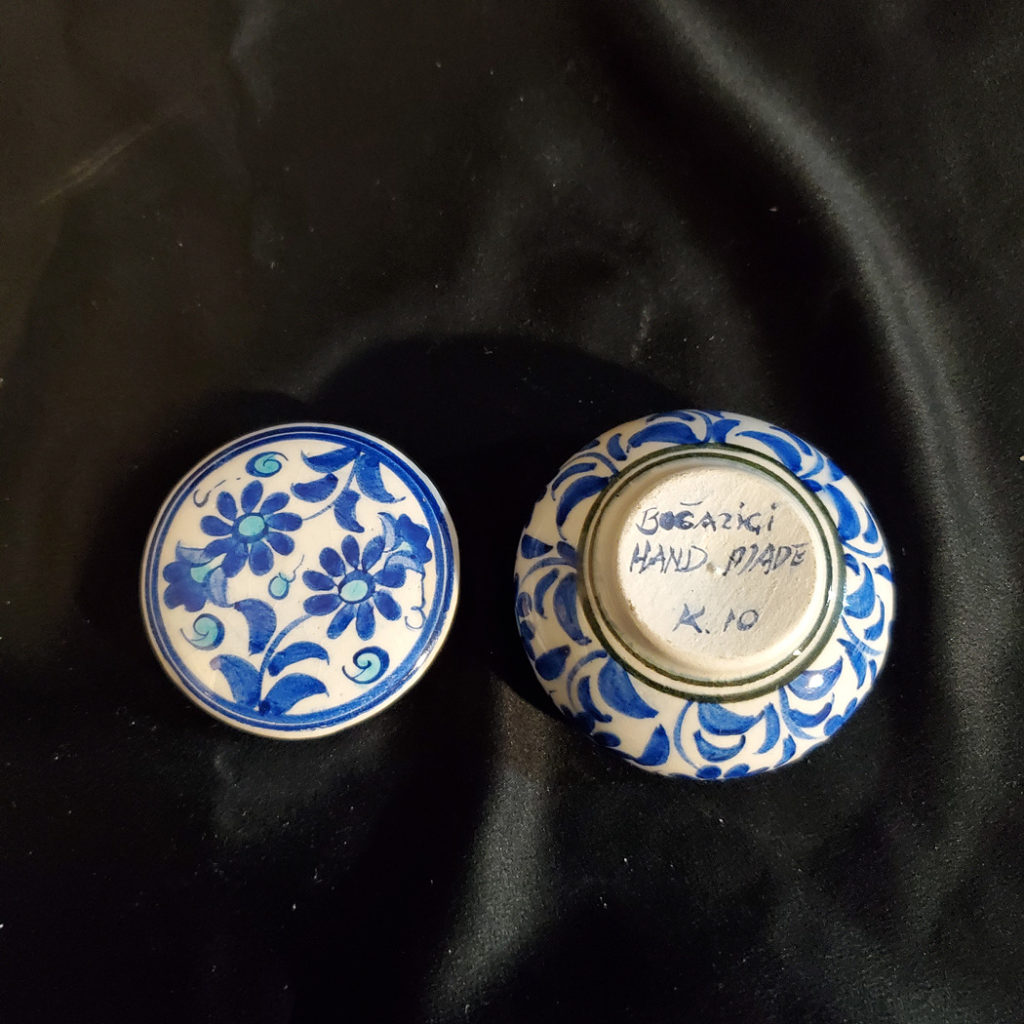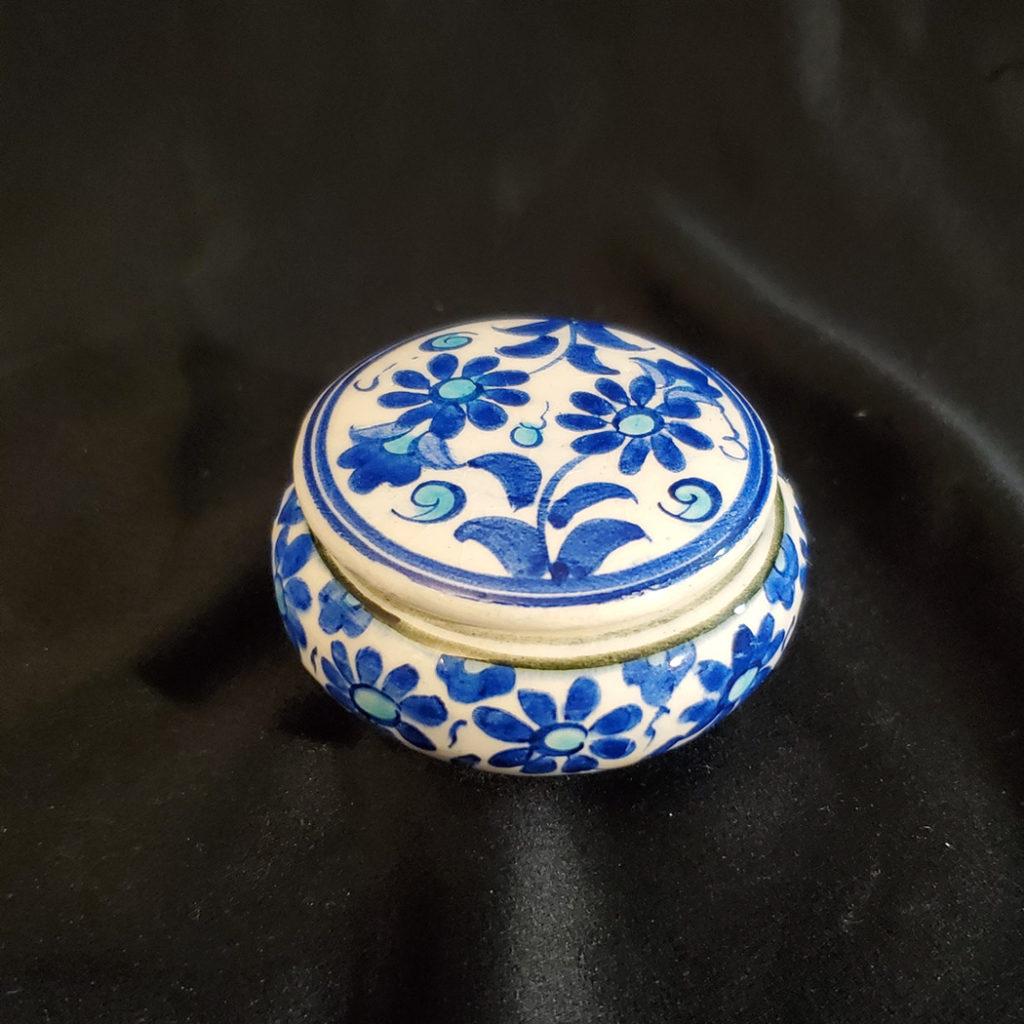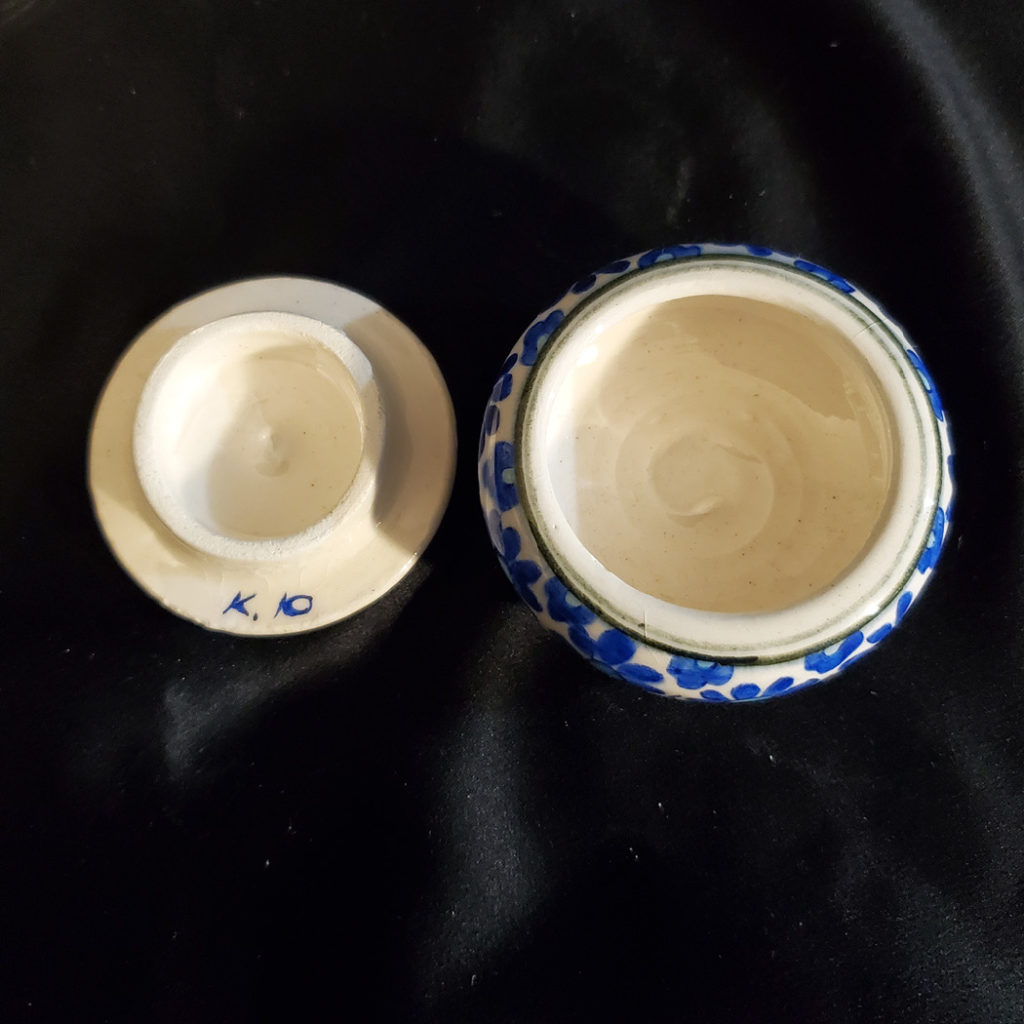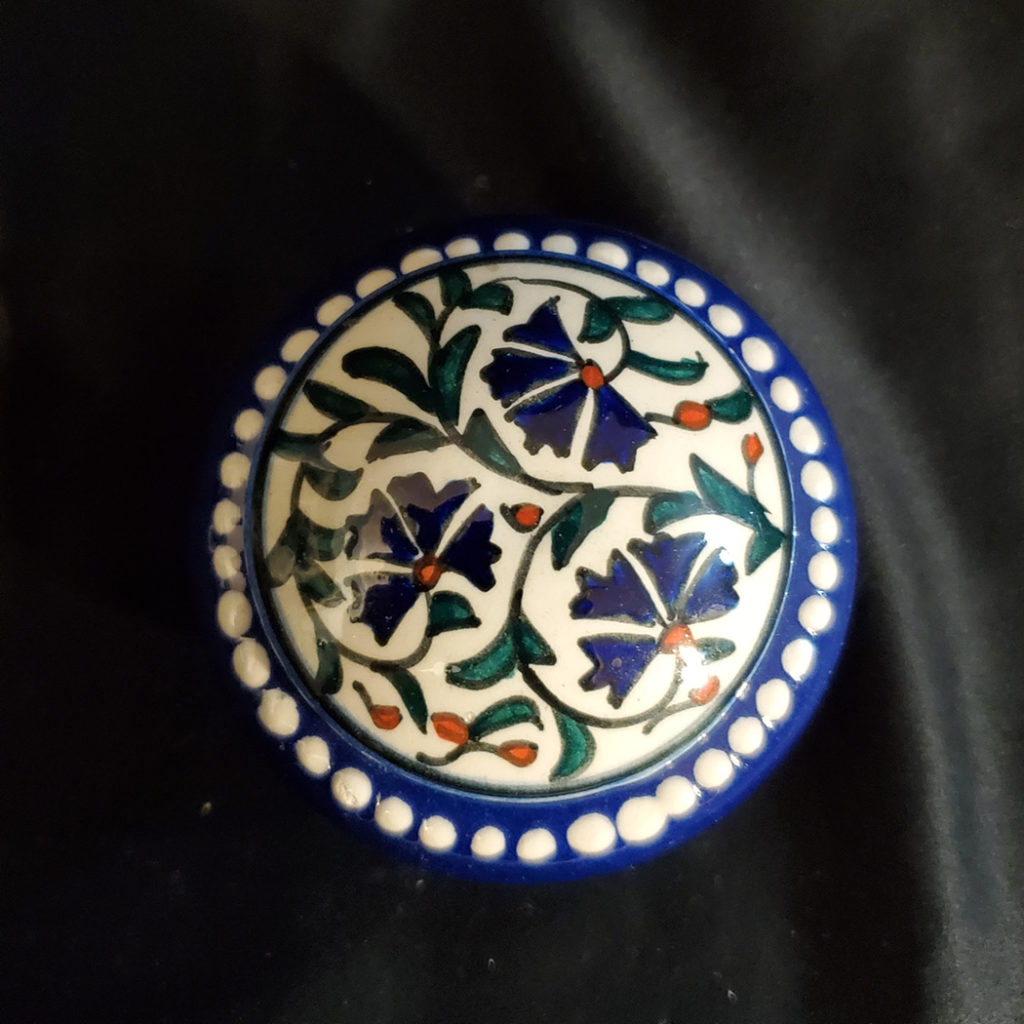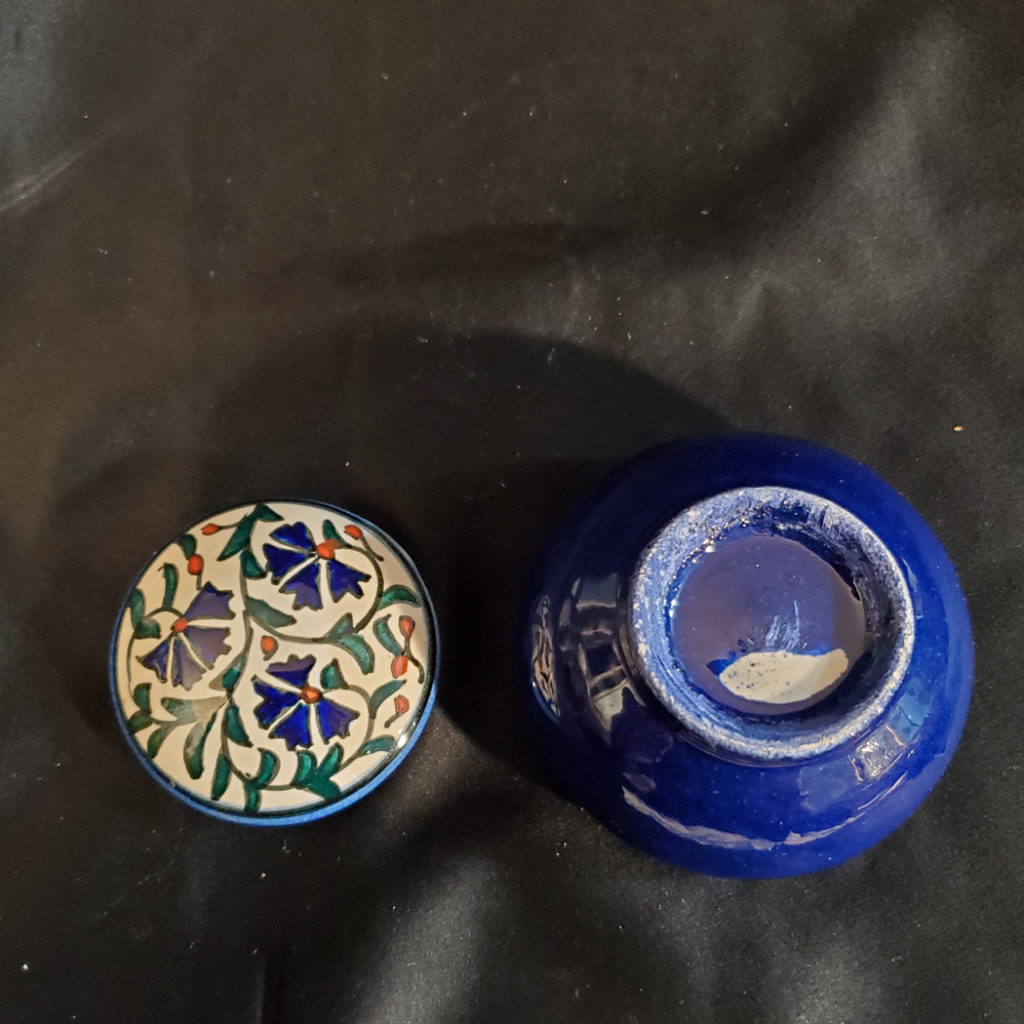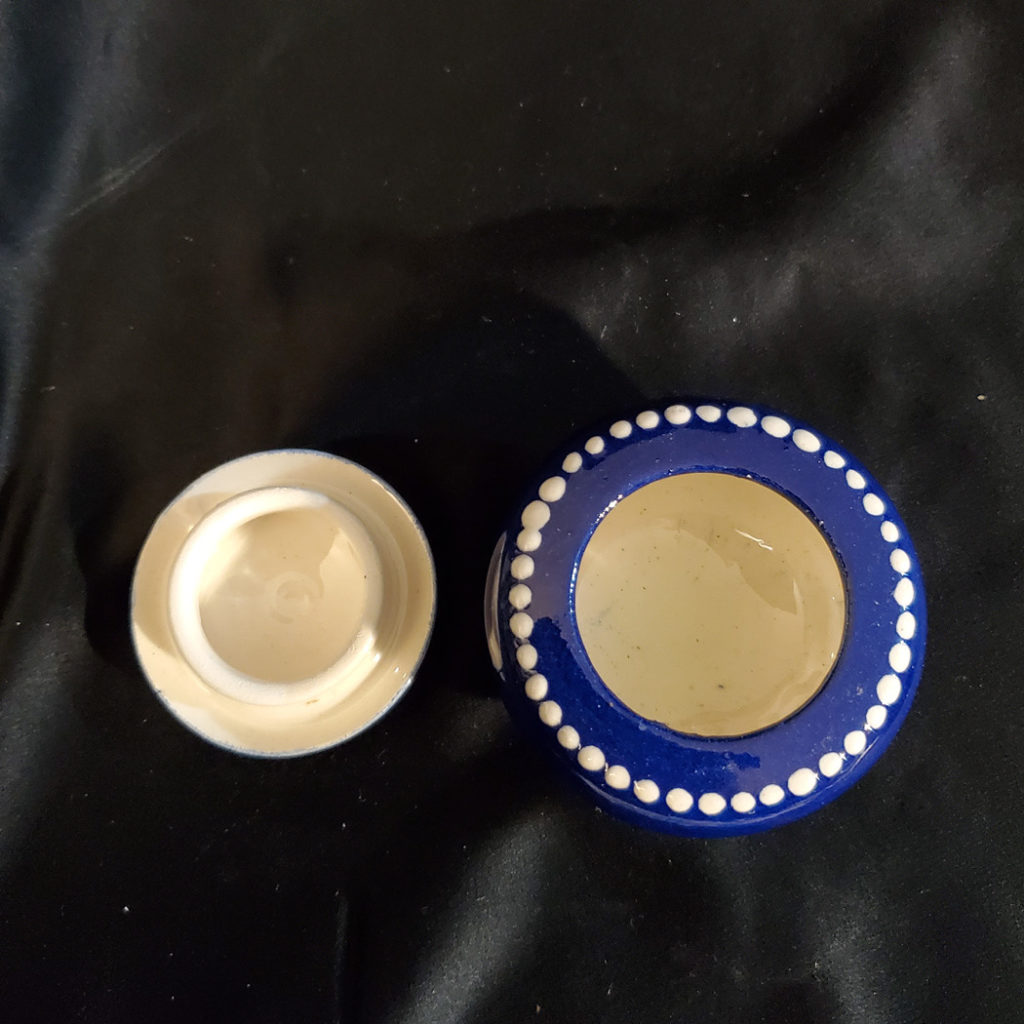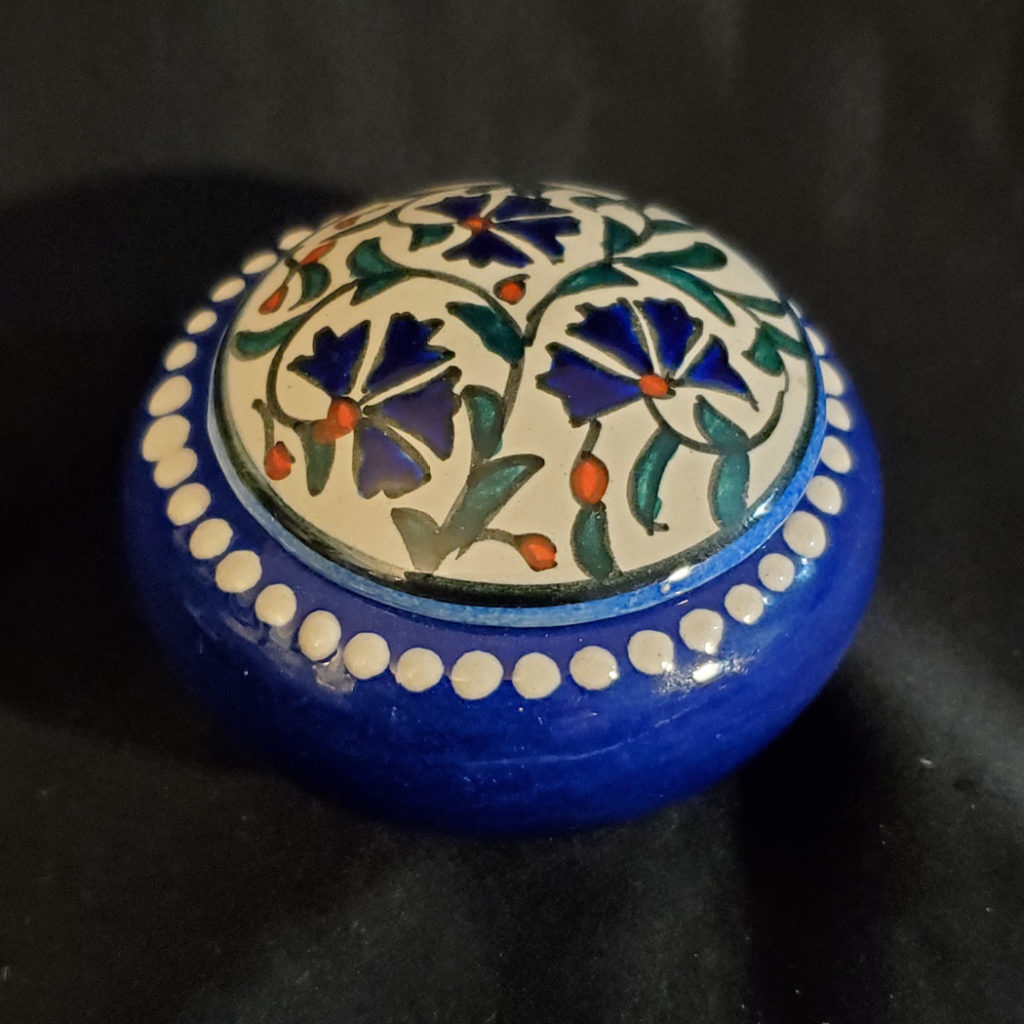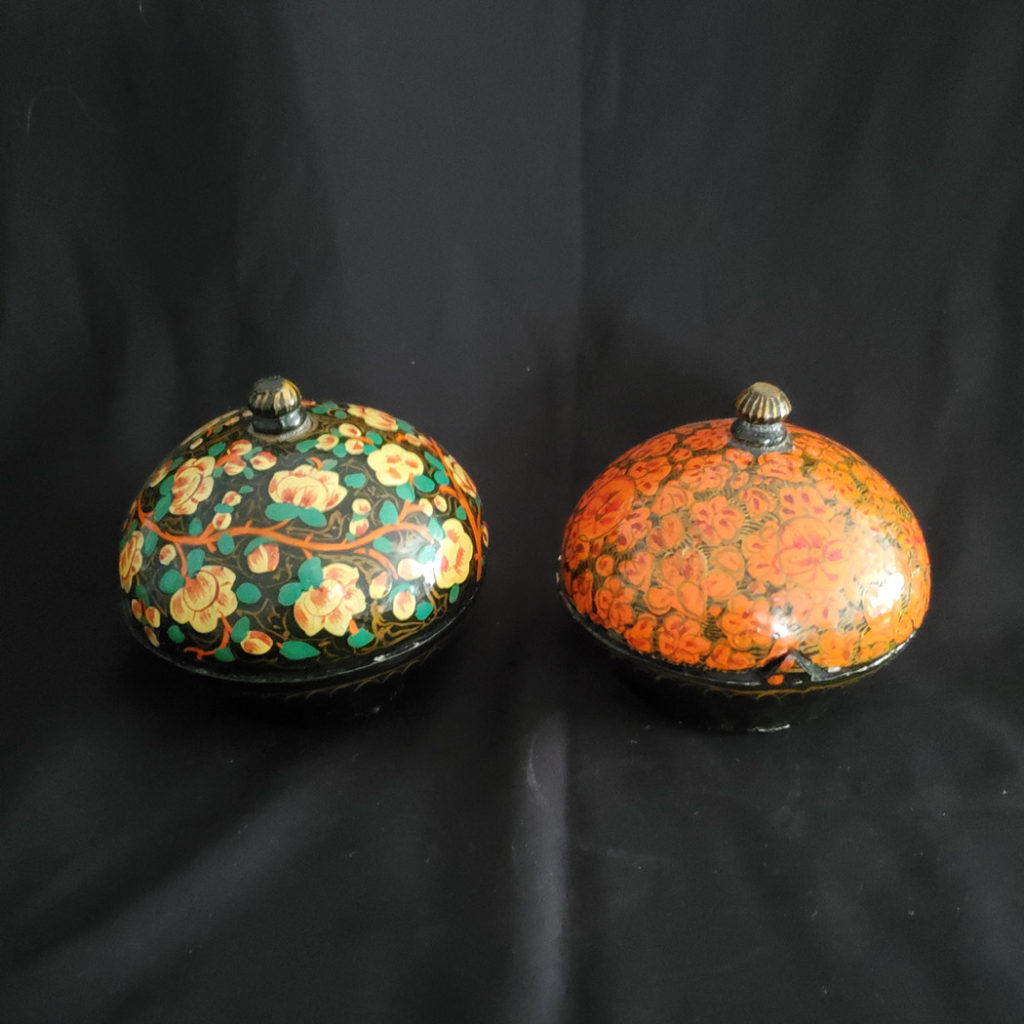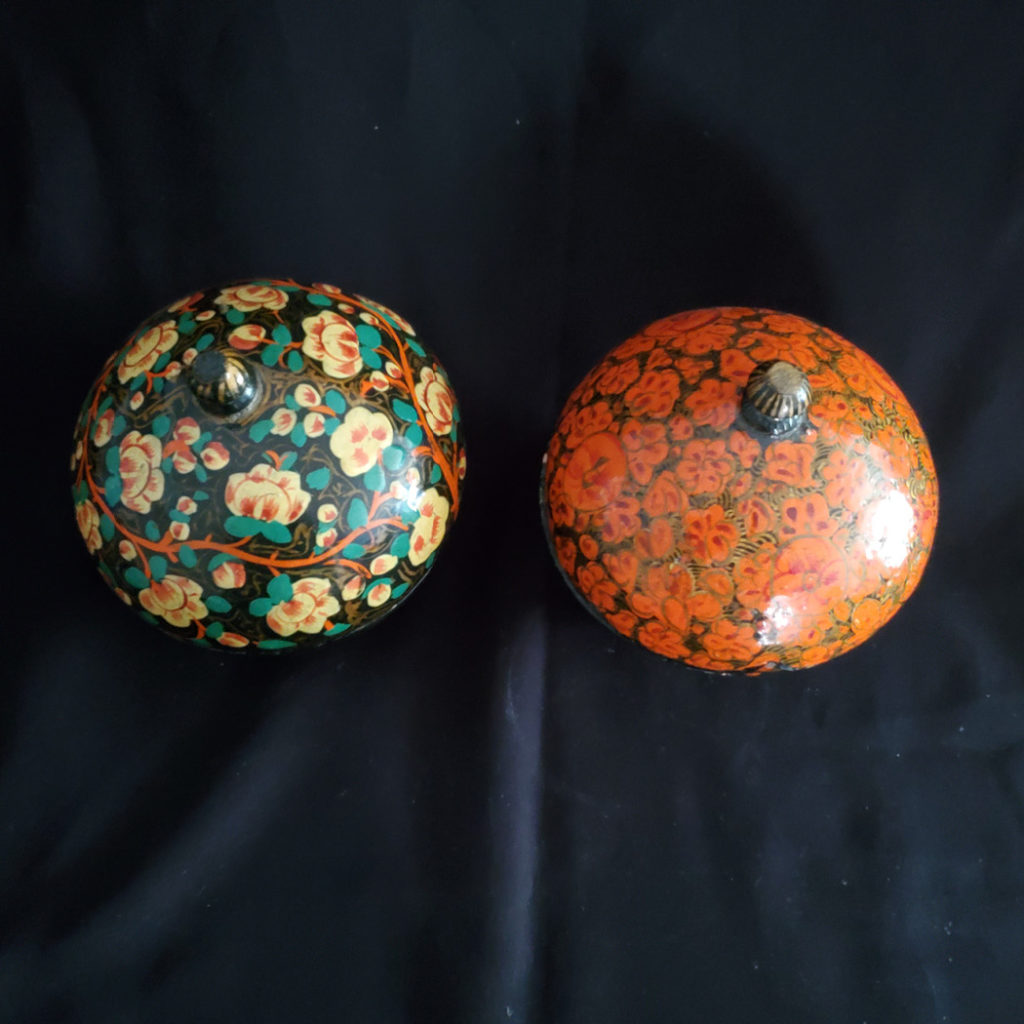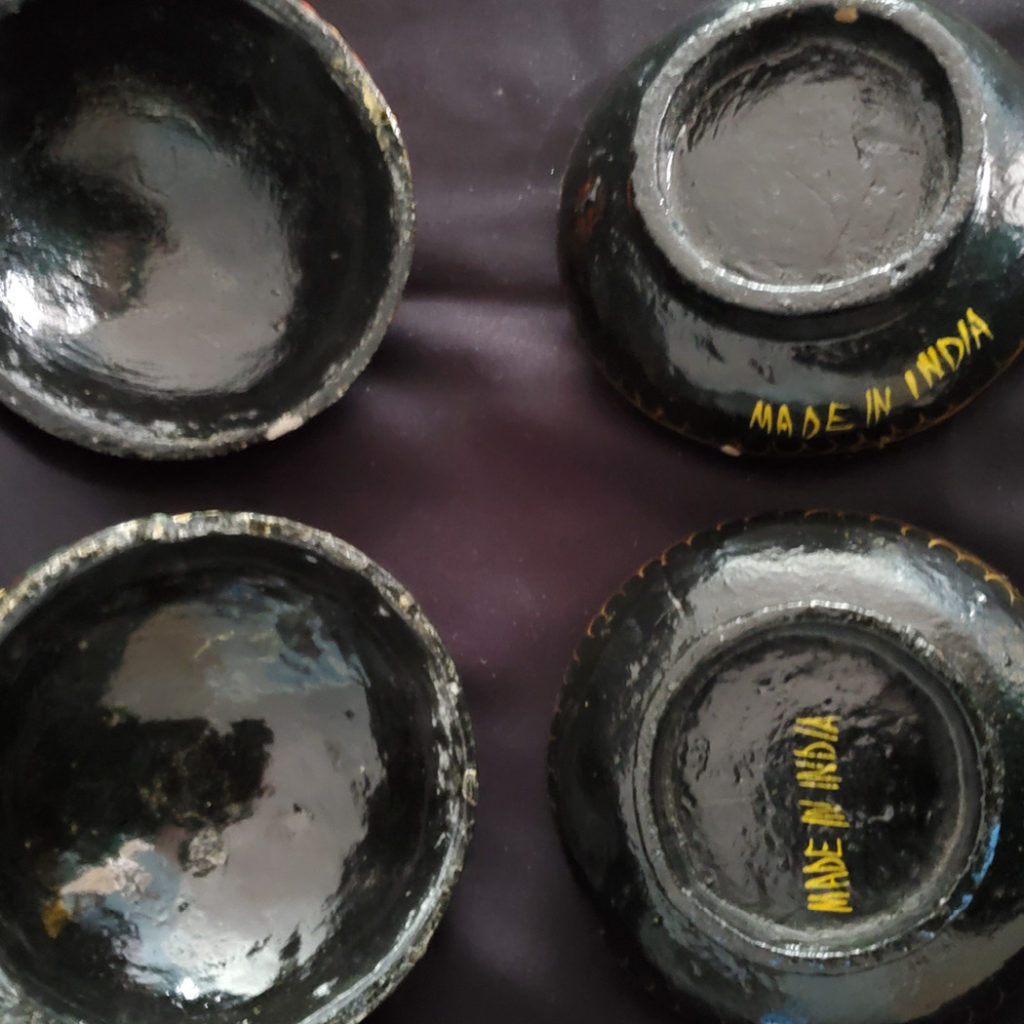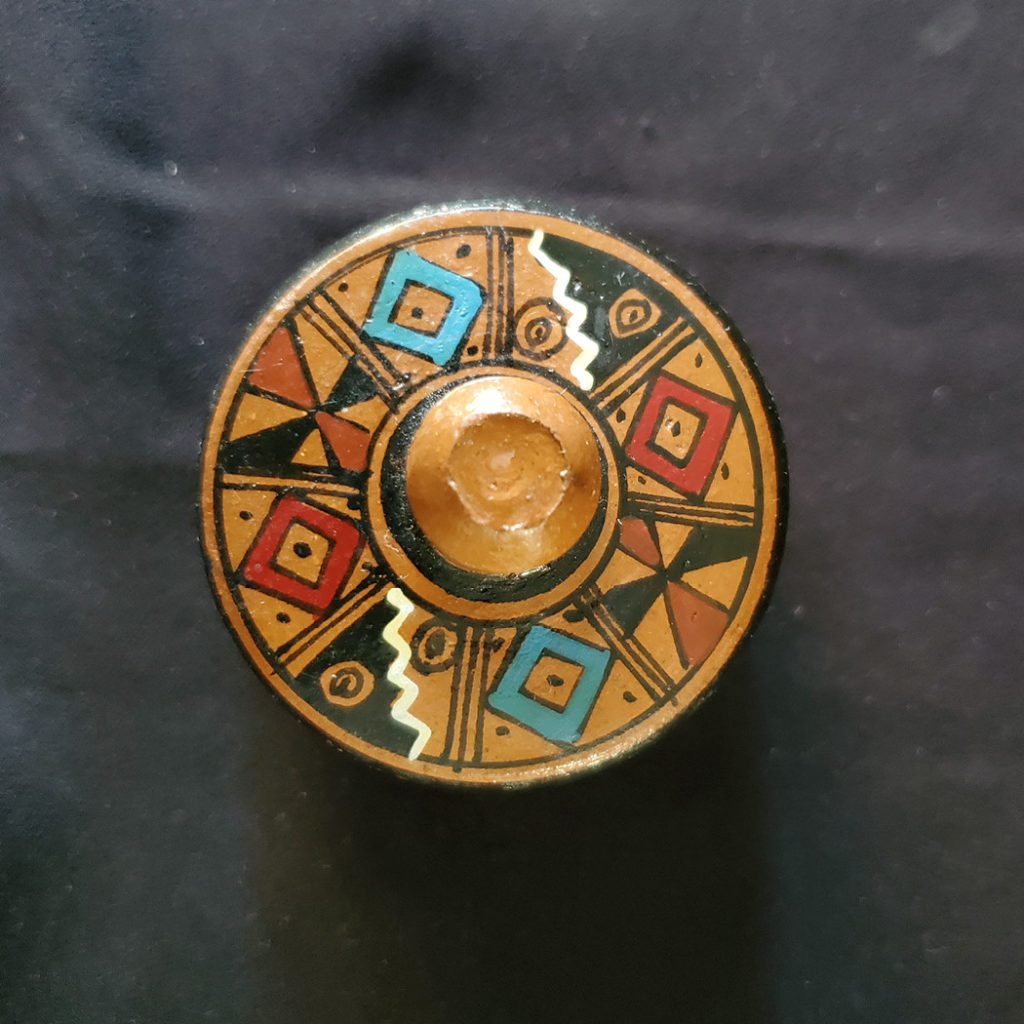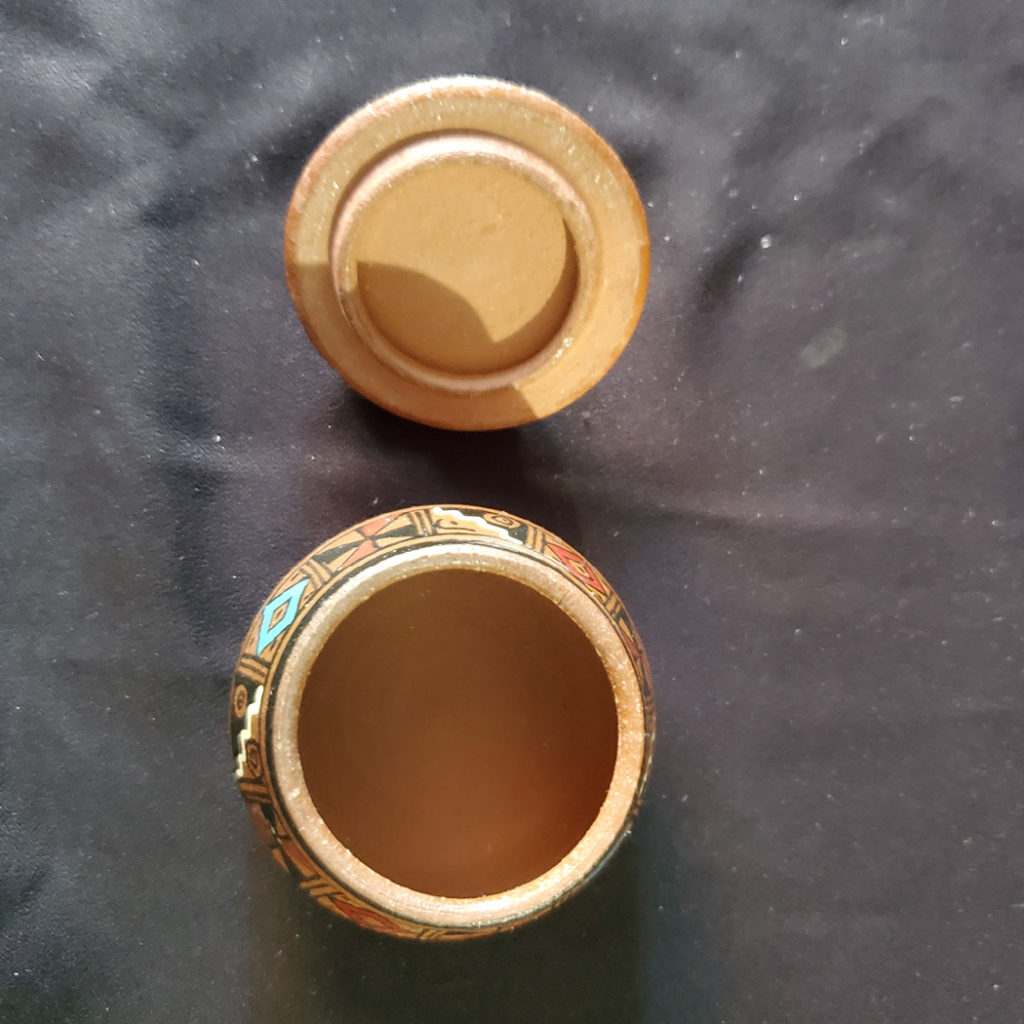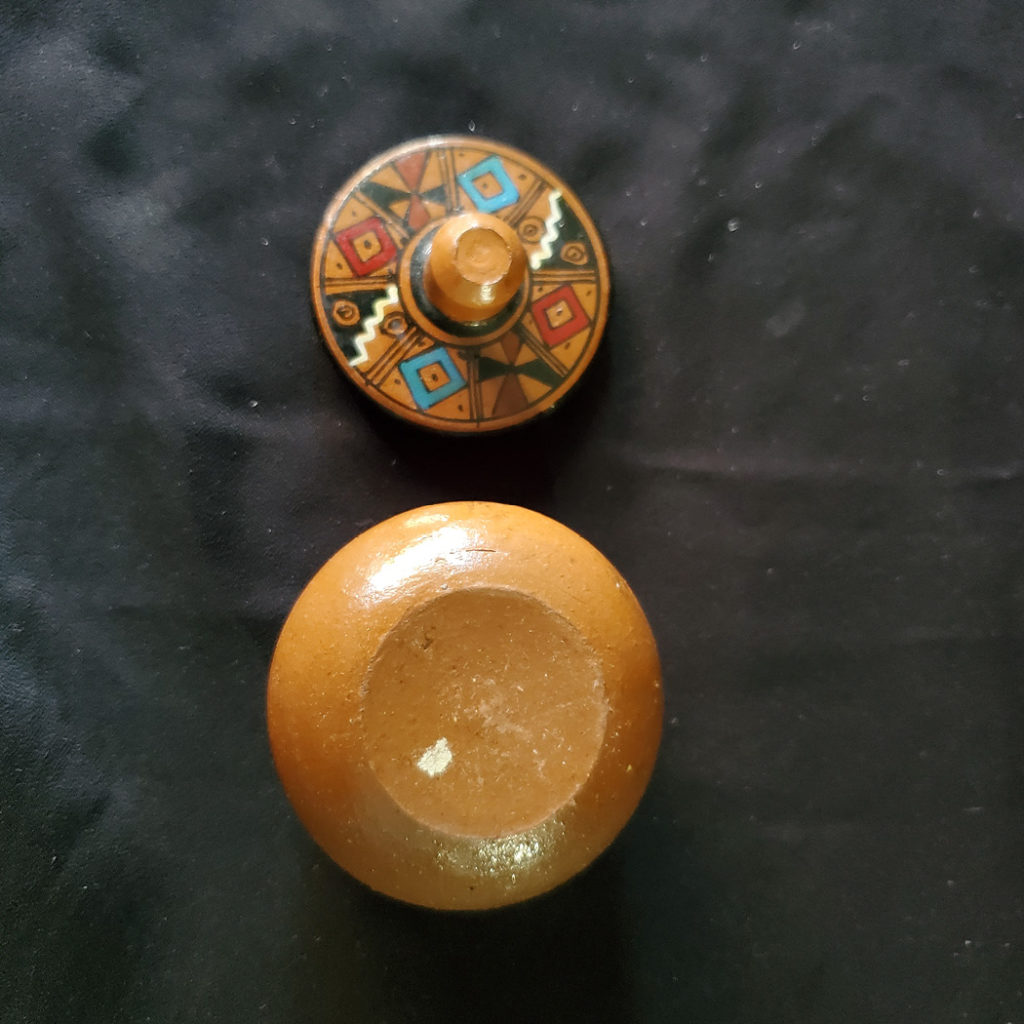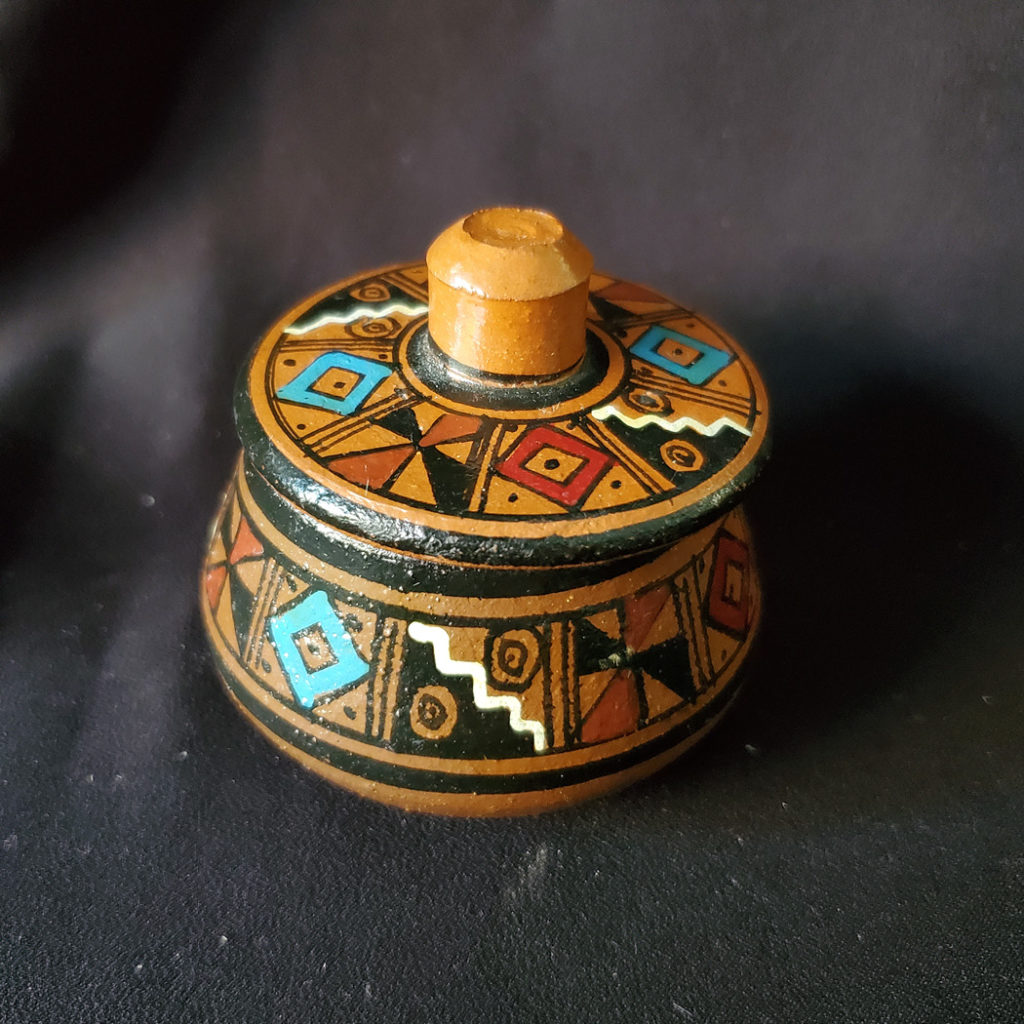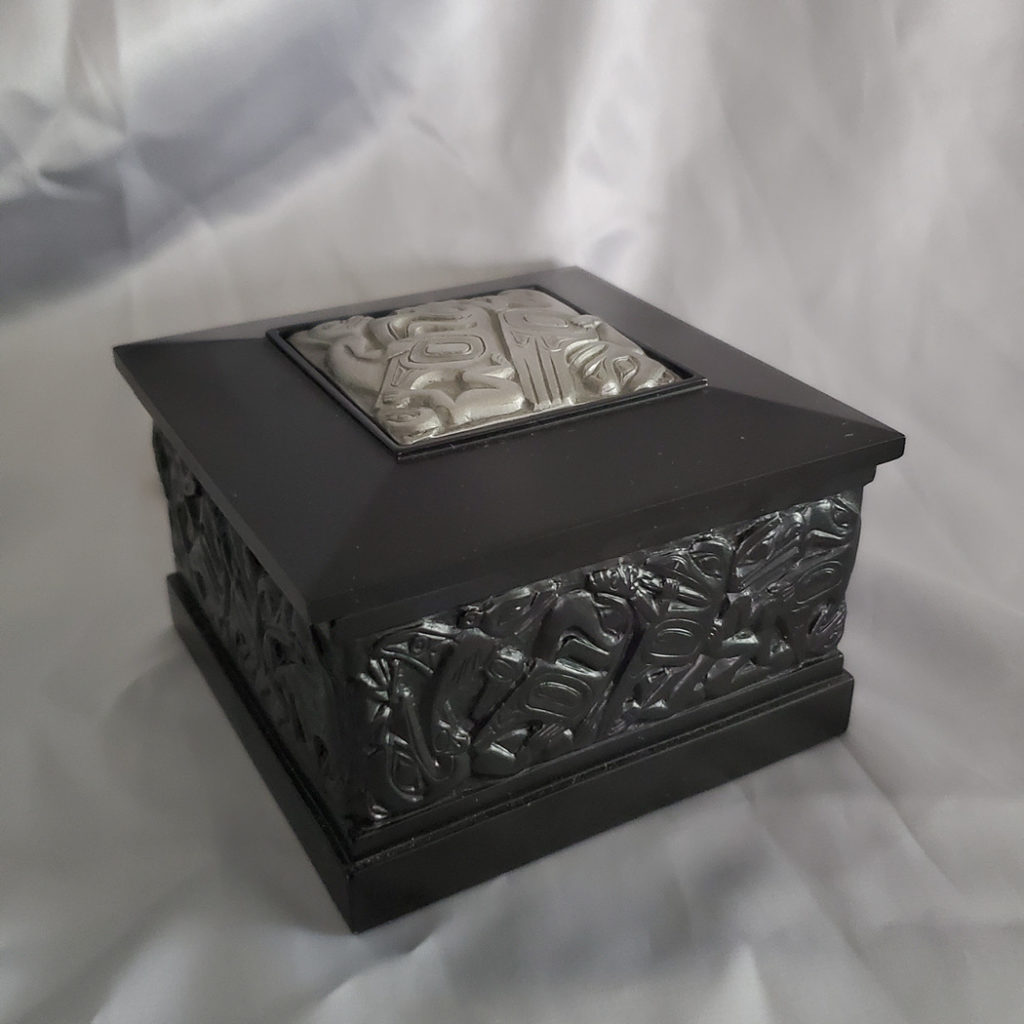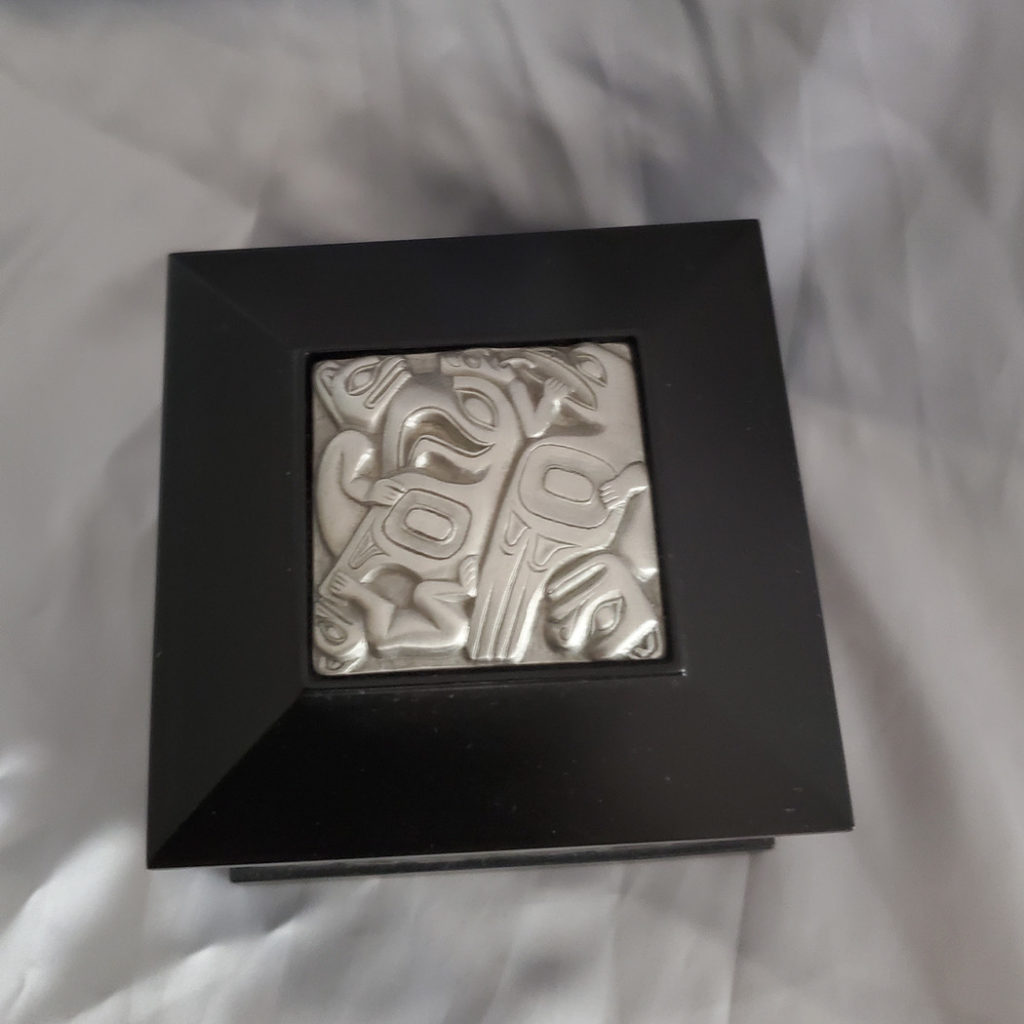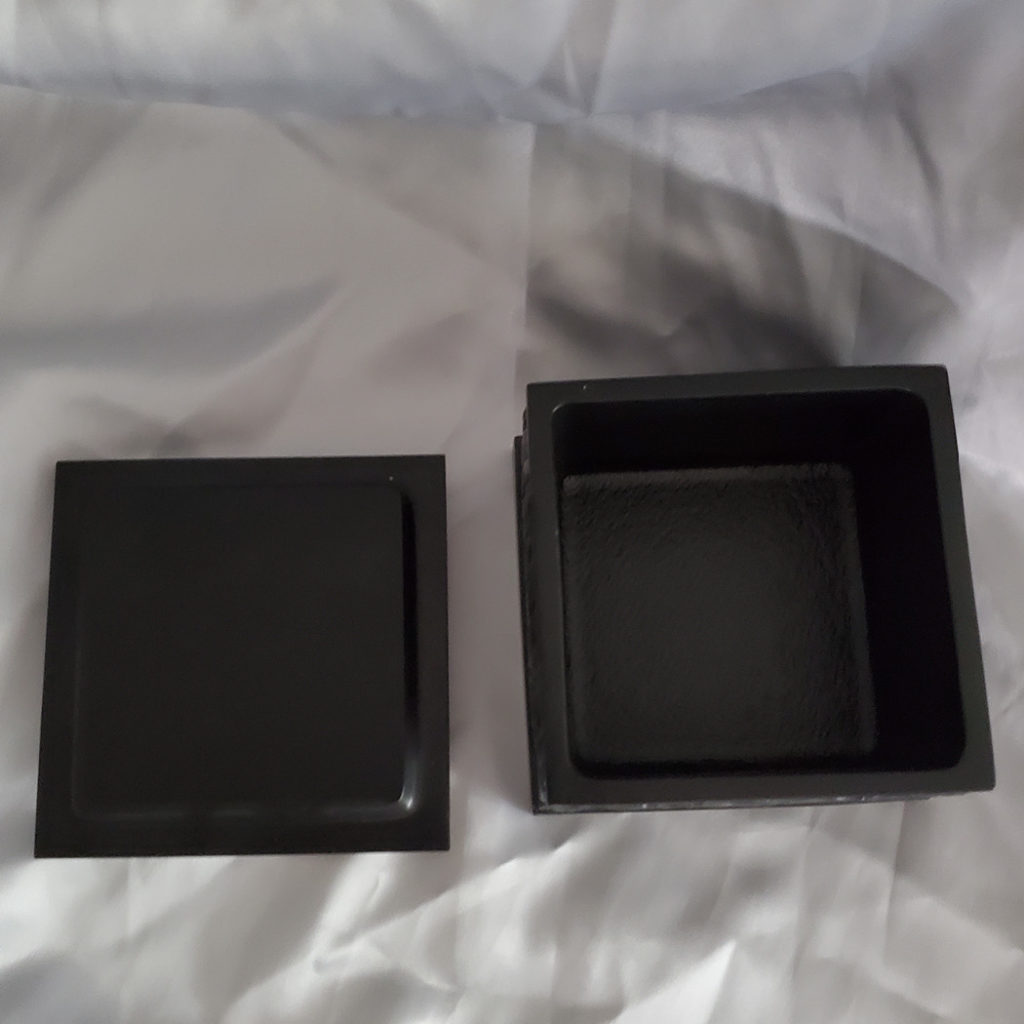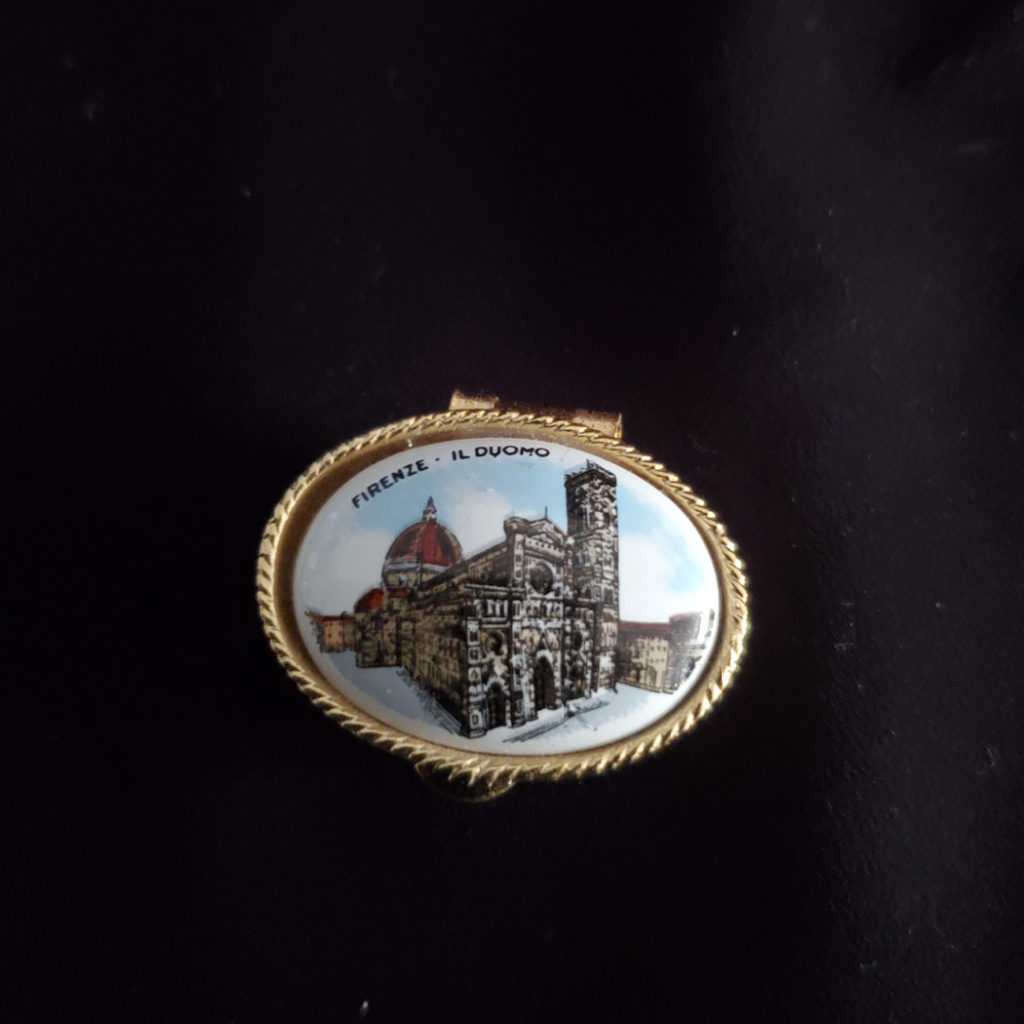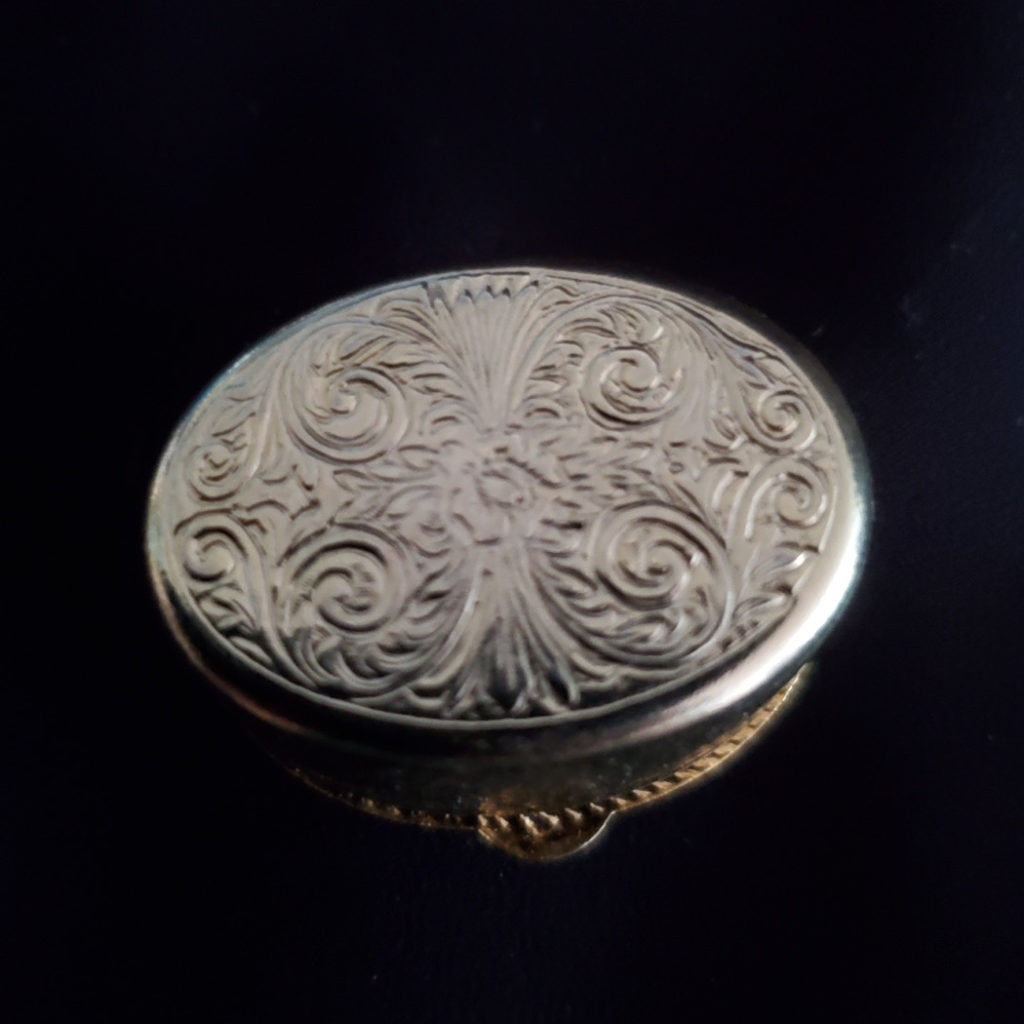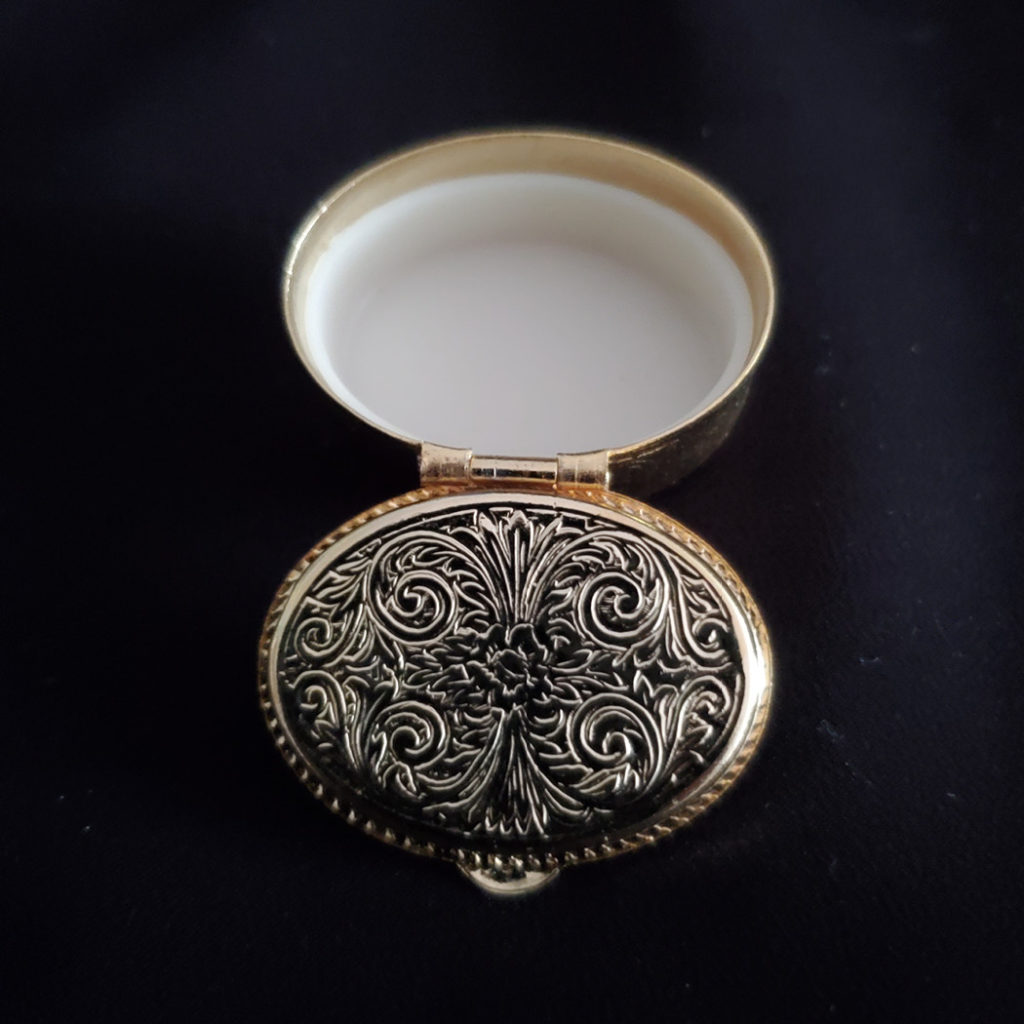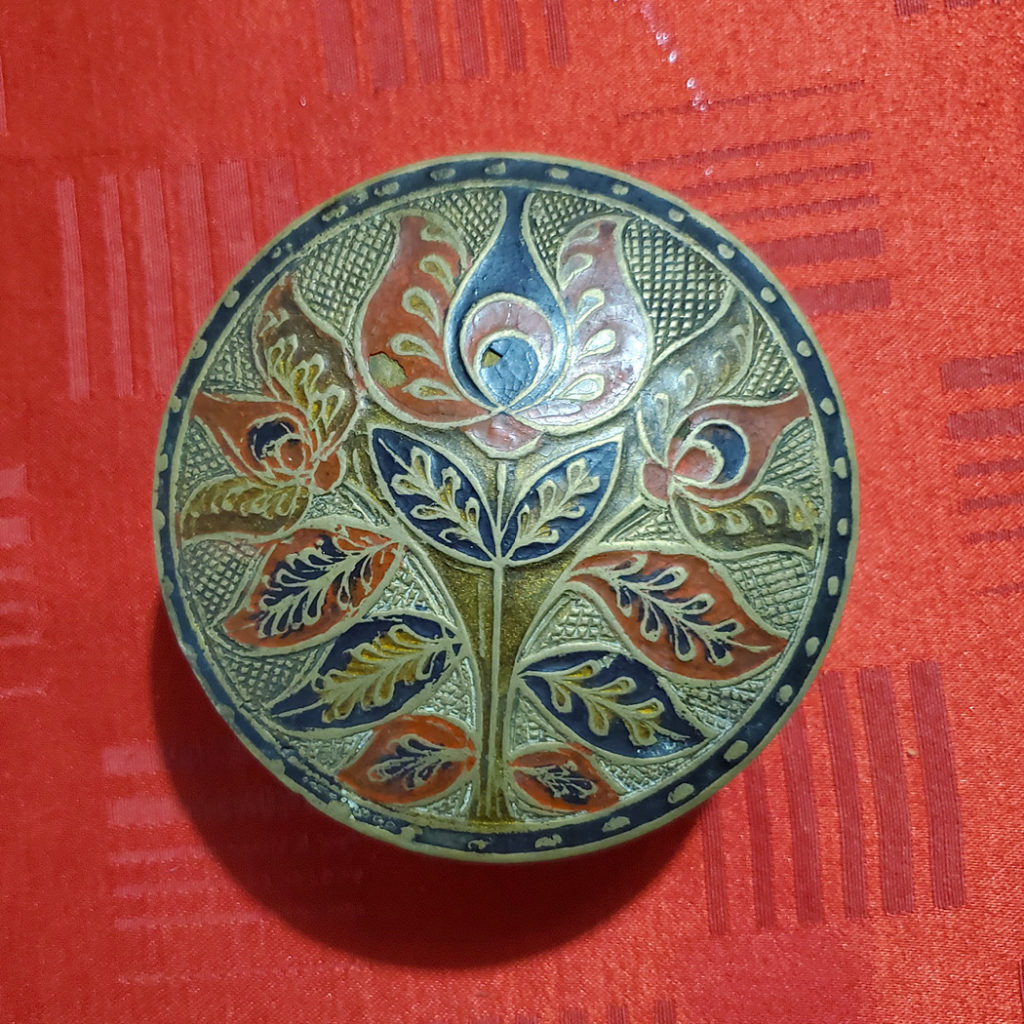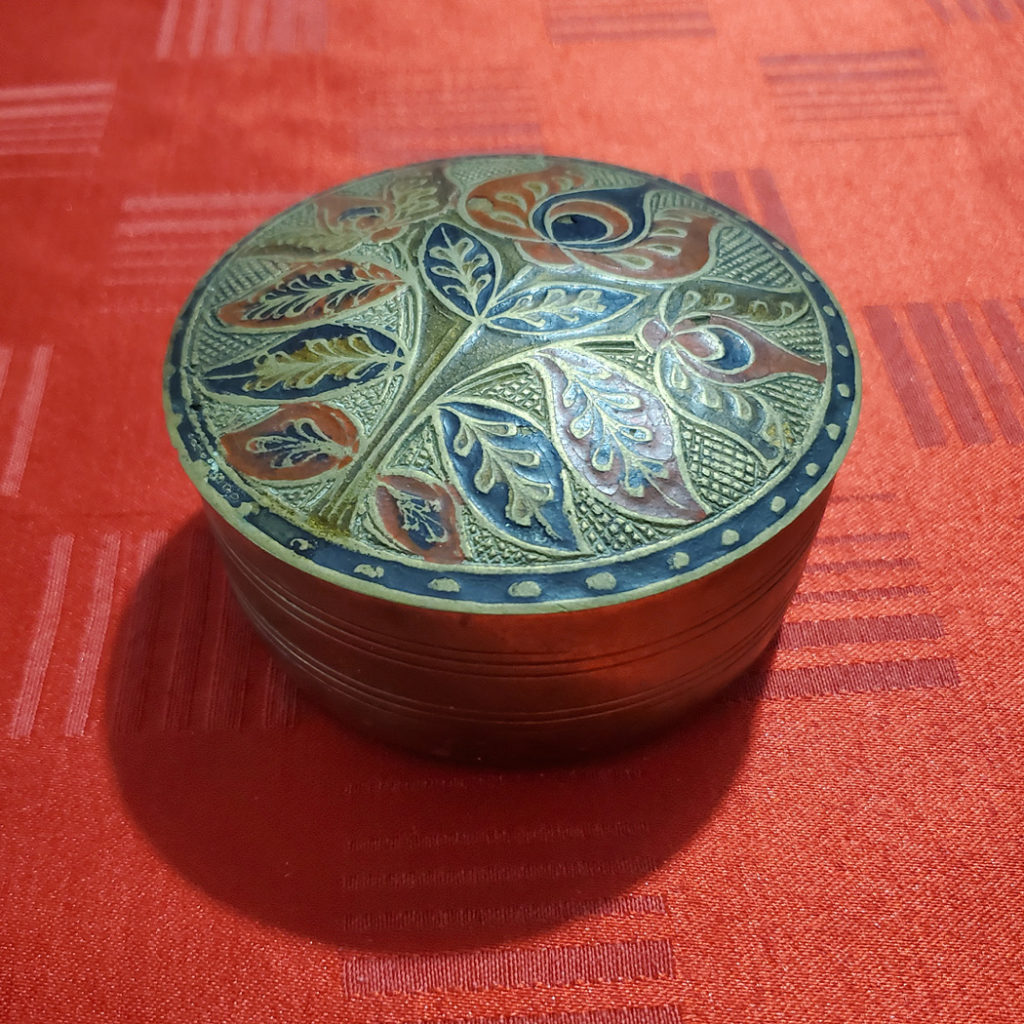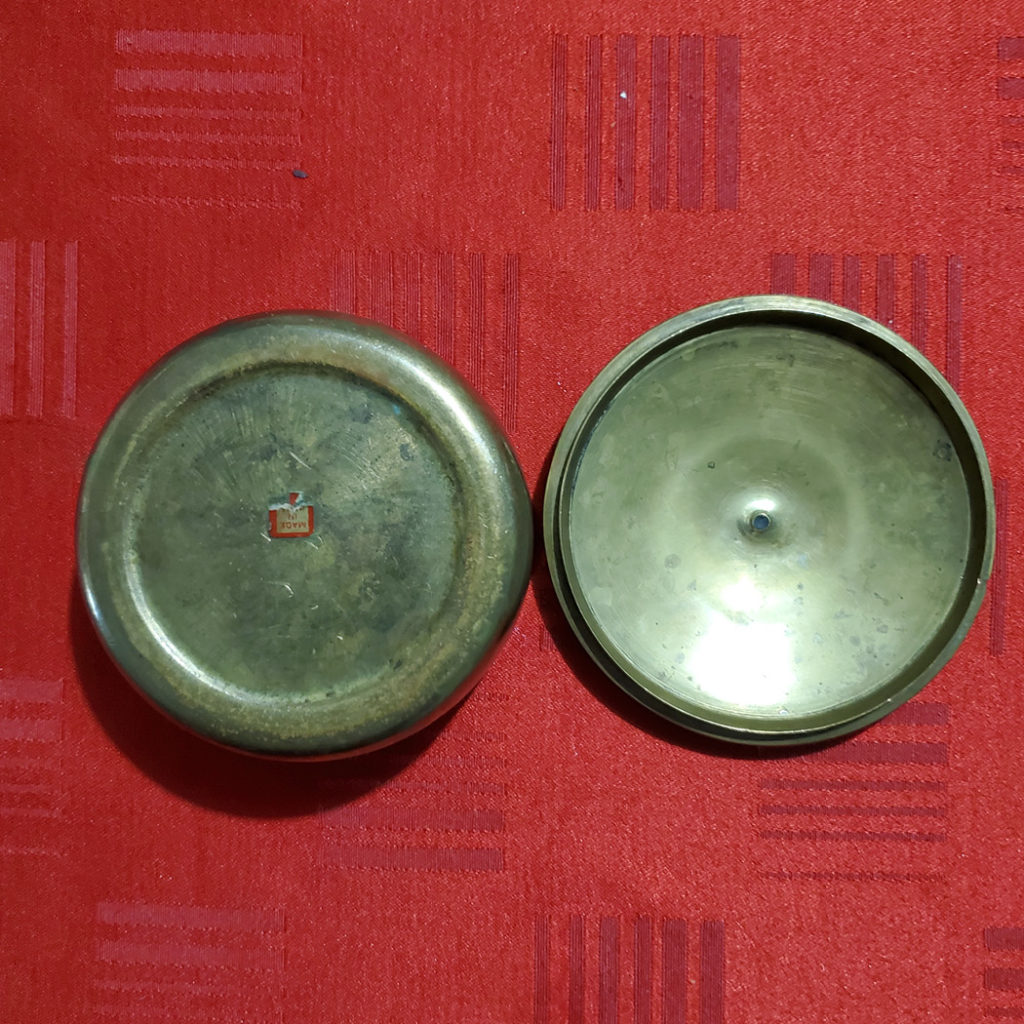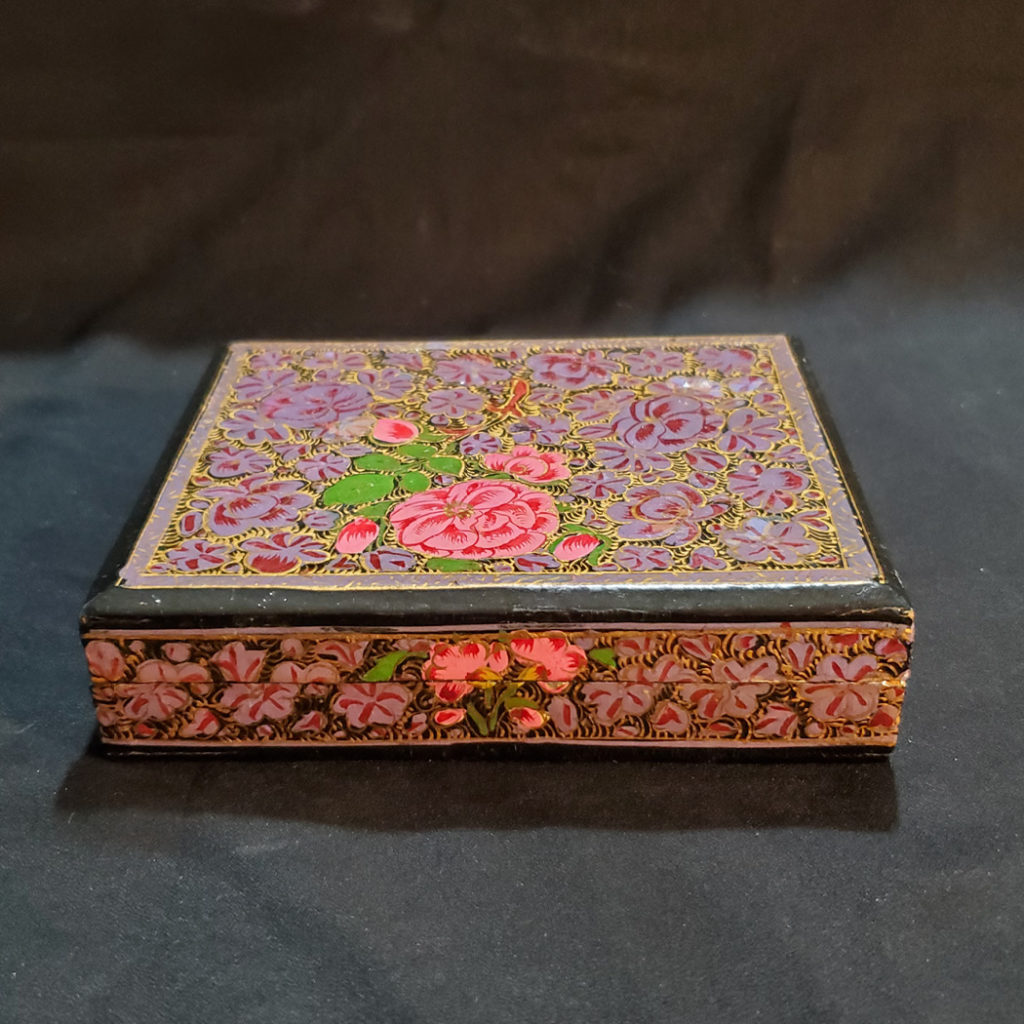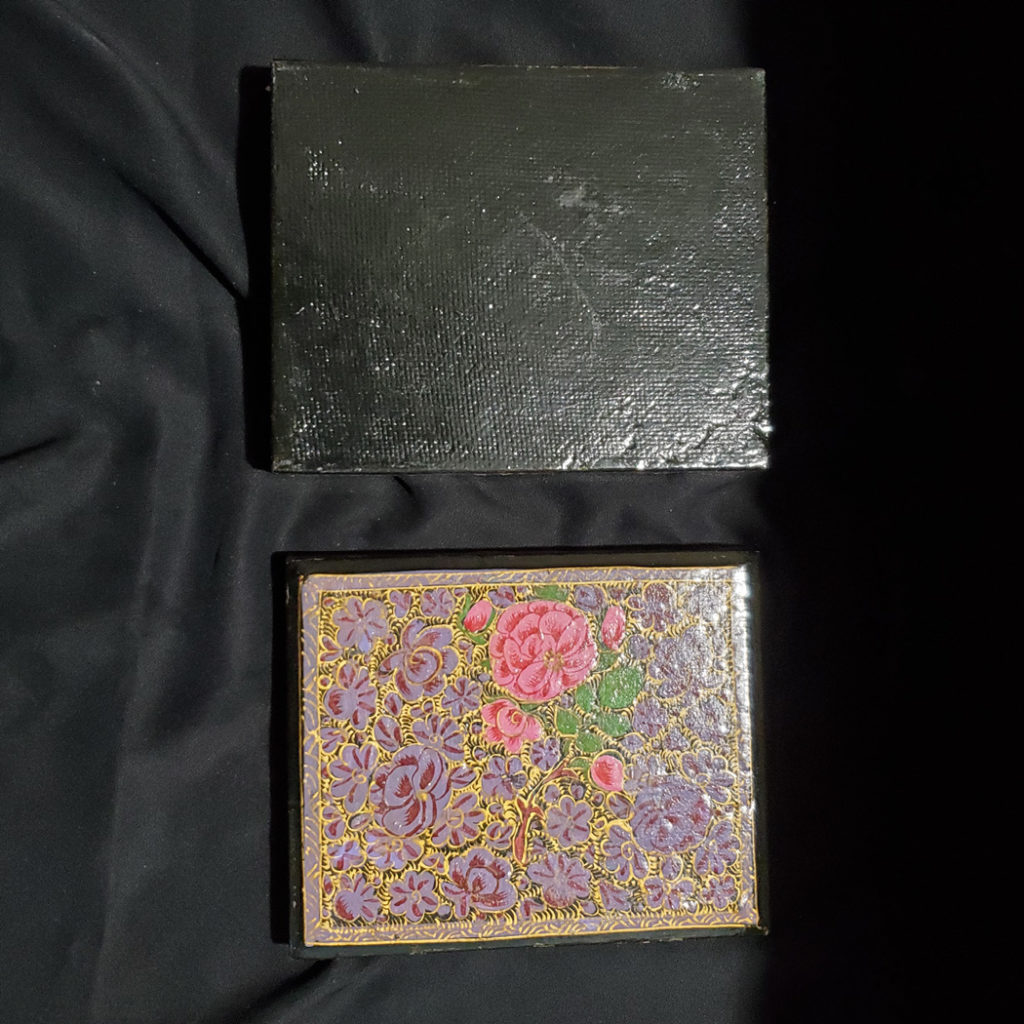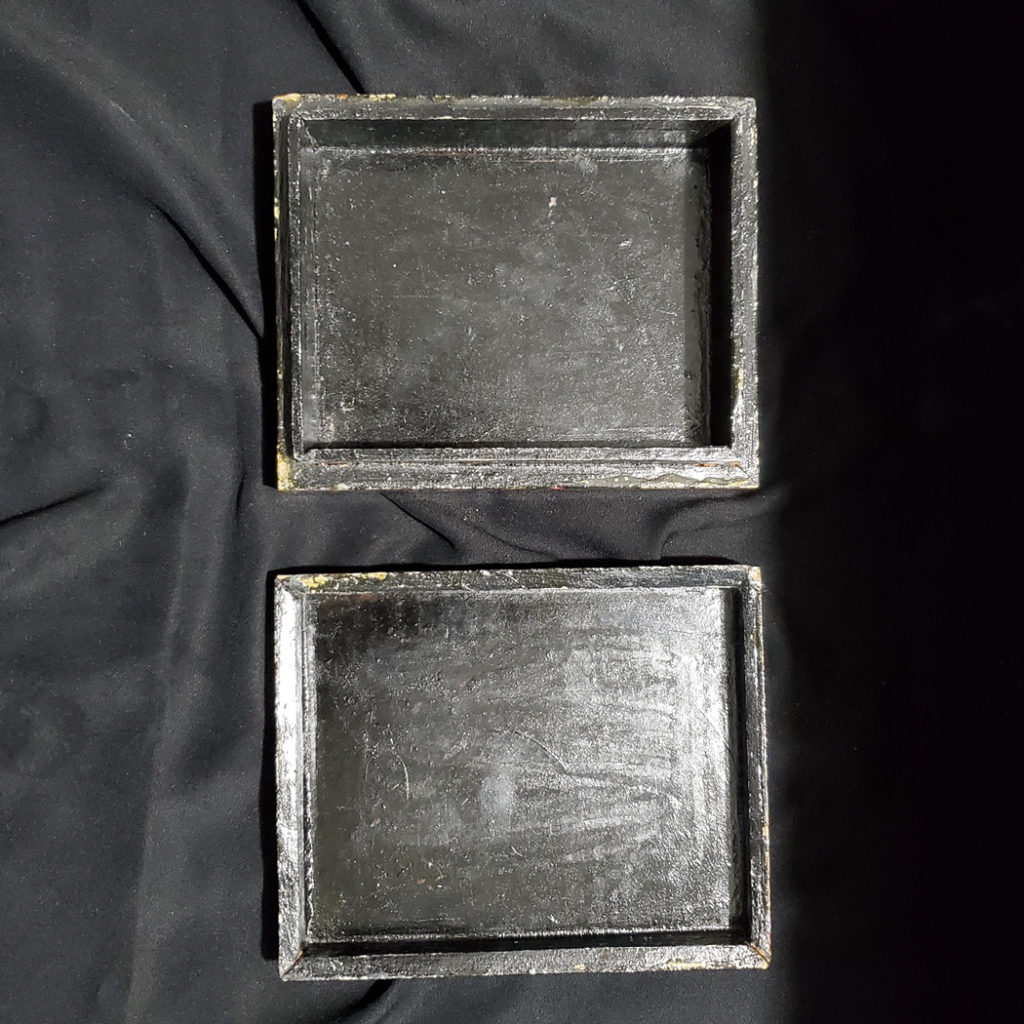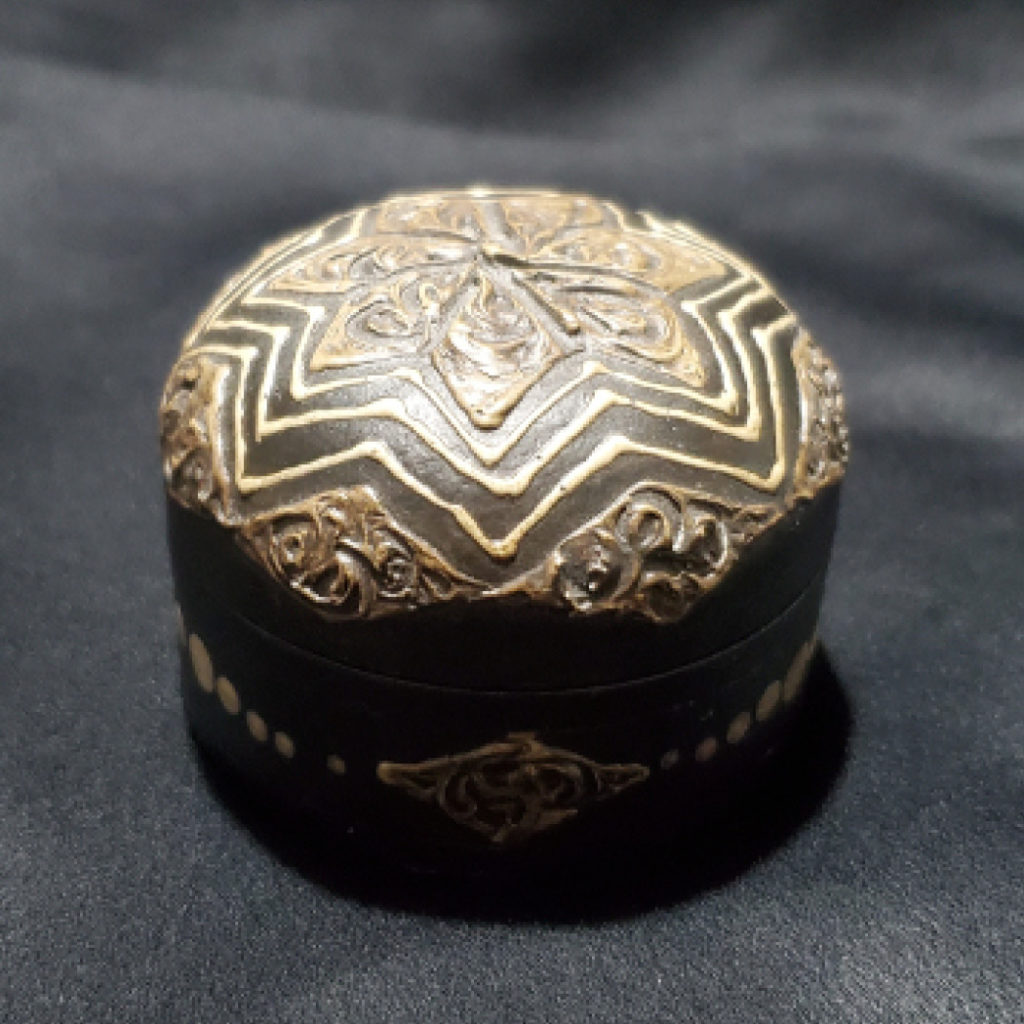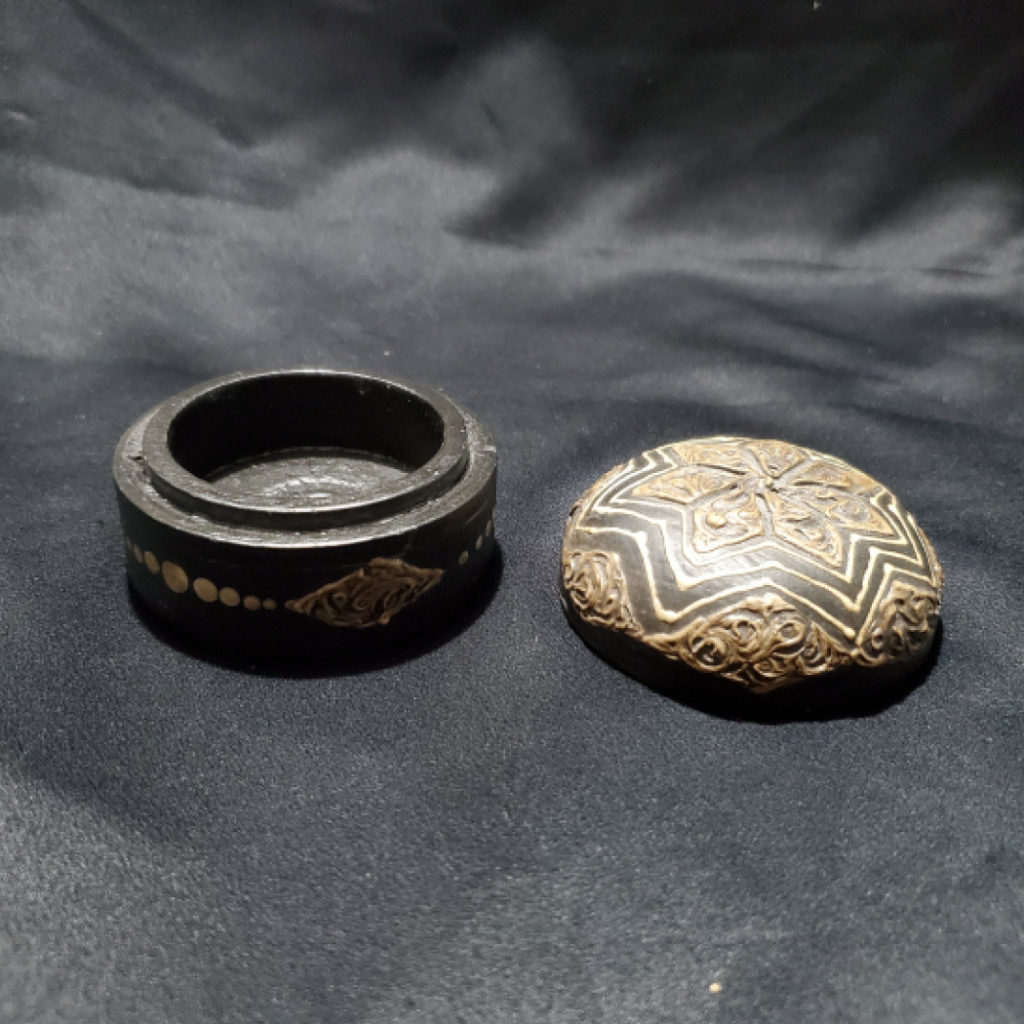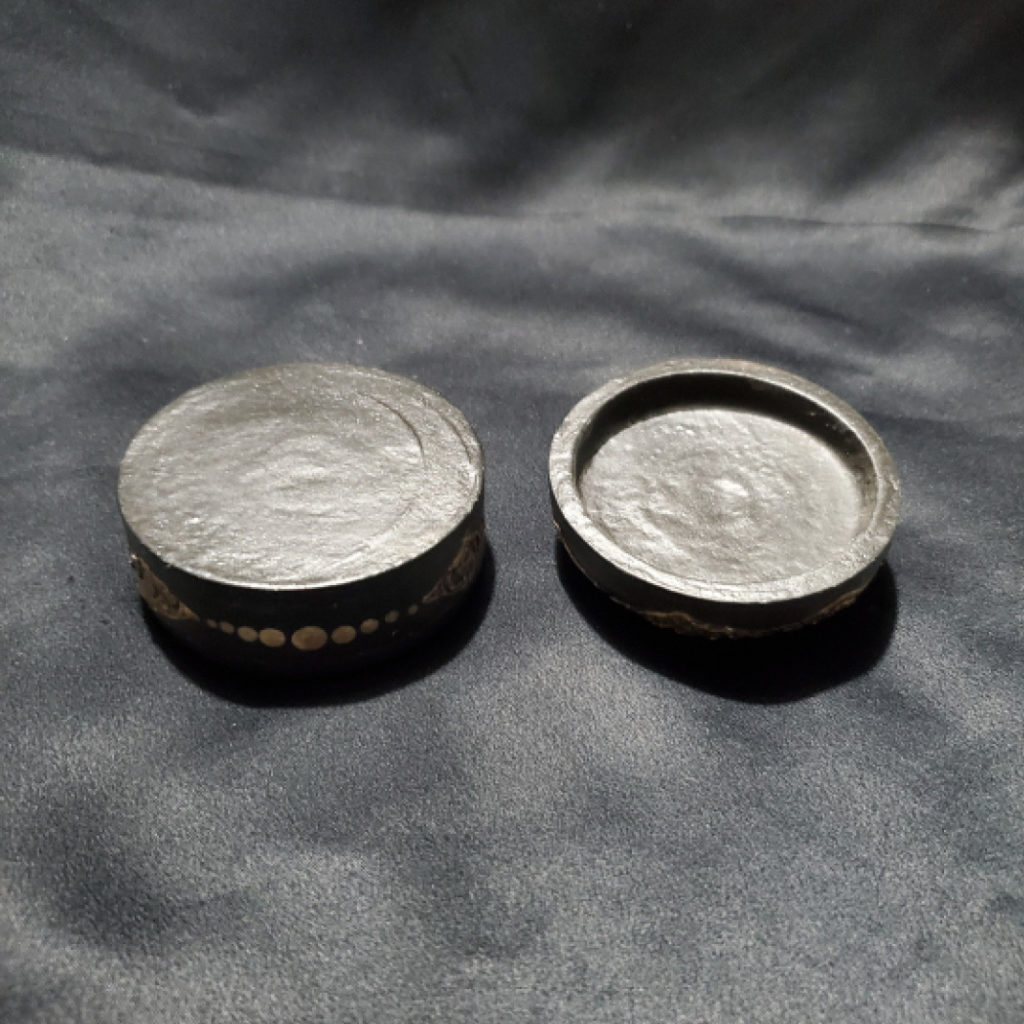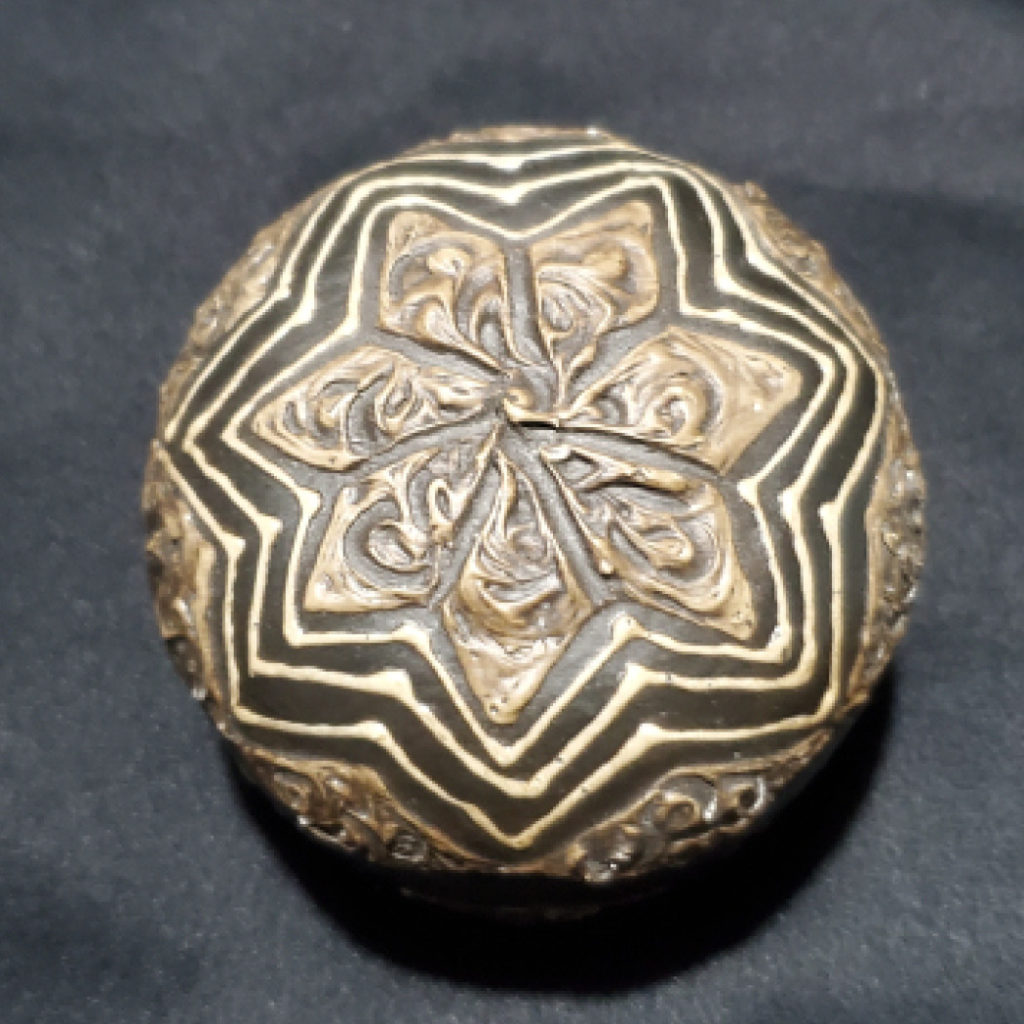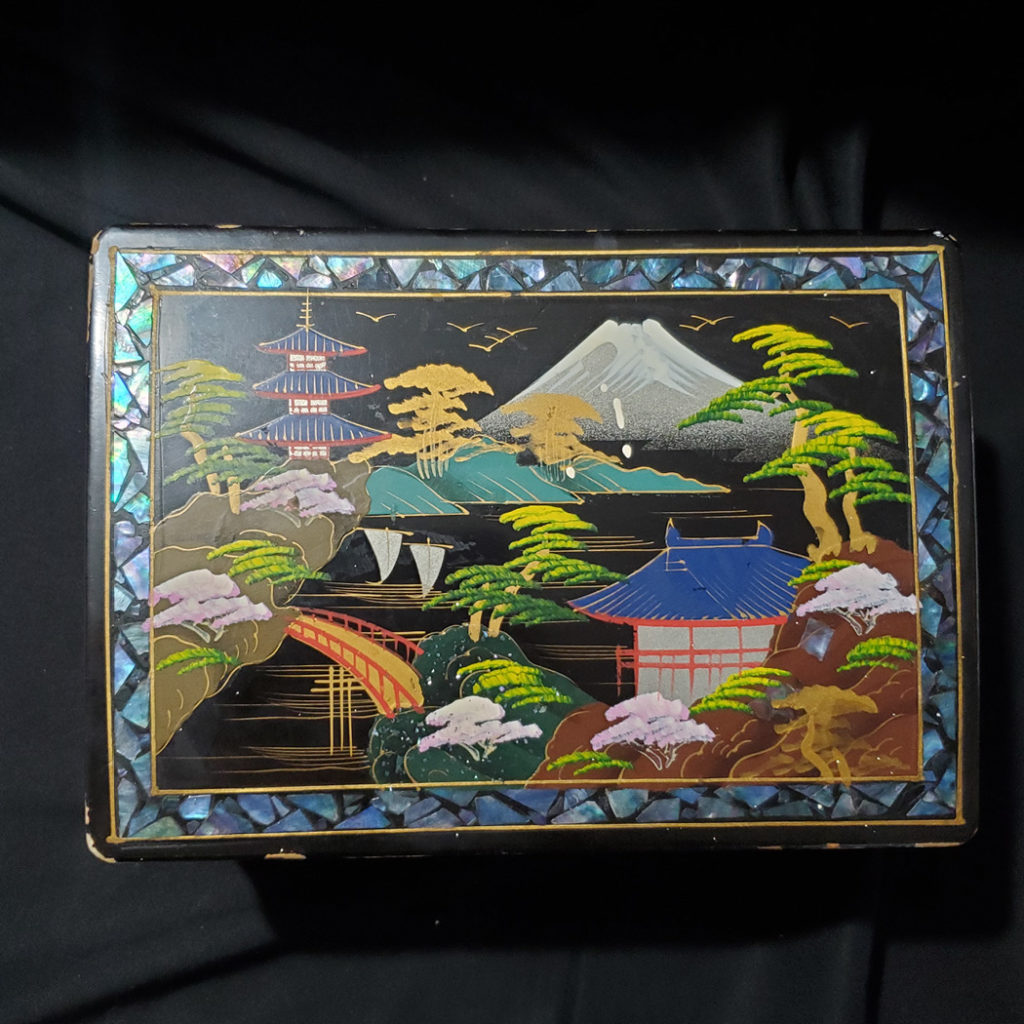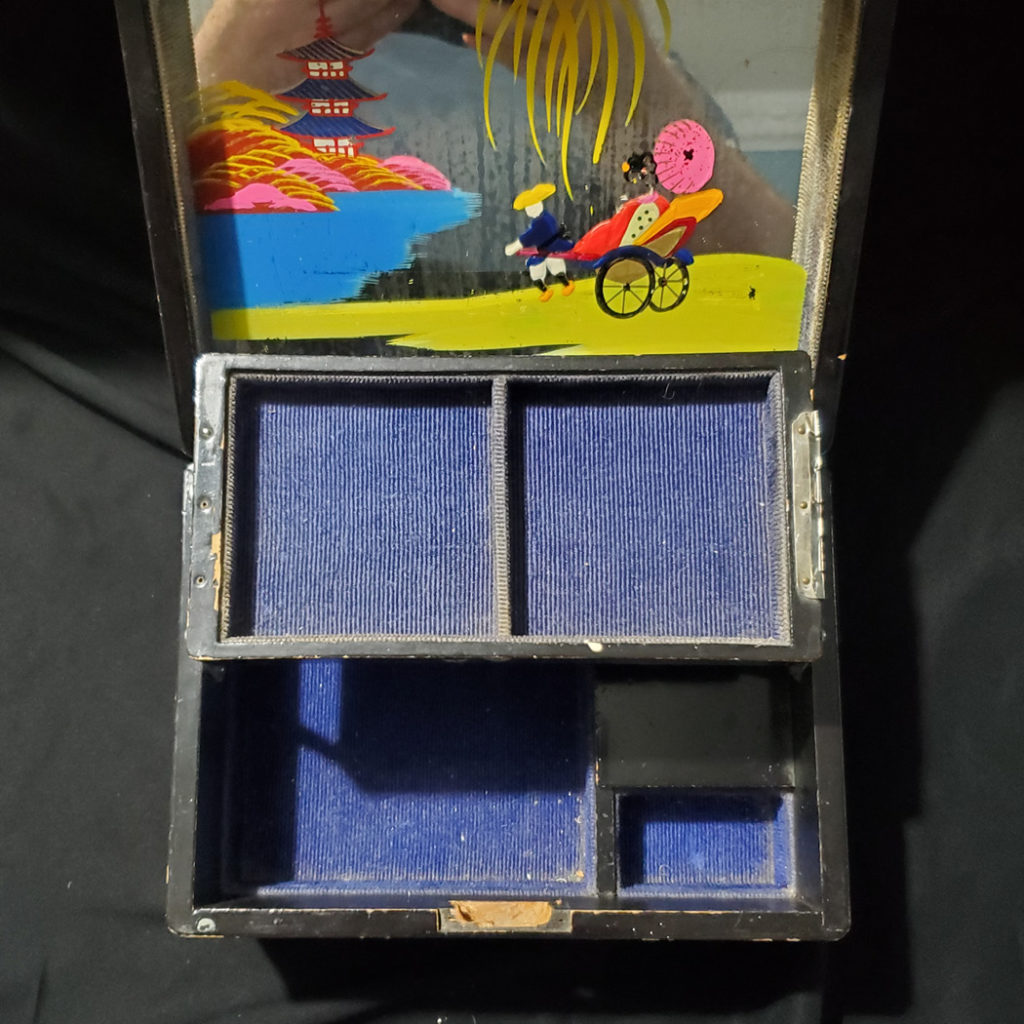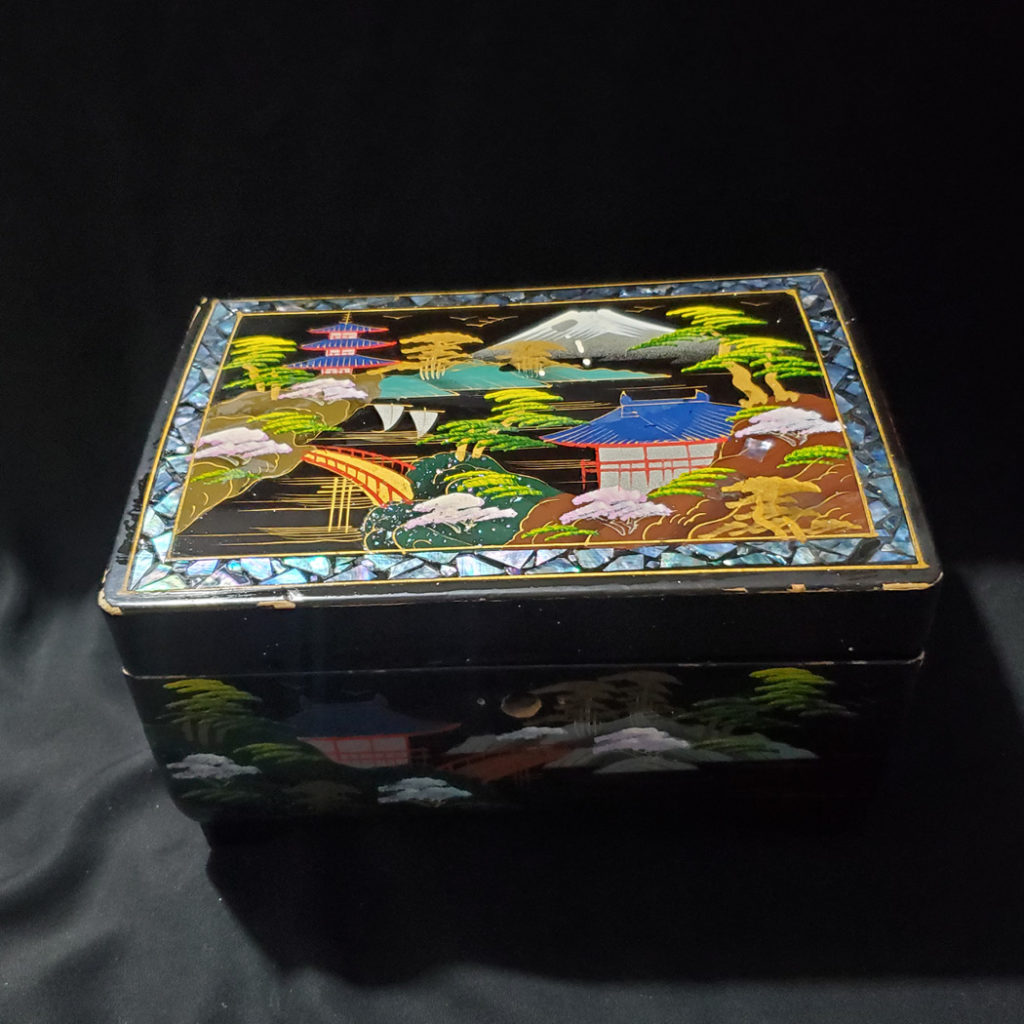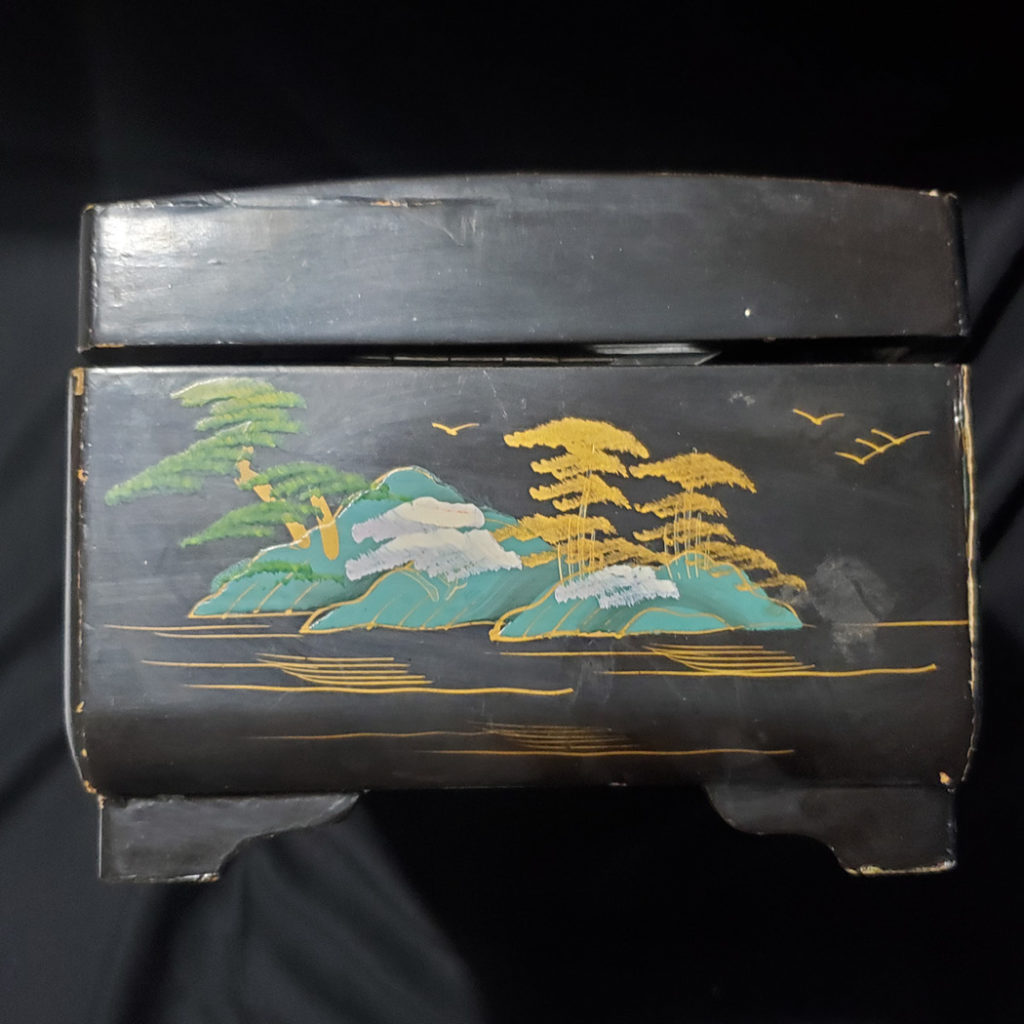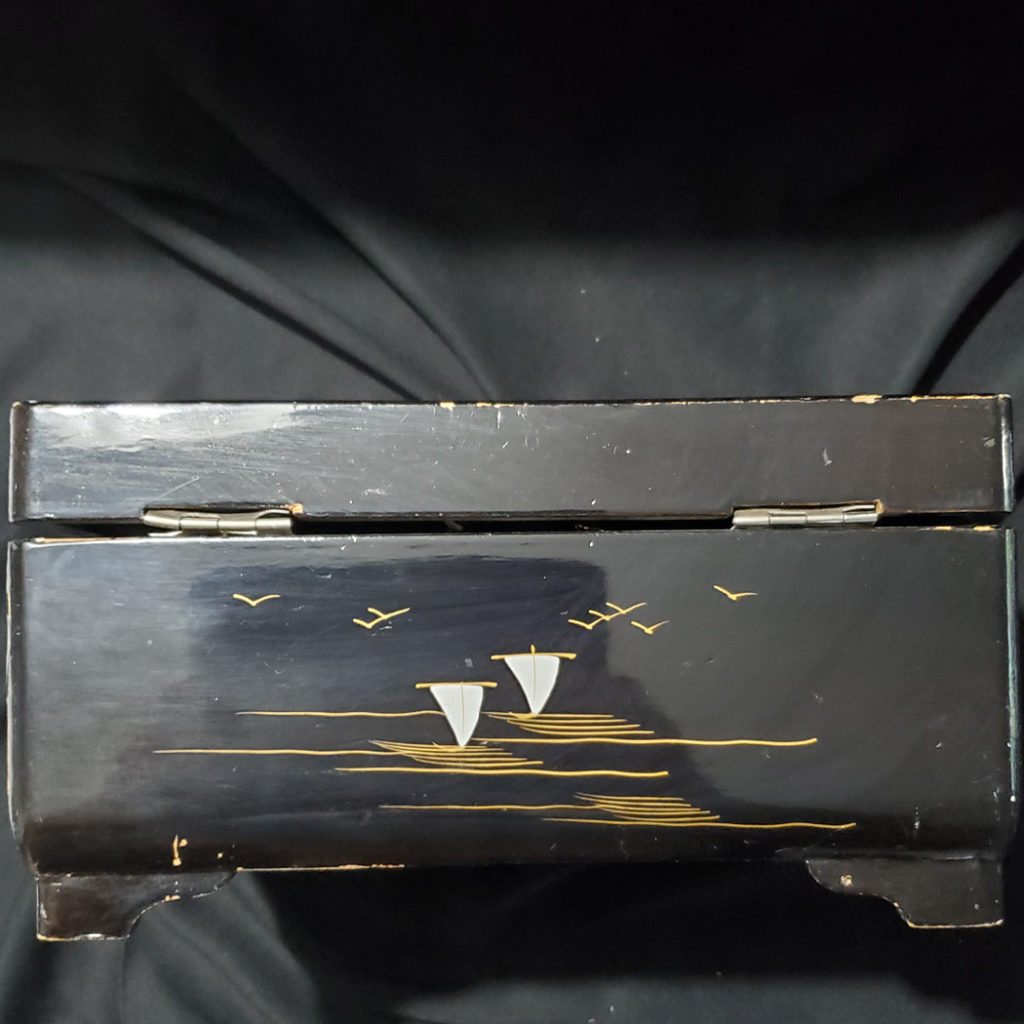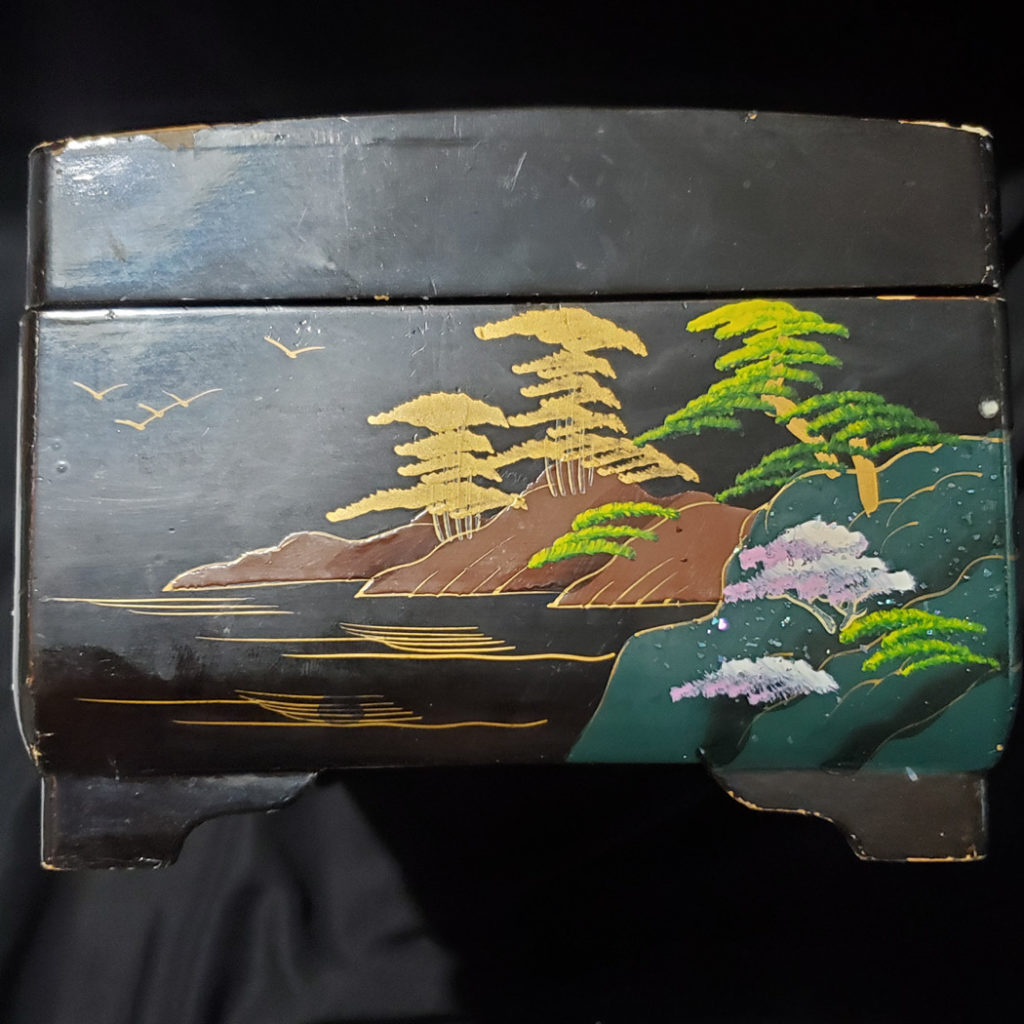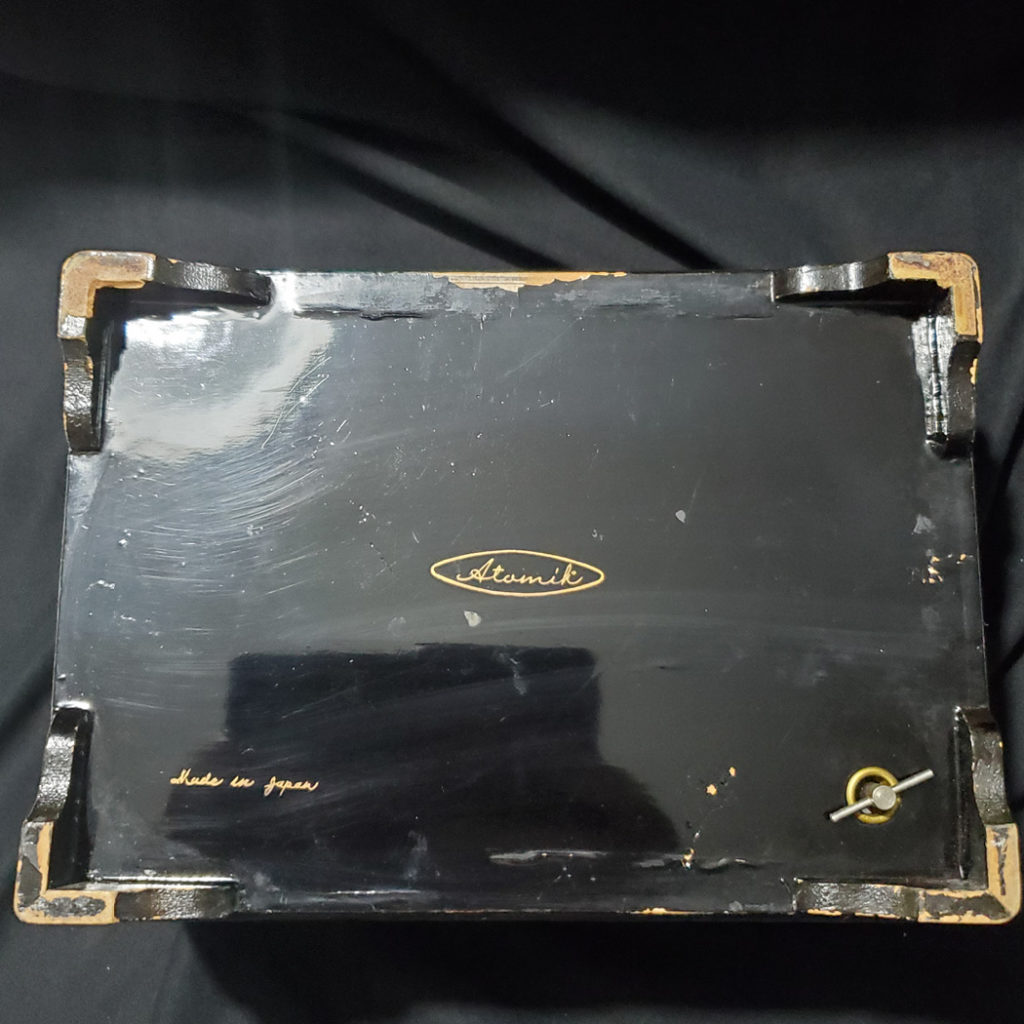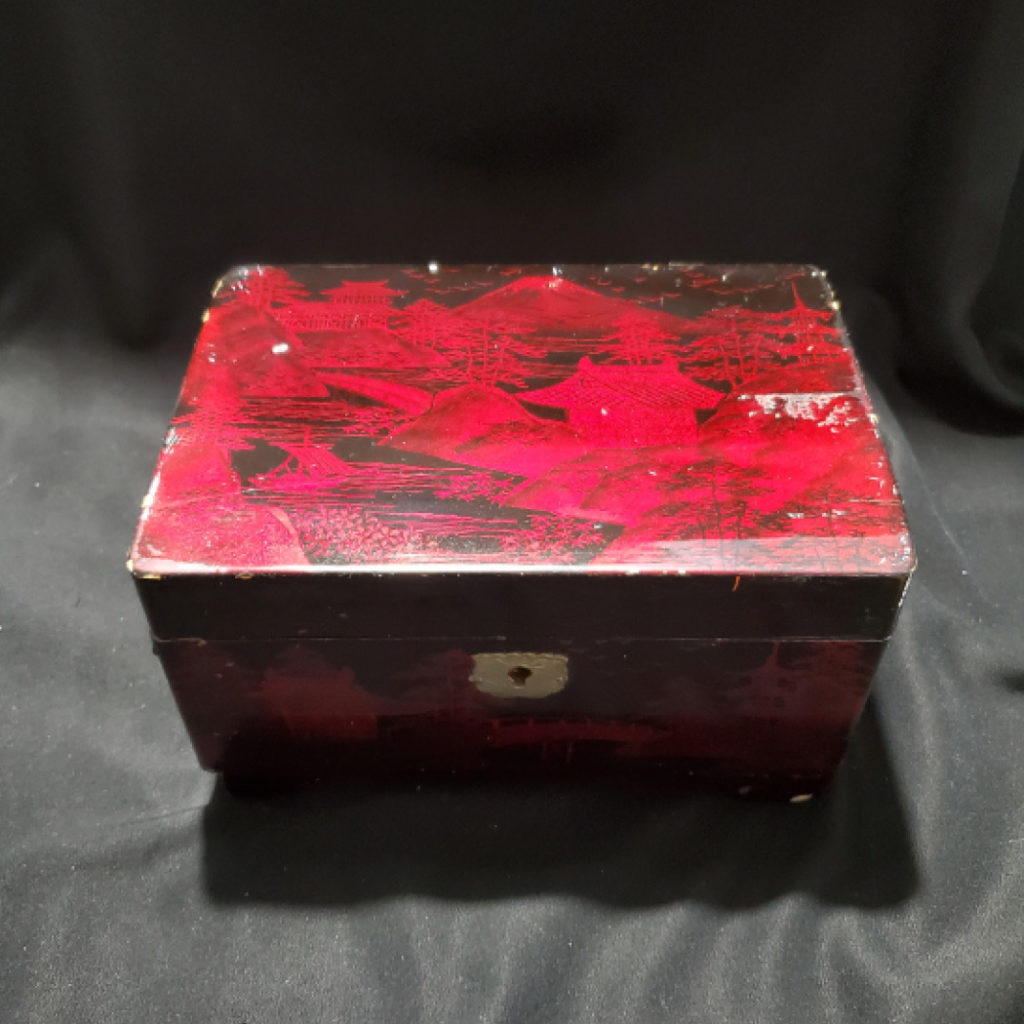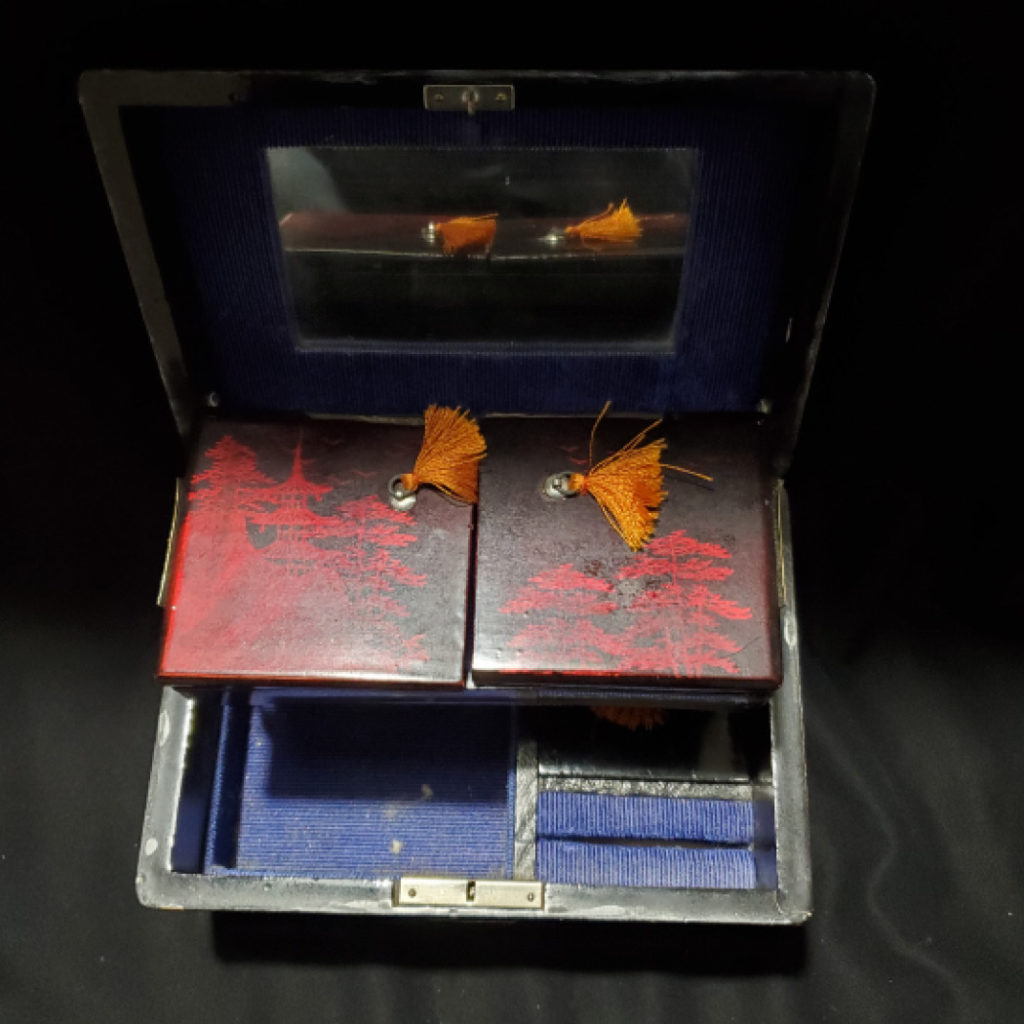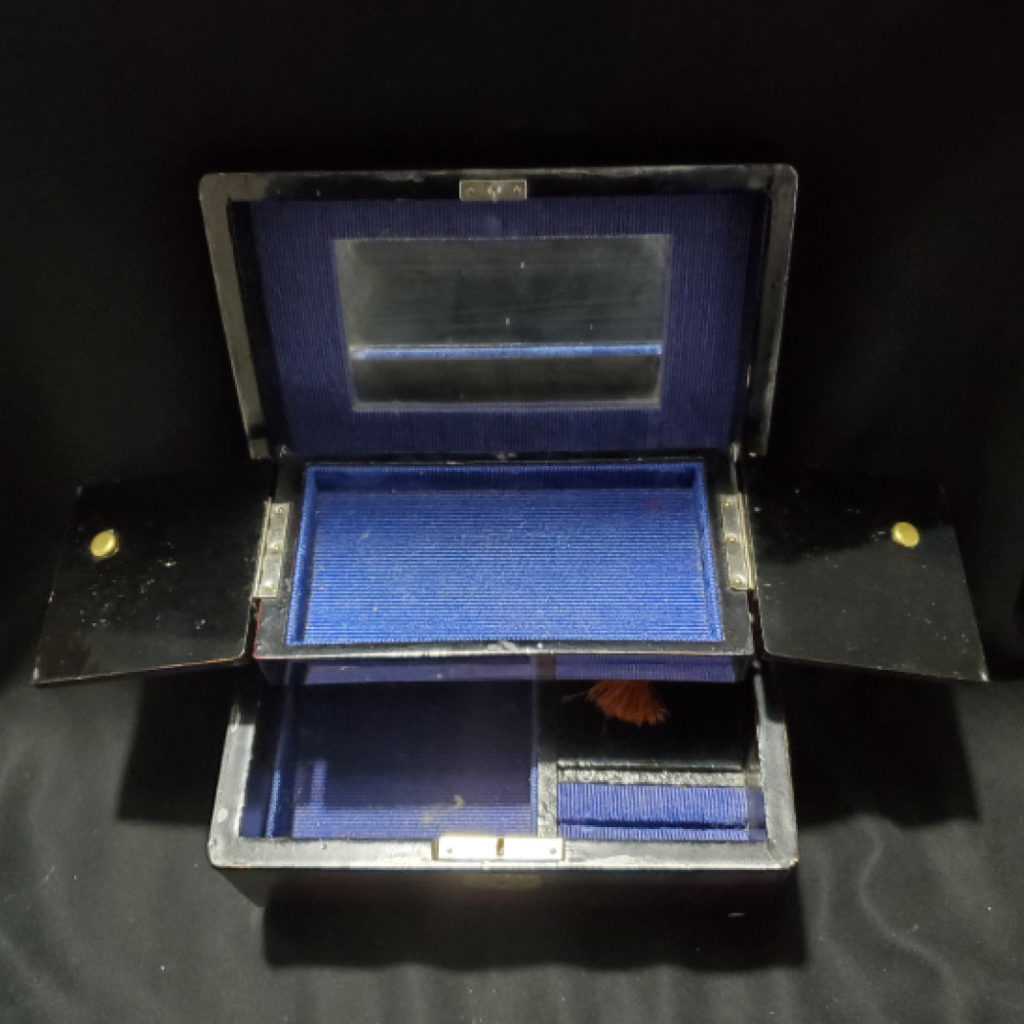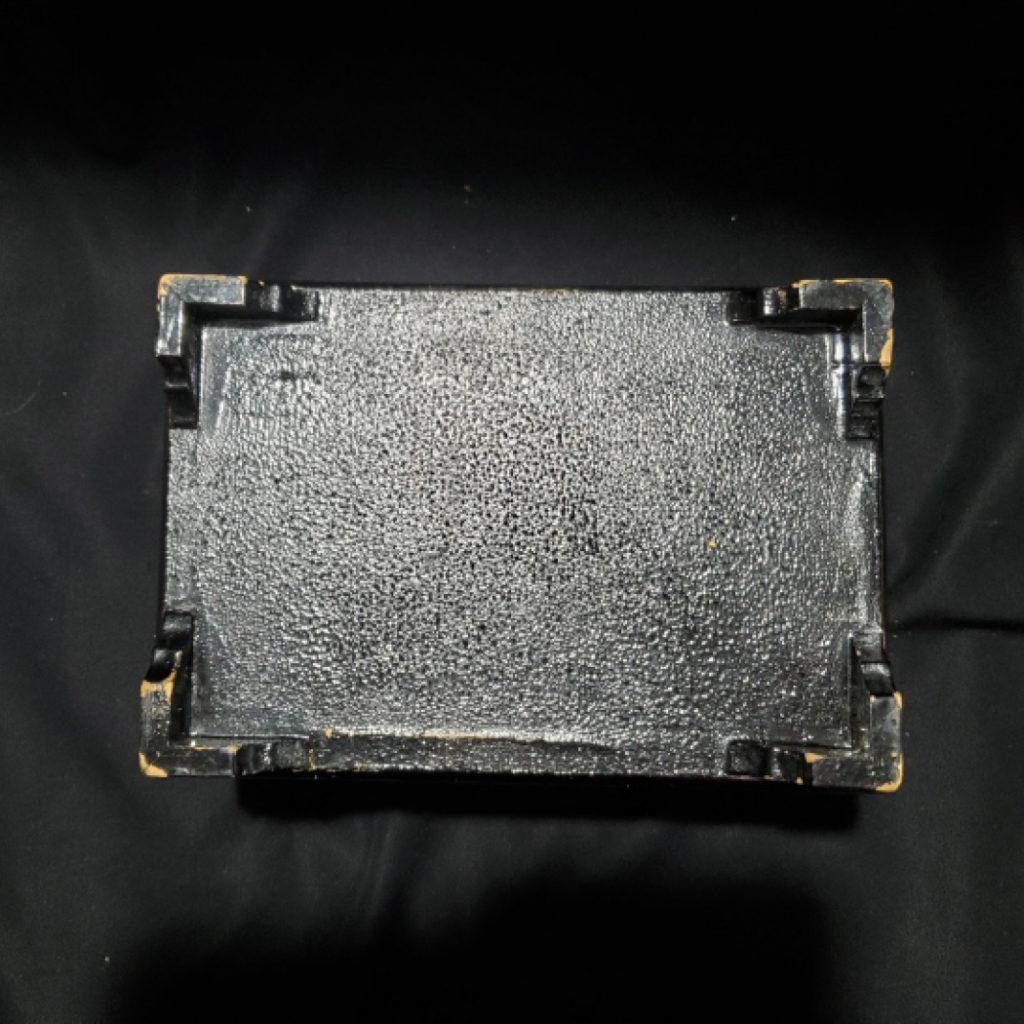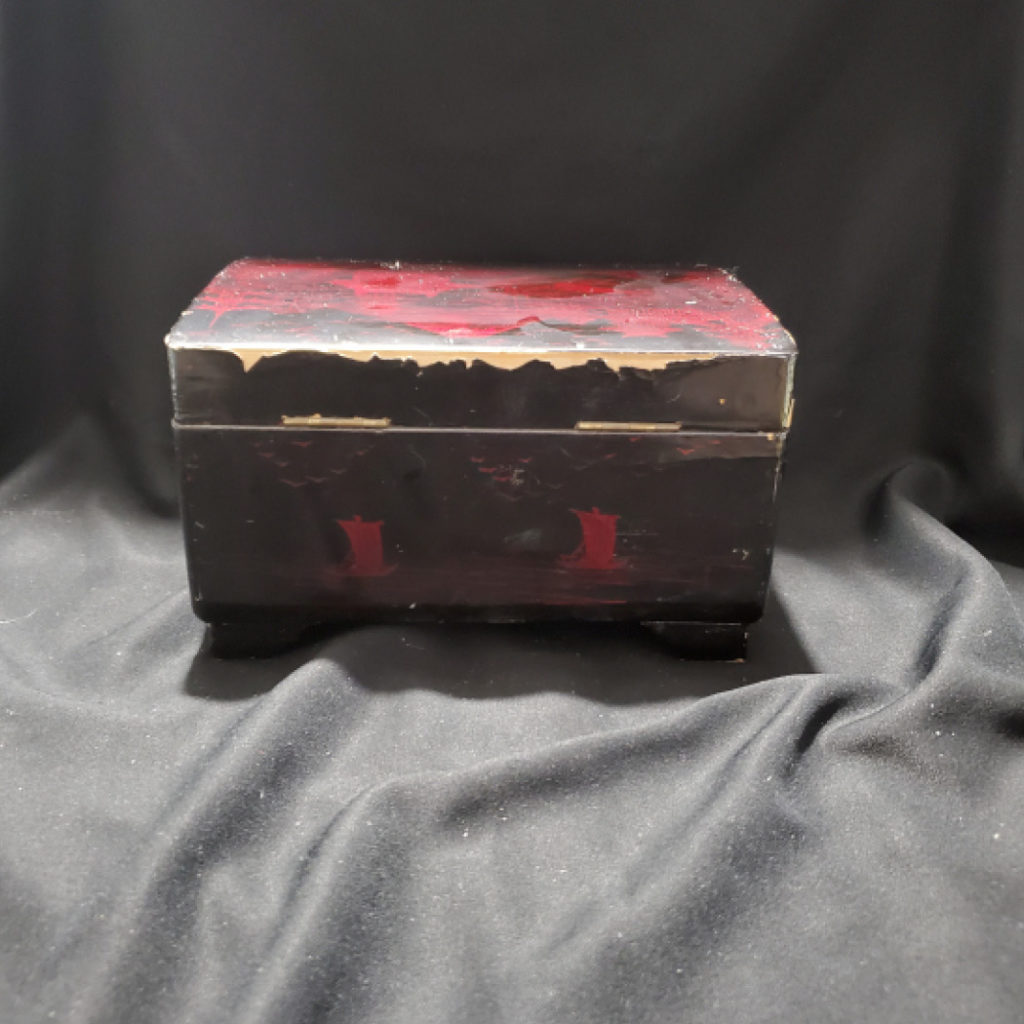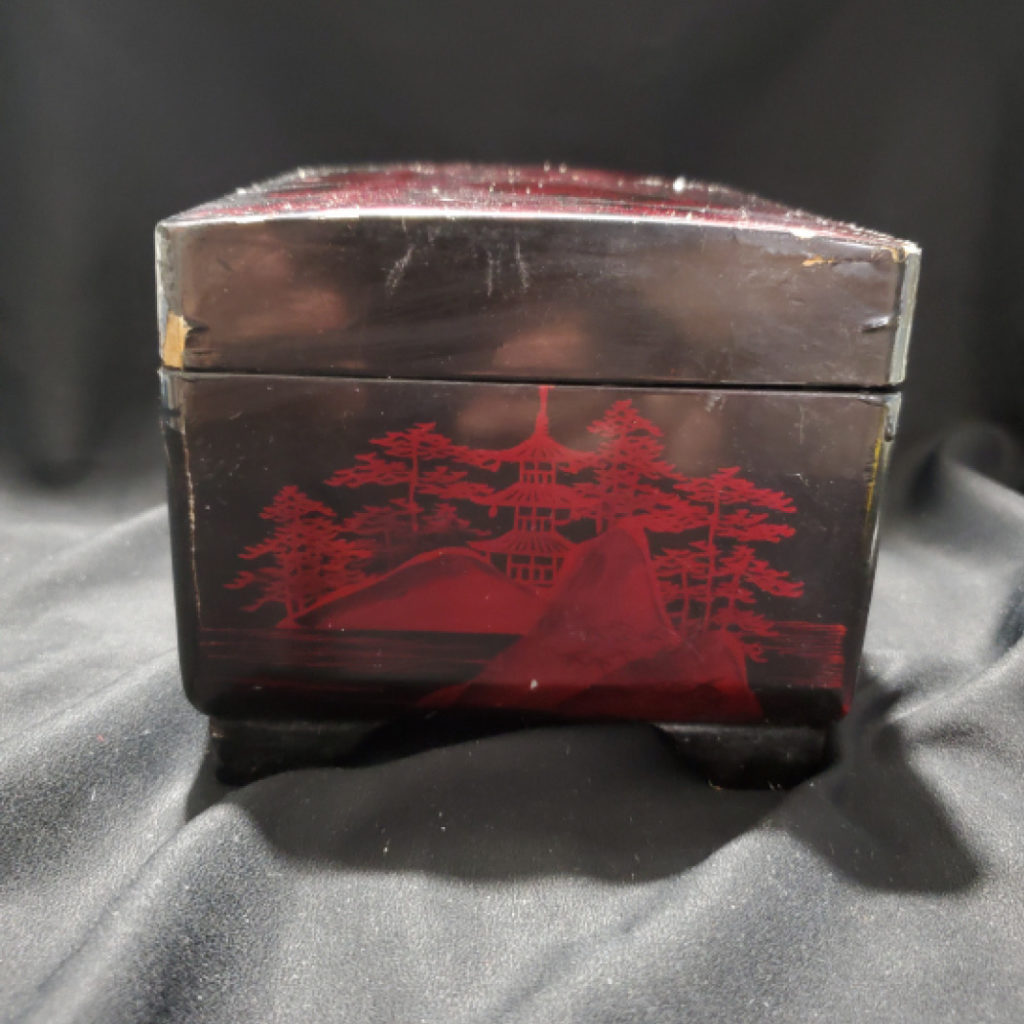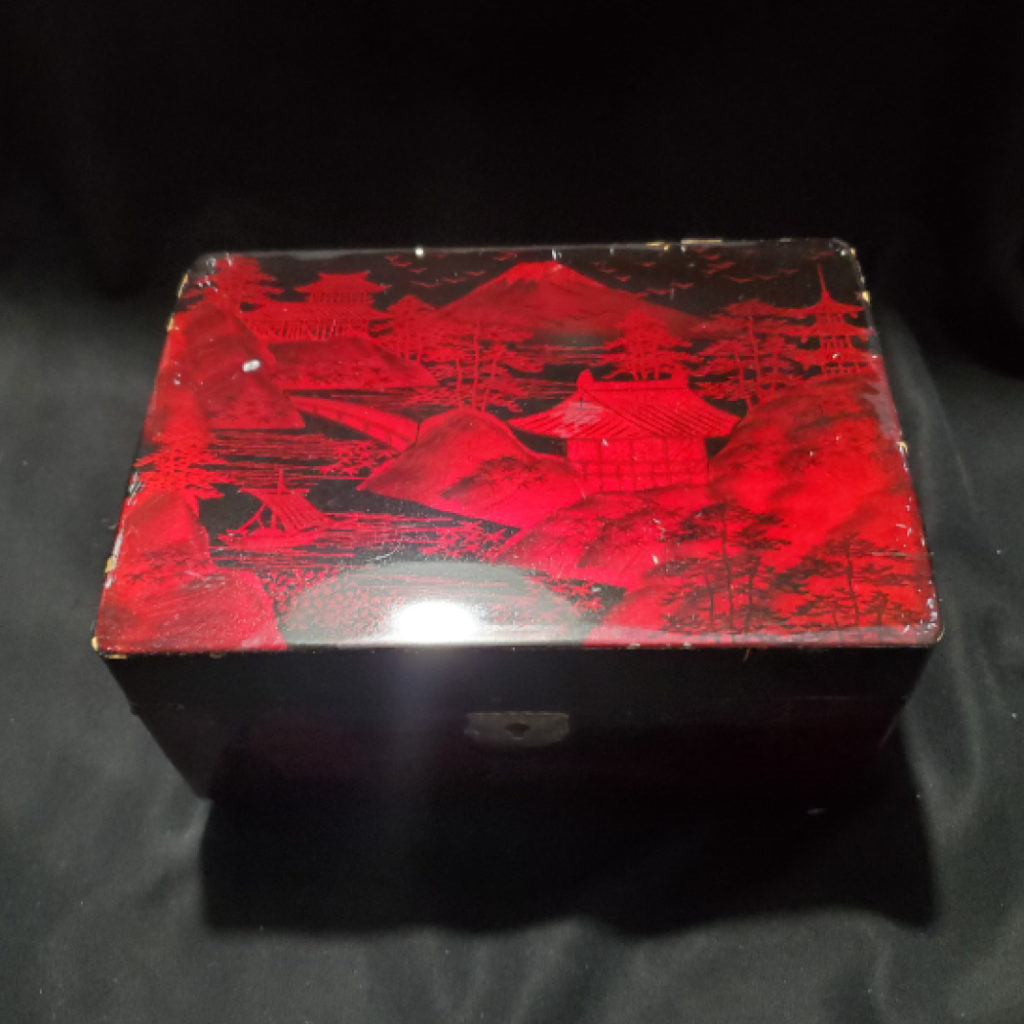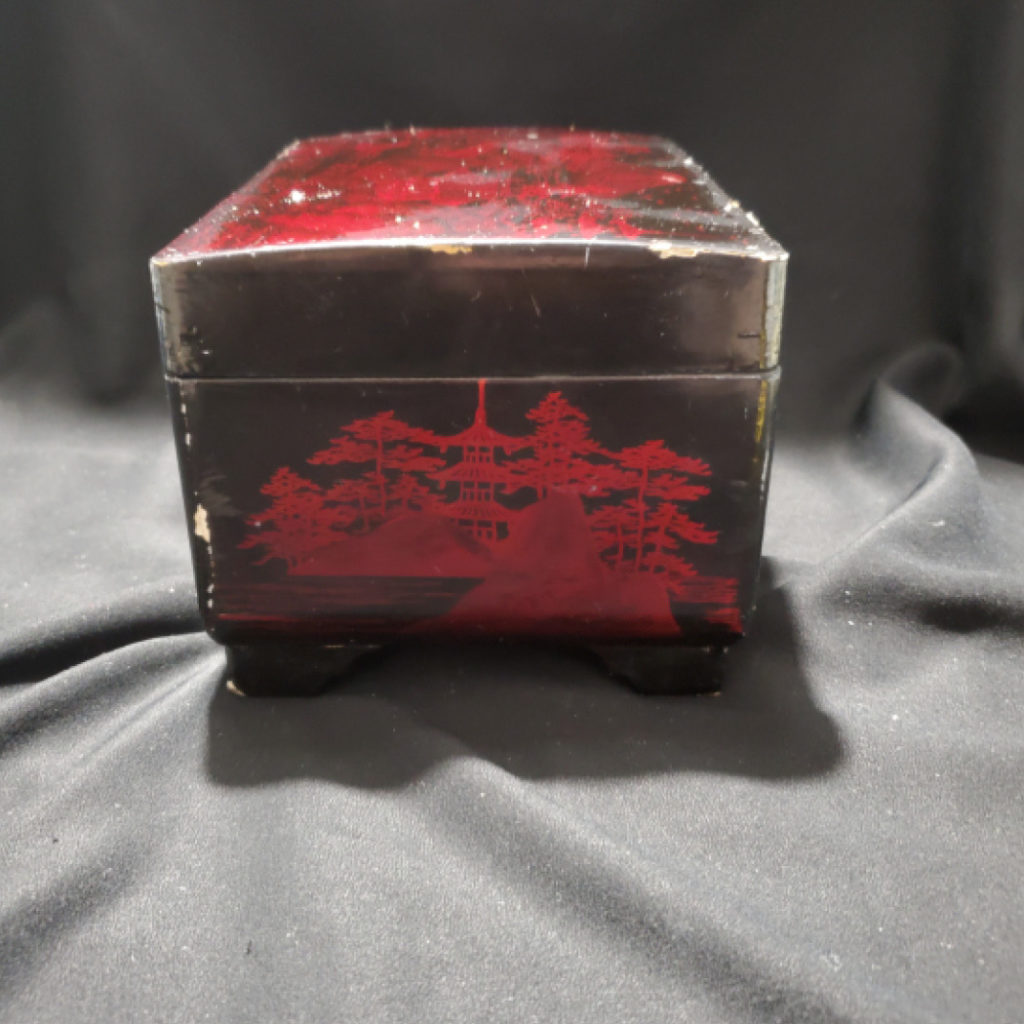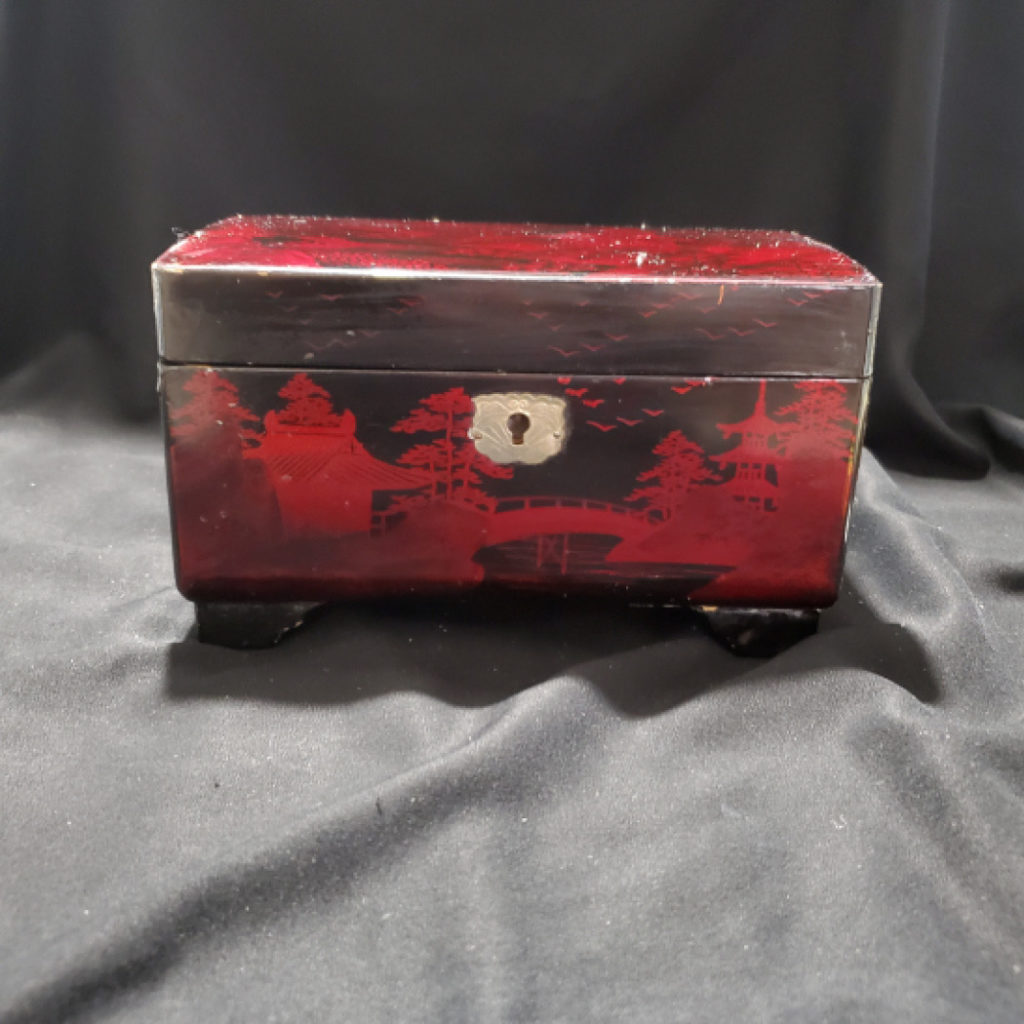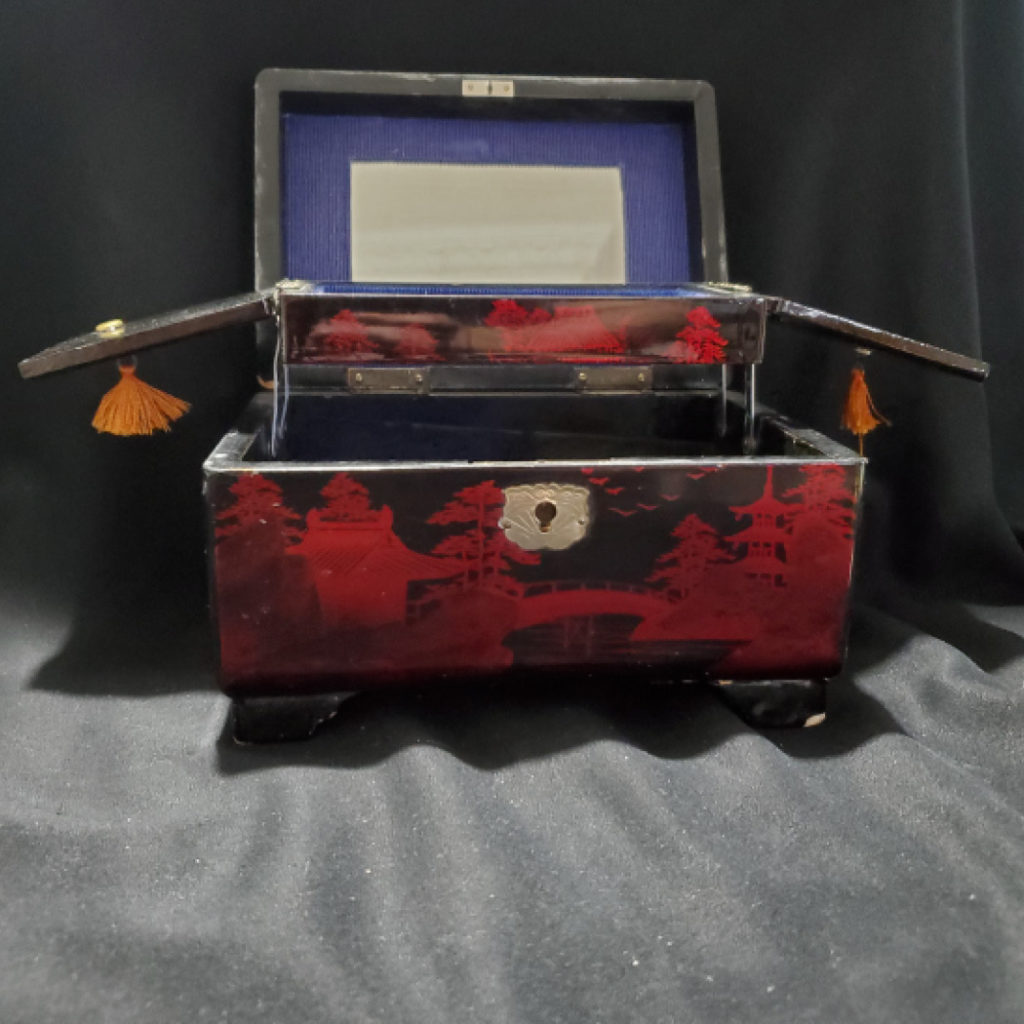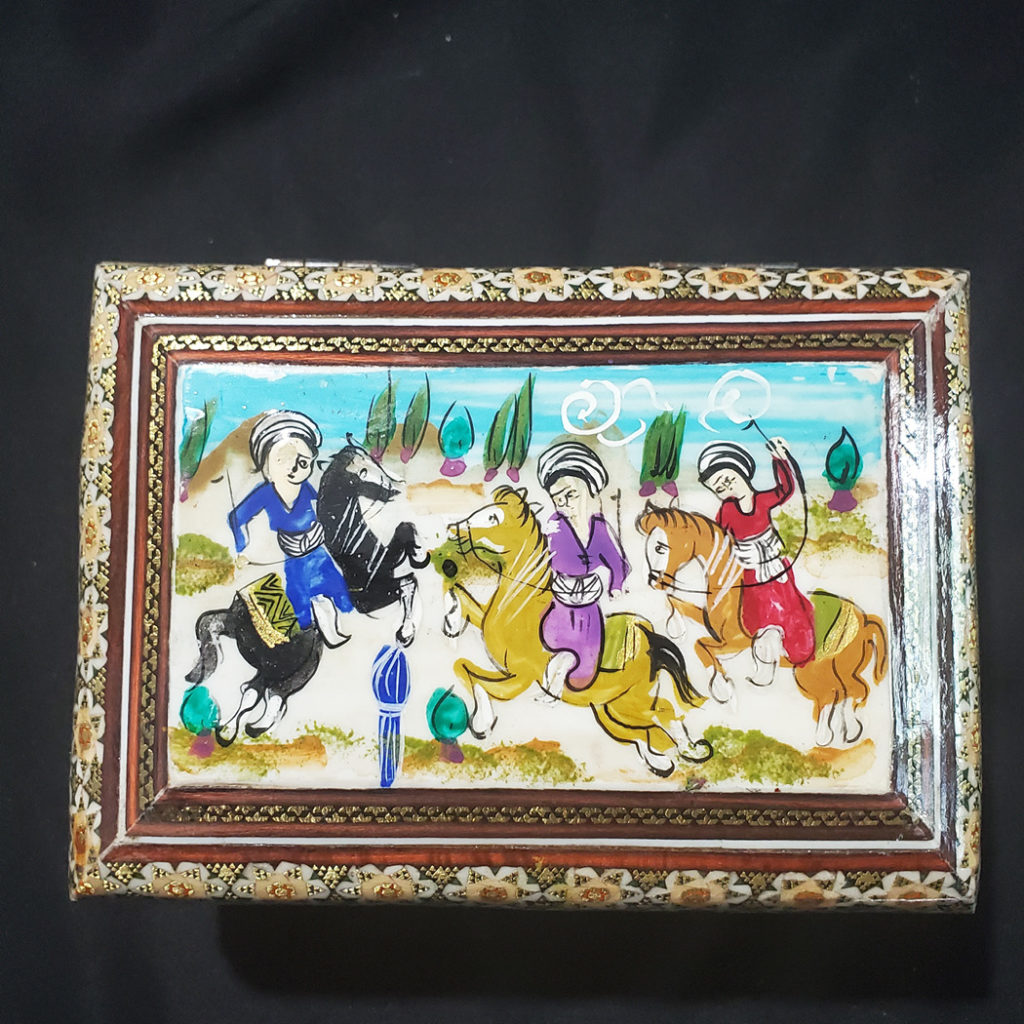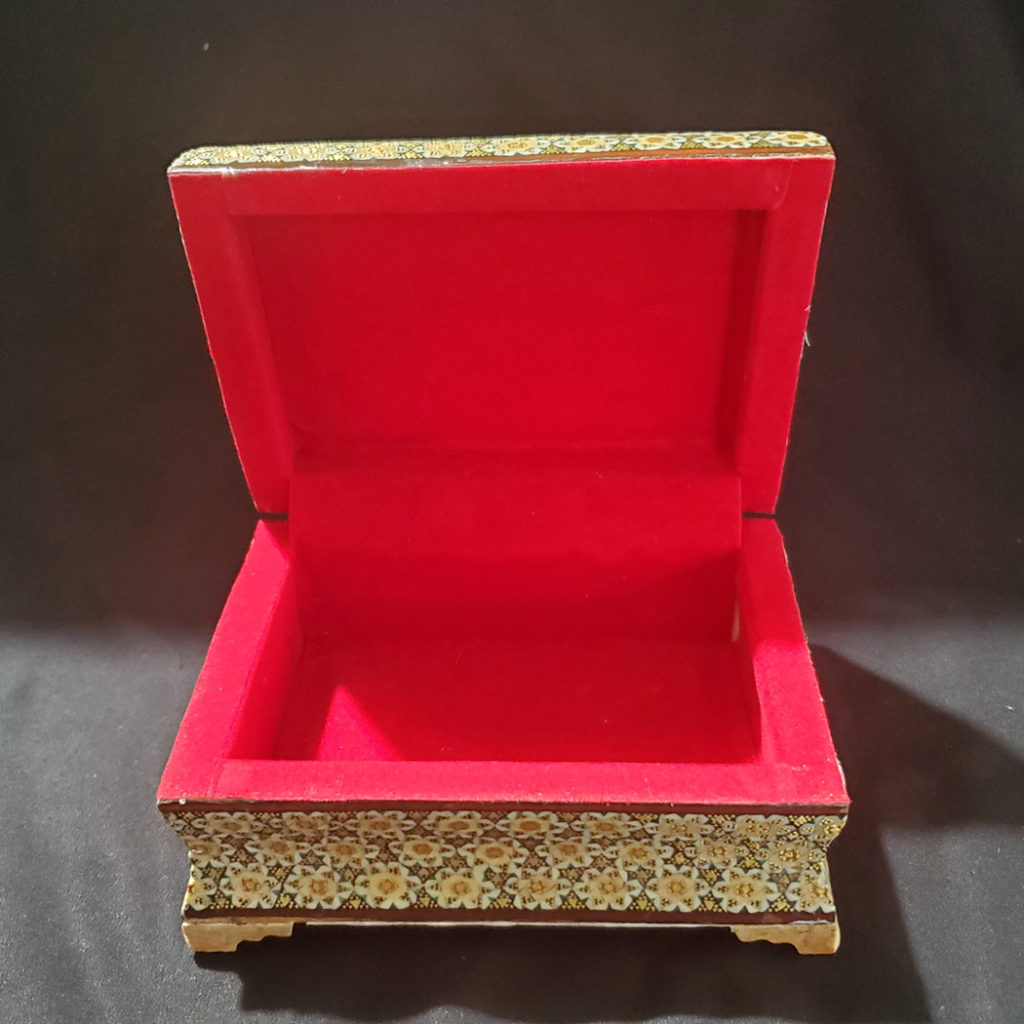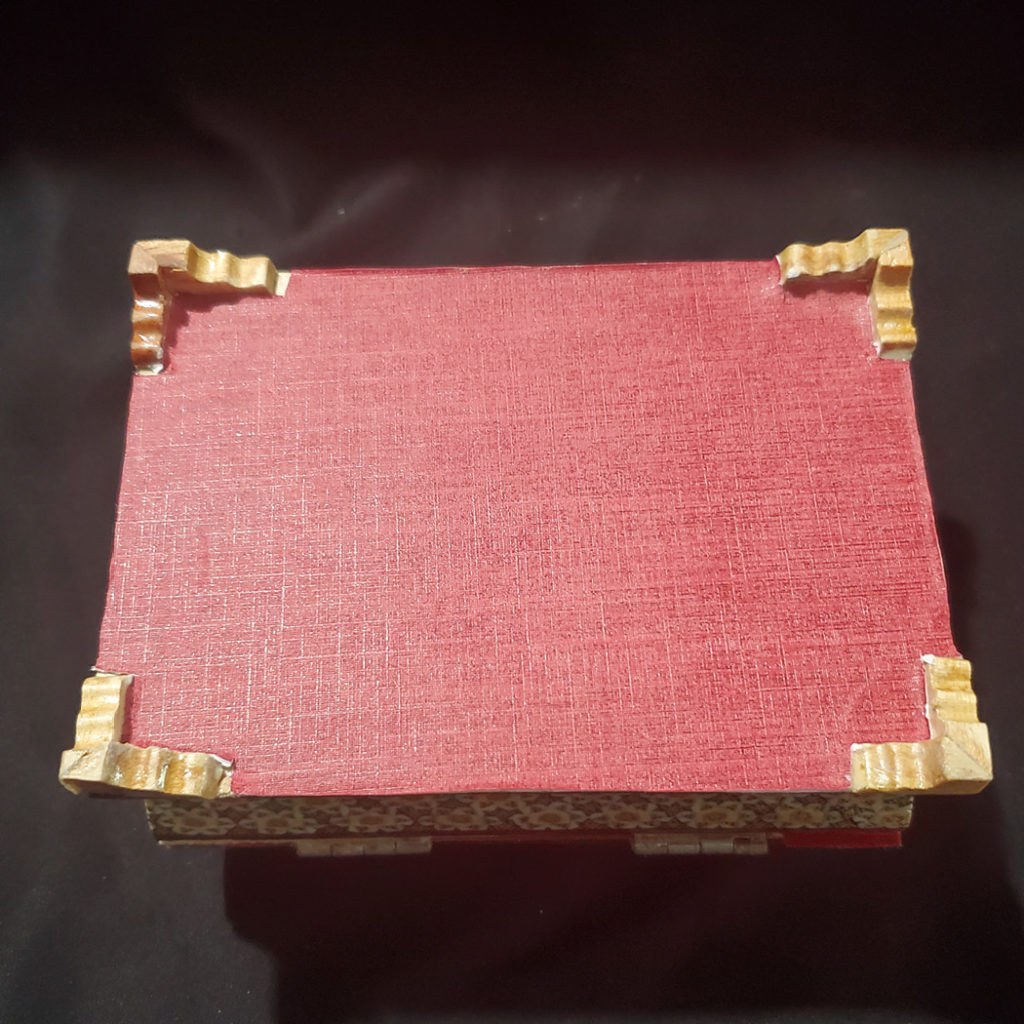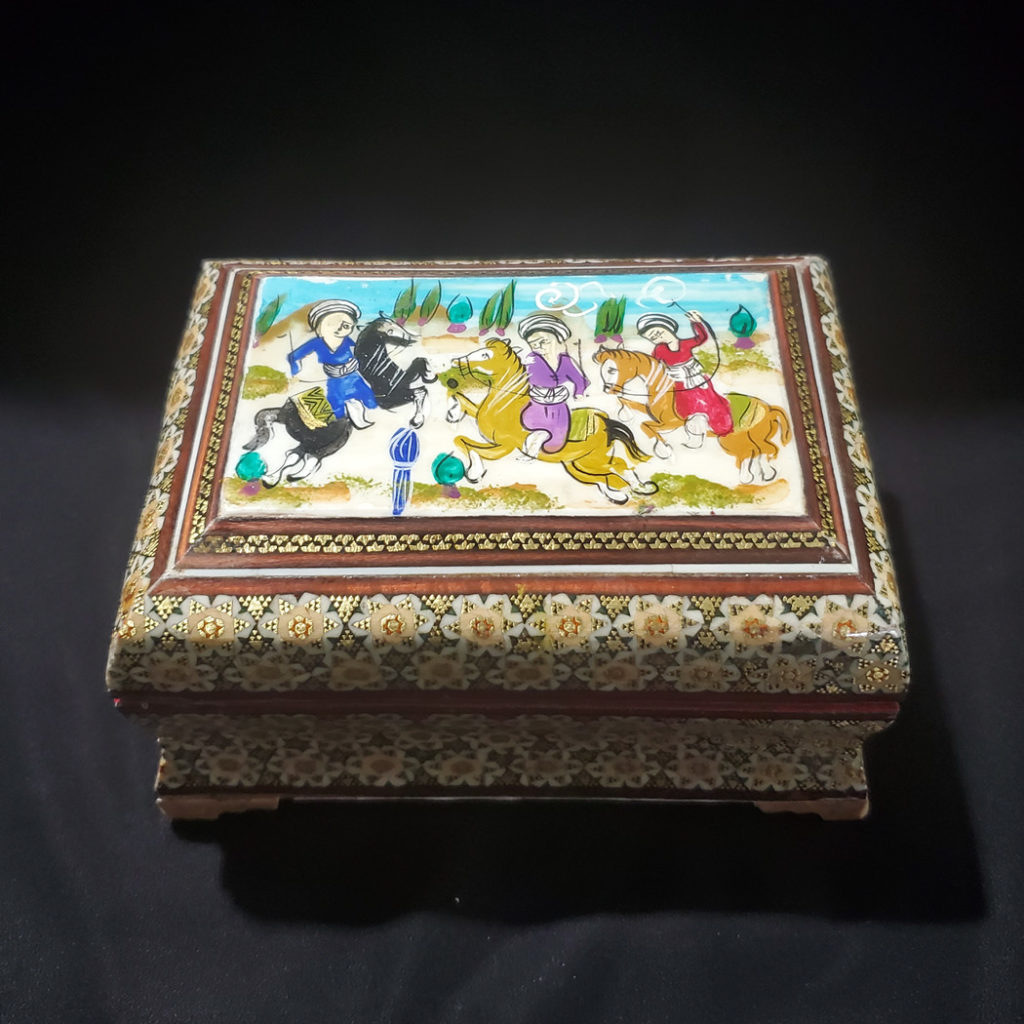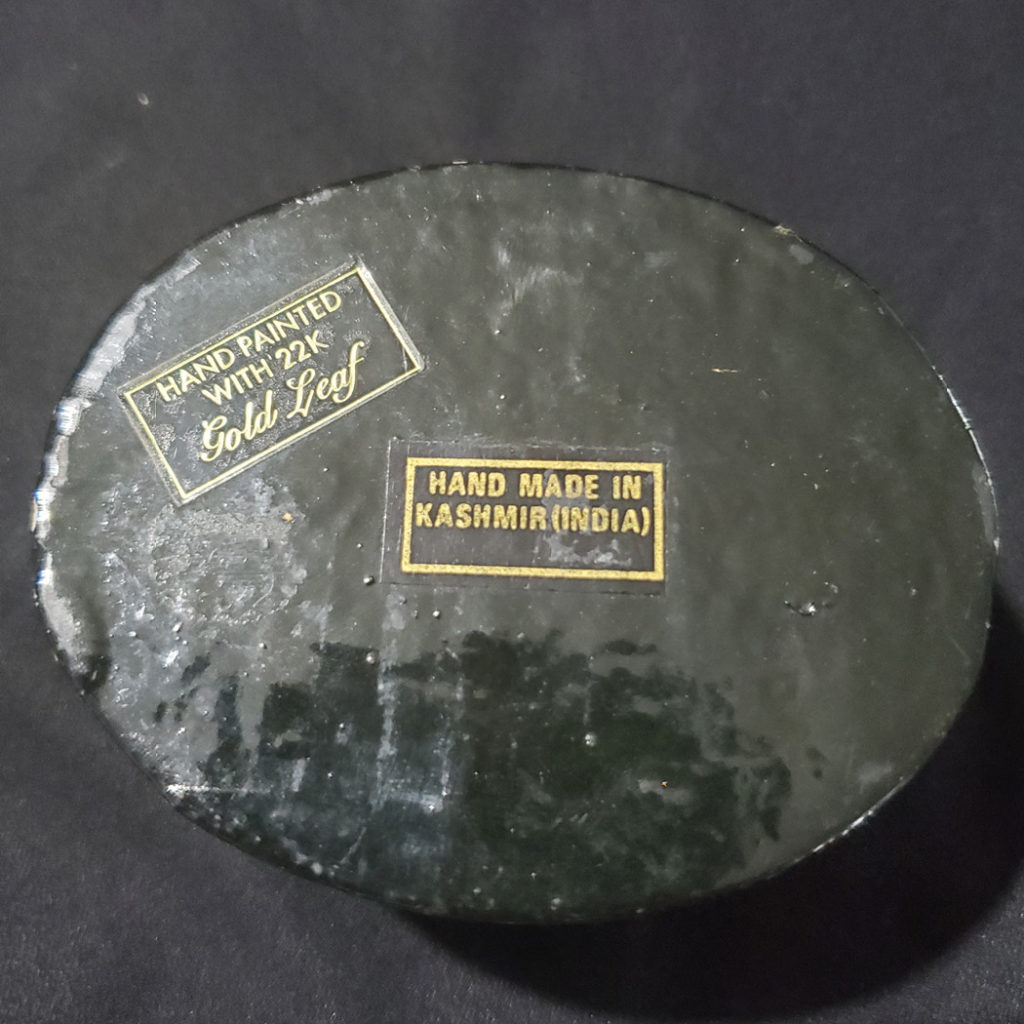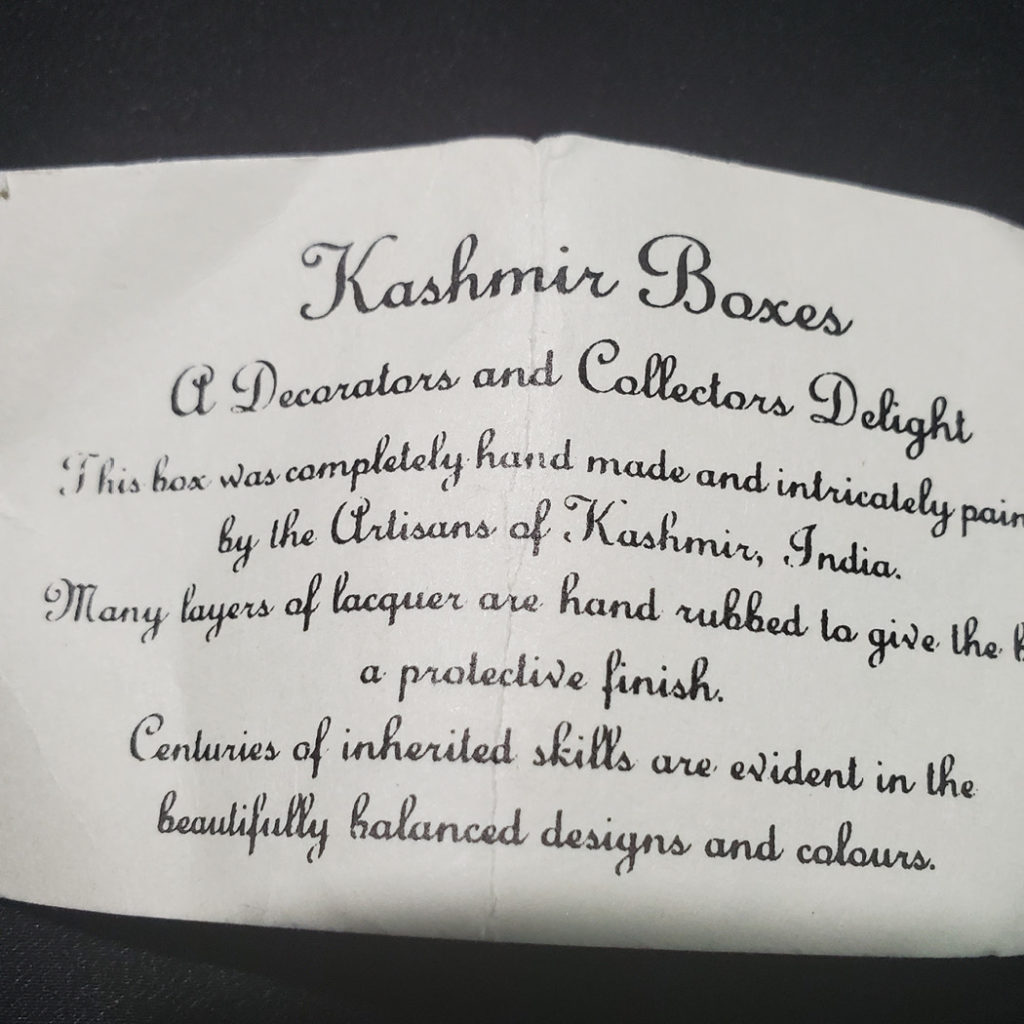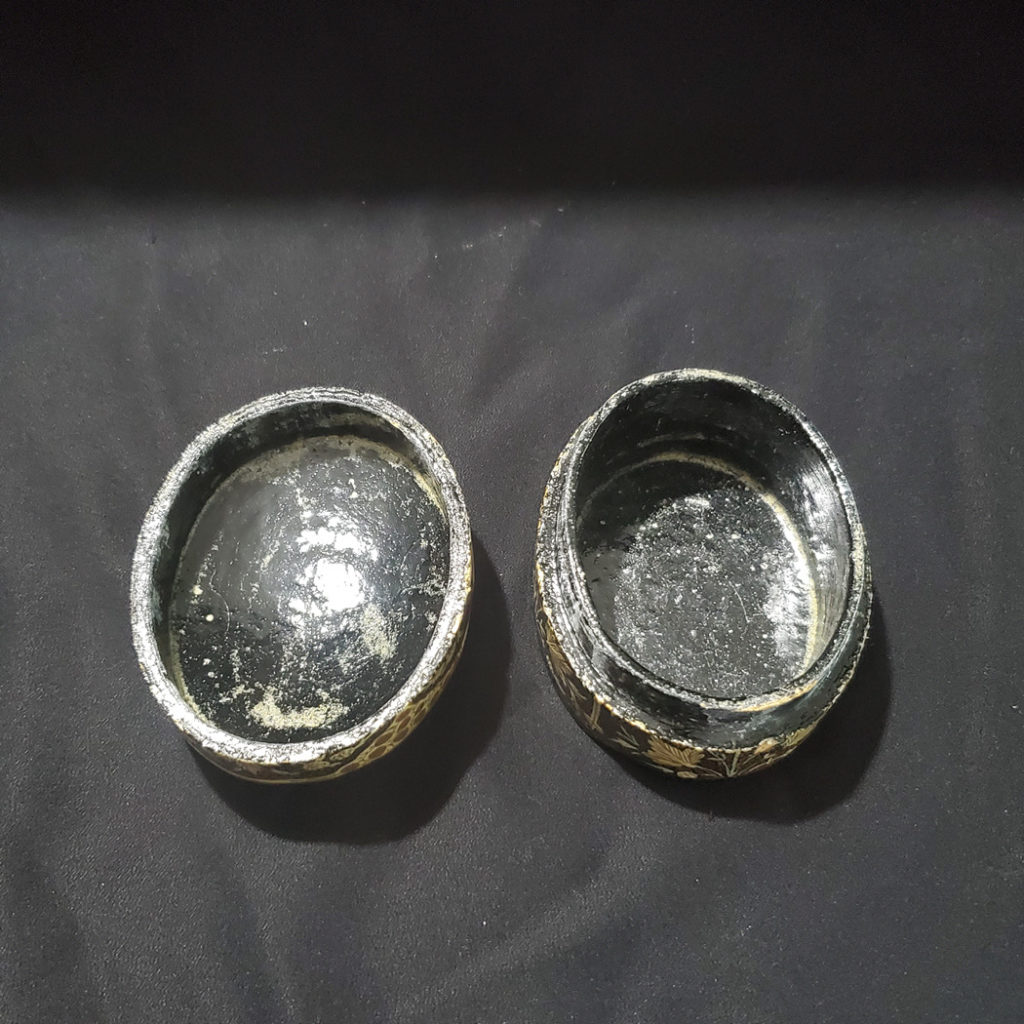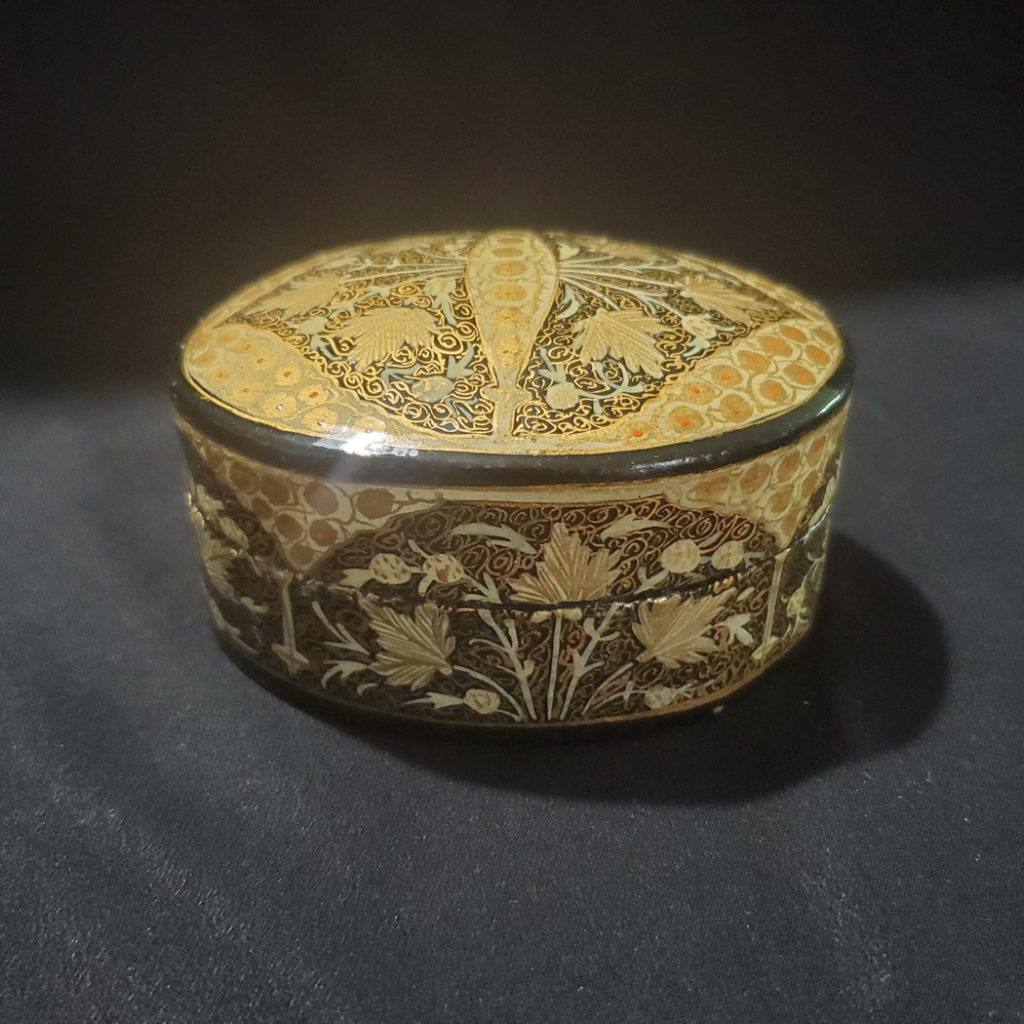#1003 Typically these boxes are made with fragments but the top is a whole shell. Measures 9 x 9 x 6 cm.
#1356 I am not sure about the types of woods in this box. It is handcrafted. It measures 17.5 x 6.5 x 10 cm. It could hold pens, Jewelry or other items.
#1284 This is a small vintage box in perfect condition. The top is leather pressed onto wood. The illustration is an old bus looking like it is from the 1940s. I suspect this was made about 30 years ago. It measures 7 x 4 cm.
#1357 This box is a well made vintage box, I believe from India. It is an open box without a lid, although it had one at one time. It remains attractive and useful. It is 19.5 x 10 x 6.
#1070 Very old Art Deco dresser box. There is a split in the back but it is not noticeable from the top or front or hen the lid is on it. This split from shrinking wood has been there more then 30 years, which is as long as I have had it. It could be used as a jewelry or watch box, or as a dresser top box on an antique. It is 9.5 x 9.5 x 24 cm.
#1276 It has been confirmed that the lacquer tree existed in Japan from 12,600 years ago. They learned to refine urushi (poison oak sap) – the process taking several months. The Edo period (1603–1868) saw an increase in the focused cultivation of lacquer trees and the development of the techniques used. In the 18th century colored lacquers came into wider use.
Early nineteenth-century economic hardship decreased the demand for gold- or silver-decorated lacquerwares. The Meiji era saw a renewed interest in lacquer as artists developed new designs and experimented with new textures and finishes. This piece could have been made anywhere from the end of the 19th century to about 1940. Note the reflections in the picture from the bottom. It is uniformly black underneath but has an almost mirrored finish. The rest of it has aged more, as lacquer does, and has become more matte. It measures 11.5 x 17 x 8.5 cm.
#1072 This is a vintage card box made in the Tatra mountains from linden wood. It includes the original cards and the explanation paper. The tradition of making wood crafts using wood burning and hammered brasswork in Poland is a long one. This particular box is interesting as it has two hinges one for the upper compartment with the cards and a lower one perhaps for betting chips or pads and paper. This box measures 15.5 x 11.5 x 7.5.
#1485 This is an unusual communist memorabilia box made by hand carved in stone. It has even lasted longer than the Soviet Union. It is an interesting conversation piece or a humorous gift. It is 11 x 7 x 4 cm. I am not sure where it was made. It could even be Chinese as they used the same iconography. I have found nothing like this to compare it to.
#1486 This is a small Persian camel bone box with original hand-done painting on it. I have marked it down as there is some damage to the miniature painting but it is still very interesting and attractive. Camel bone boxes are an art form together with miniature painting in Iran and go for quite high prices. This one measures 5 x 5 x 3 cm.
#1487 This is another Persian miniature box with hand painted image. These are tiny boxes so just imagine what is required to paint these intricate images on them. Camel bone boxes are an art form together with miniature painting in Iran and go for quite high prices. This one measures 5 x 5 x 2 cm.
#1564 This is an unusual box in the shape of a round jar. It is 9 x 14 cm.
#1500 The box measures 8 x 4.5 cm. There is a beautiful design inside and a signature on the bottom that I cannot make out. I cannot be sure of the country of origin.
#1501 The green box is signed Kasi it is Kutahya ceramic and is an example of Iznik design. It measures 4 x 6.5 cm.
#1502 The blue and white box is signed K. IO. and Boğaziçi hand made on the bottom. It is an example of Iznik design. It measures 4 x 6.5 cm.
#1503 This multicoloured covered porcelain box or jar is unmarked but of the style of the Iznik pottery of Turkey. It measures 6 x 7 cm.
#1075 Kashmiri papier-mâché is a handicraft of Kashmir that was brought by Muslims from Persia in the 14th century to medieval India. The papier-mâché technique of using paper pulp for making decorative objects was first adopted in Kashmir in the 15th century by King Zain-ul-Abidin. These boxes measure 8 x 11 cm.
#1563 Small red clay trinket box measures 5.5 x 6 cm.
#1086 Boma Haida design boxes are resin reproductions of argillite art (argillite is a very rare black stone). Boma is located in North Vancouver and all their work is made in Canada. They are still operating although this box has not been made in some time. They have been licensed to make souvenirs for the Canadian Museum of History. This vintage box is made of resin and pewter. It is 10 x 13 cm.
#1087 Pillbox made in Italy. Uncertain age my guess is about 25 years. Hinged lid, gold tone, oval shape, removable plastic tray insert, scroll patterns around underneath and in lid. Easy to travel with. 2 x 3.5 x 2.75 cm.
#1135 Mid century Indian brass box with nice patina. It measures 5 x 9.5 cm.
#1216 Kashmiri papier-mâché is a handicraft of Kashmir that was brought by Muslims from Persia in the 14th century to medieval India. The papier-mâché technique of using paper pulp for making decorative objects was first adopted in Kashmir in the 15th century by King Zain-ul-Abidin. This box shows some wear and is priced accordingly. It remains very attractive. It measures 14 x 3.5 x 11 cm.
#1423 Kashmiri papier-mâché is a handicraft of Kashmir that was brought by Muslims from Persia in the 14th century to medieval India. The papier-mâché technique of using paper pulp for making decorative objects was first adopted in Kashmir in the 15th century by King Zain-ul-Abidin. This box is a rather unusual and non traditional design although I believe it still to be from Kashmir. It measures 4 x 6 cm.
#1260 Japanese jewelry boxes covered in black laquer and then wonderfully illustrated, at times with abalone, are highly sought after. The lacquer is natural as a medium for the Japanese considering they have an abundance of the raw material, tree sap from the toxicodendron vernicifluum or Japanese summac tree. While lacquer decoration is an ancient art, it evolved into including wonderfully ornate boxes in the early 20th century continuing through mid century. The box offered here is likely from the 1950s or 60s and contains a wind-up music box.
The prices for these boxes tend to be high but in this case the box is in poor condition despite still being beautiful. This one is missing the lock, the hinged tops to the top drawer and has its share of bumps and bruises. Perhaps its history and character marks have made it more affordable to you. It remains fully useful and an attractive mid century décor addition. It measures 21 x 15 x 11 cm.
#1422 Another lacquer jewelry box made in Japan in mid century. This box is in fair condition but could do with some restoration on the edges or can be enjoyed in its character shape. It is made by Goldwyn Jewelry in the 1960s in Japan. It is 18 x 12.5 x 11 cm.
#1259 Persian khatam began in the 17th century during the Safavid era and is likely a Persian response to Chinese inlay arts. However, the Persian art quickly became something entirely different and much more elaborate. More colours and materials were used such as gold, silver, brass and aluminium and bone. Persian Khatamkari and Marquetry is unique and instantly recognizable. Inlay work in architecture including both wood and tile is a key characteristic of Islamic architecture. It can be seen in cities such as Mashad, Qom, Shiraz, Rey and all other major centres of Iran. Marquetry is particularly famous from Isfahan, Shiraz and Kerman which is where Khatam is mainly practiced.
To learn more about Islamic arts I strongly suggest a visit to the wonderful Agha Khan museum in Toronto where you will find many artifacts including ancient stunning pieces. If you cannot go in person, please visit their web site.
This particular box has Persian painting on the lid. Painting of miniatures goes back to the 13th century. By the 14th century the famous Shahnameh of Ferdowsi had been produced, a work that which has both portrayed and then influenced Persian history and art ever since. there is a well prepared Wiki that gives a good survey of the art form here. 13.5 x 10 x 6.5 cm.
#1261 Kashmiri papier-mâché is a handicraft of Kashmir that was brought by Muslims from Persia in the 14th century to medieval India. The papier-mâché technique of using paper pulp for making decorative objects was first adopted in Kashmir in the 15th century by King Zain-ul-Abidin. This box measures 7 x 8.5 x 4.5 cm.
Boxes
Many people are fascinated by different kinds of boxes. I have quite a few that will be going up from larger more furniture ones to small ones for small things or jewelry. Please come back to see what I find to put up here. Here is an interesting article about trunks with some terminology.


